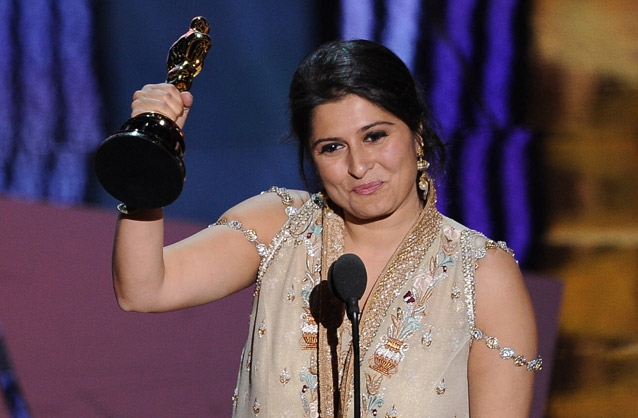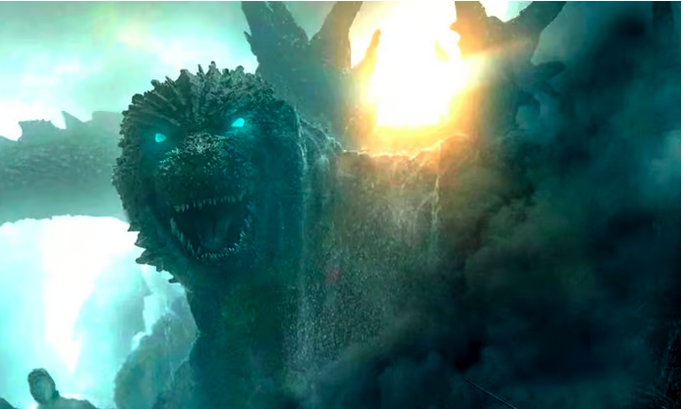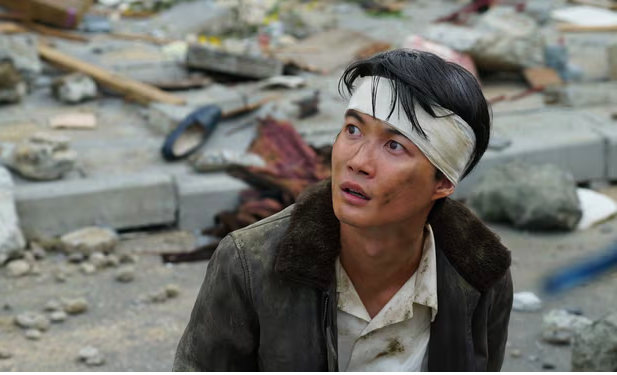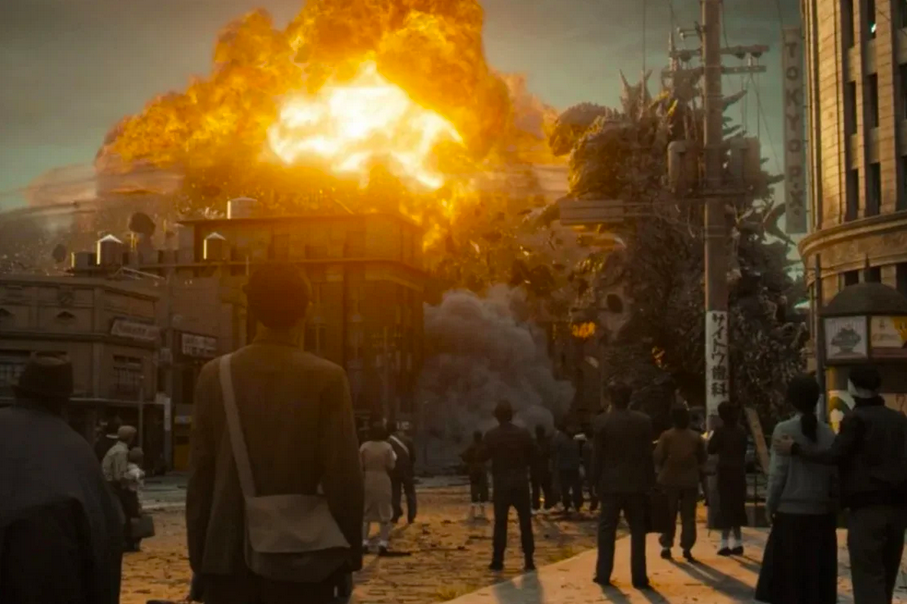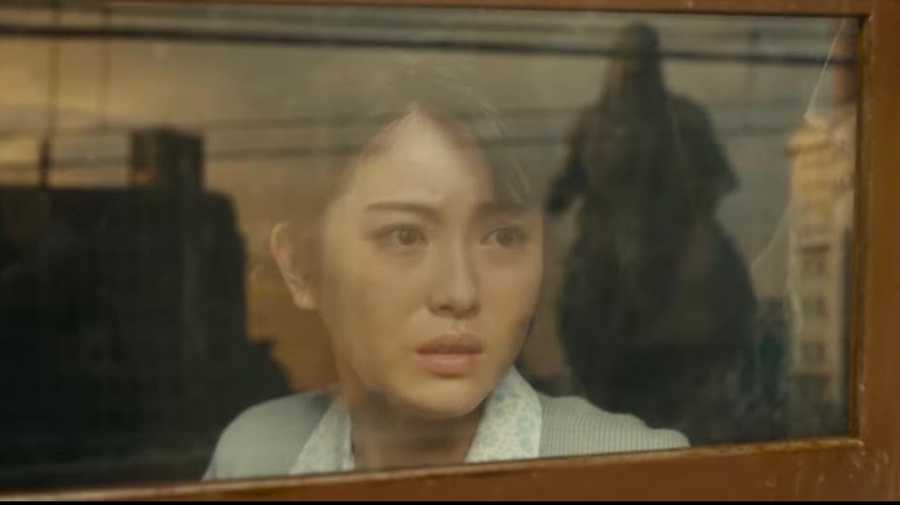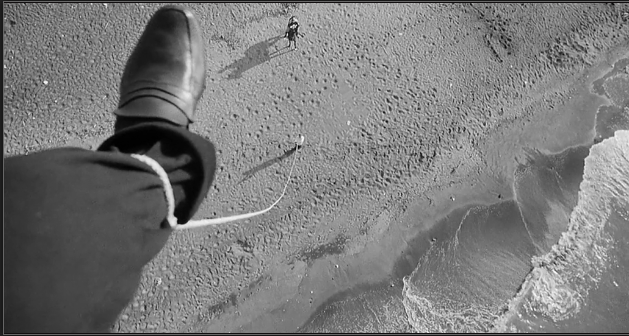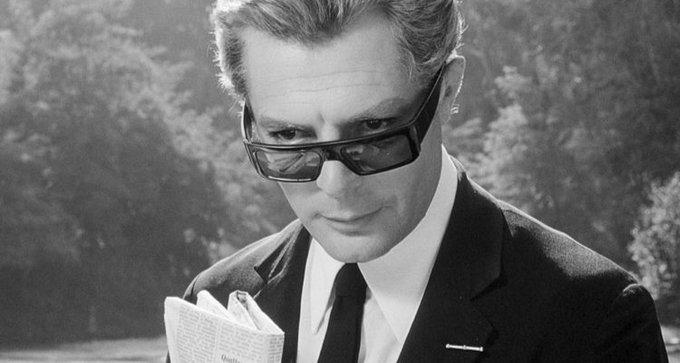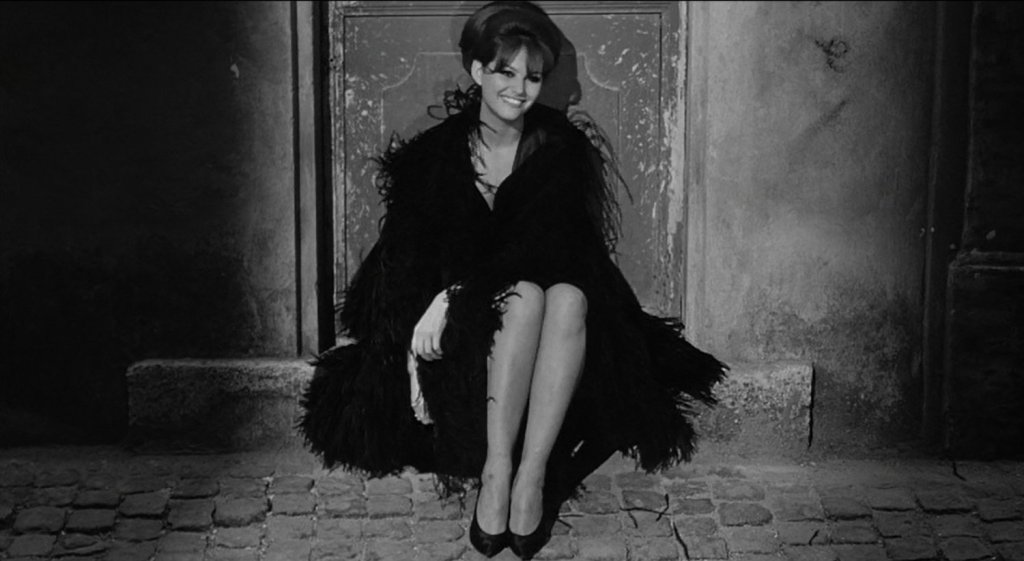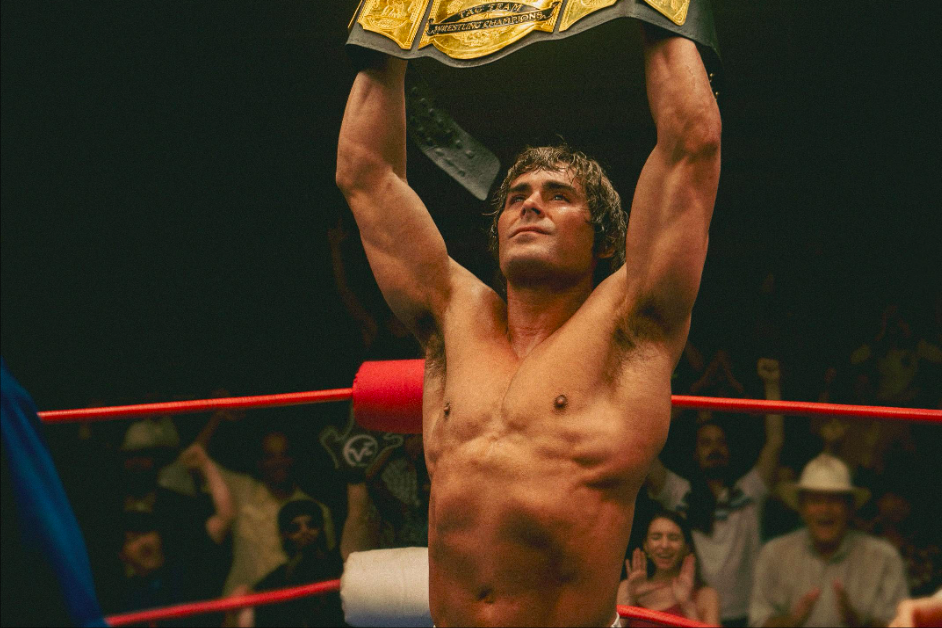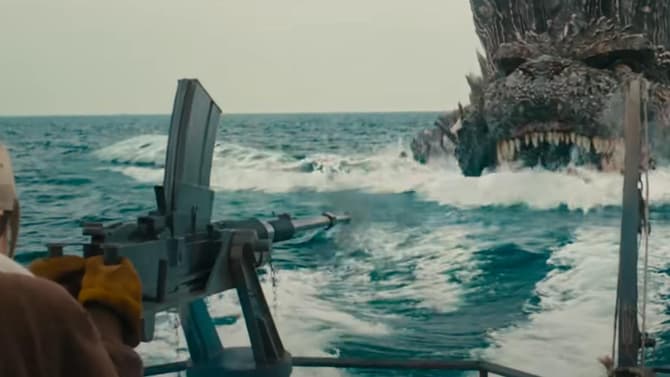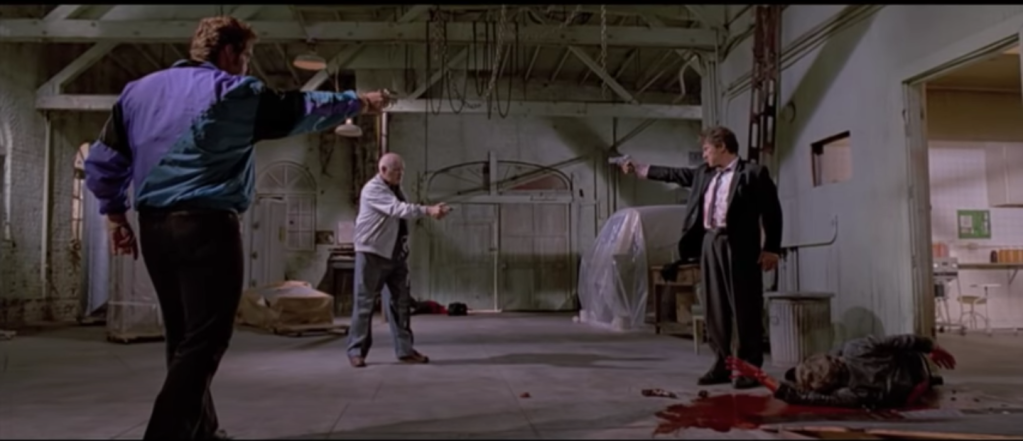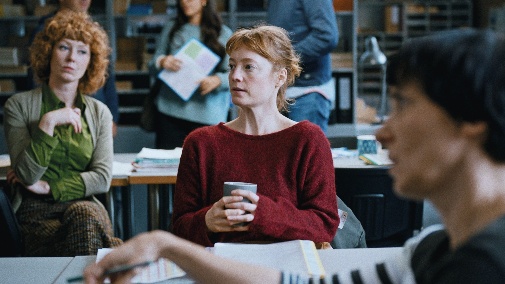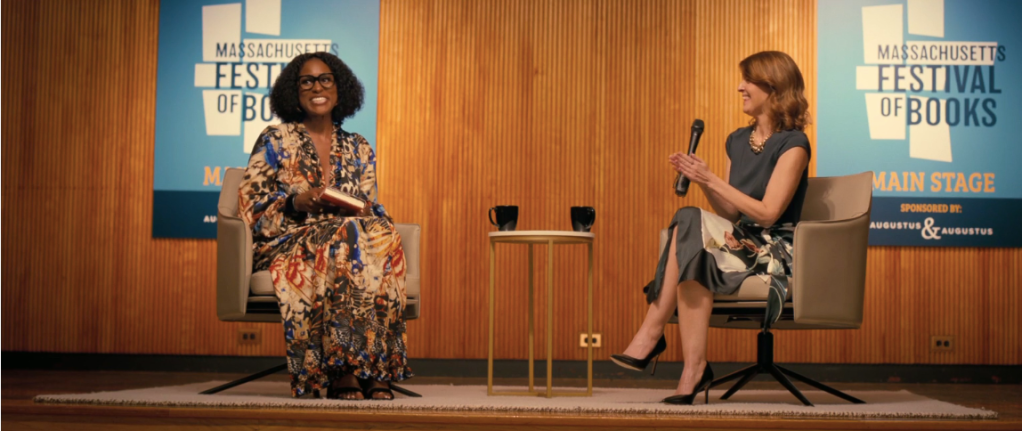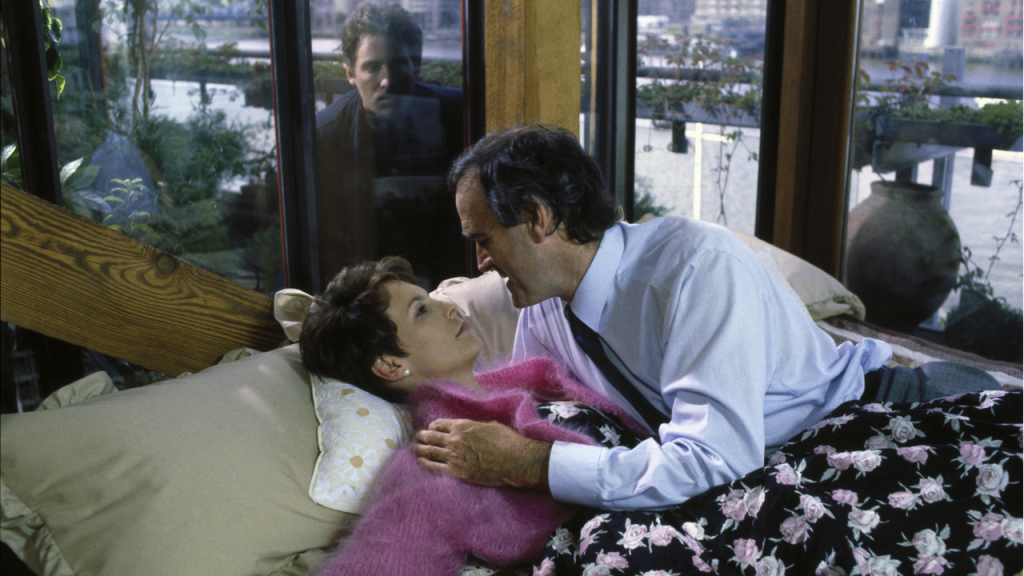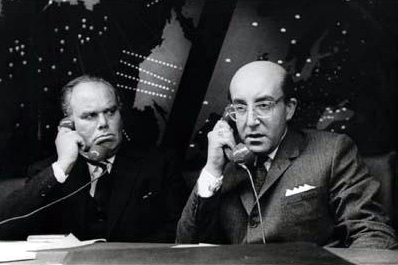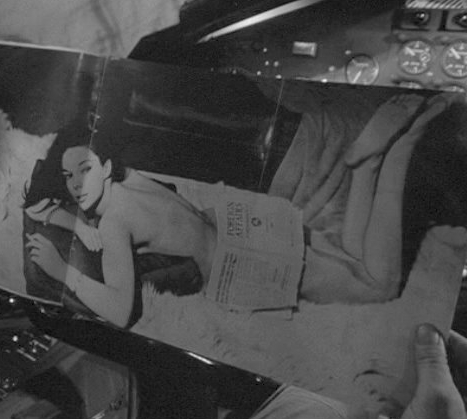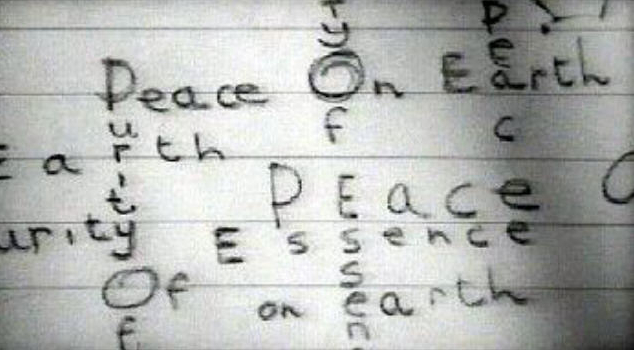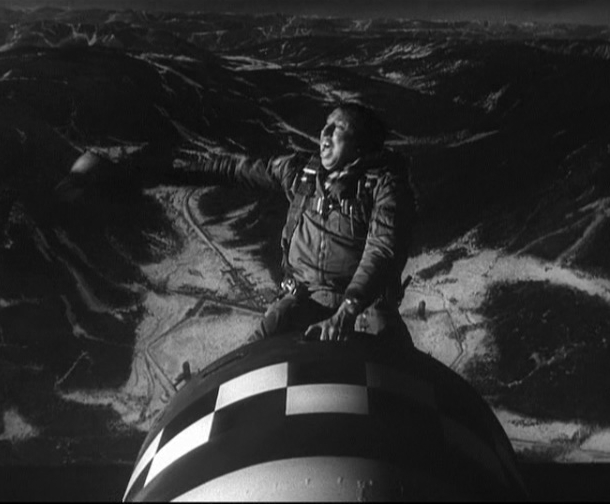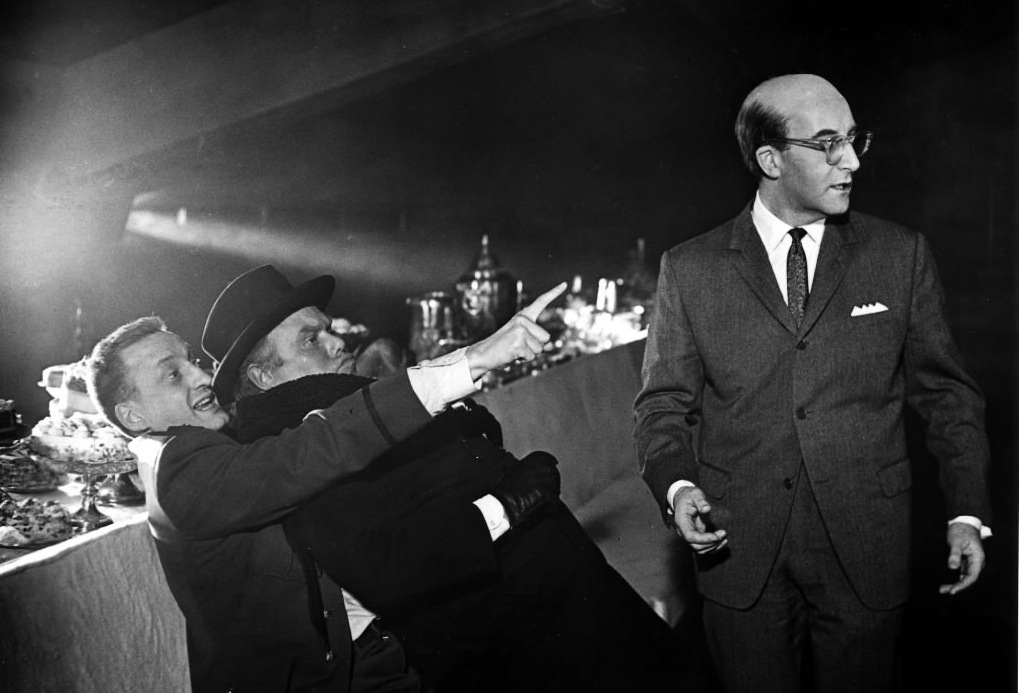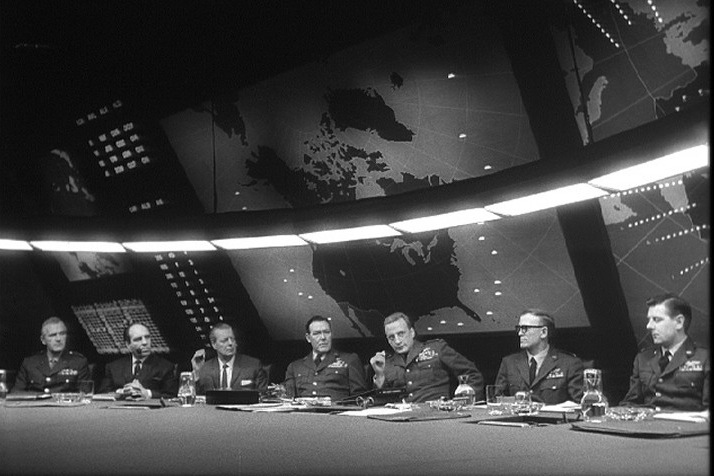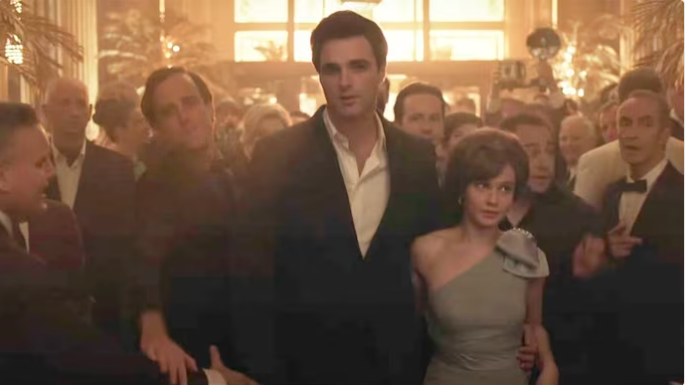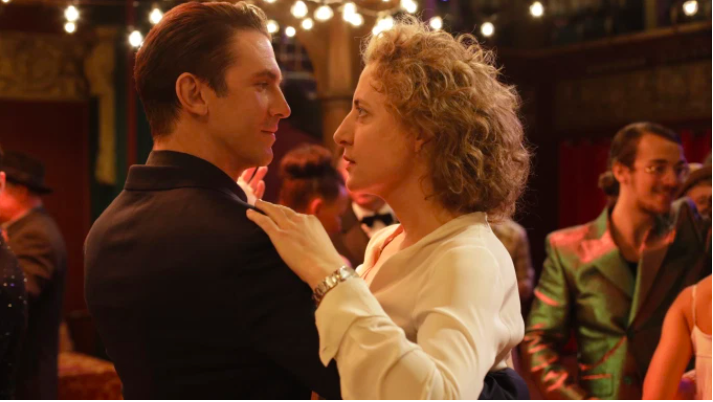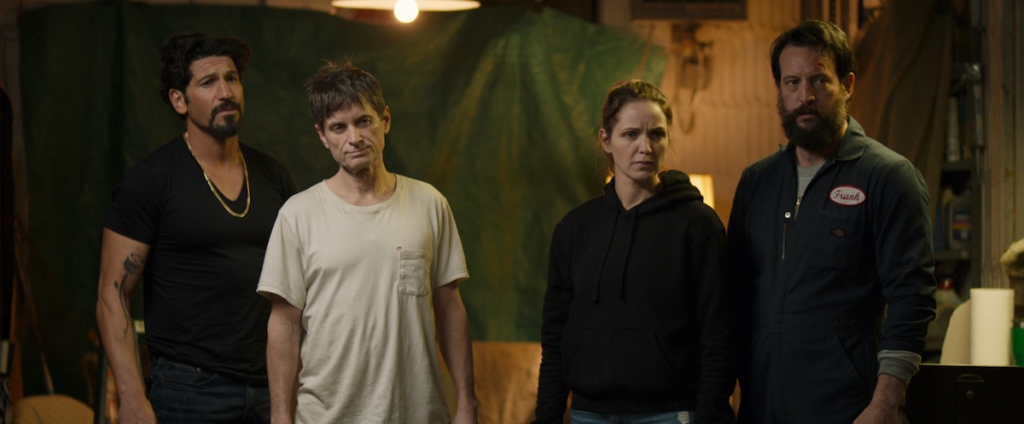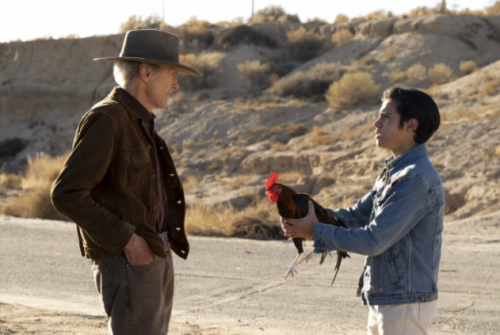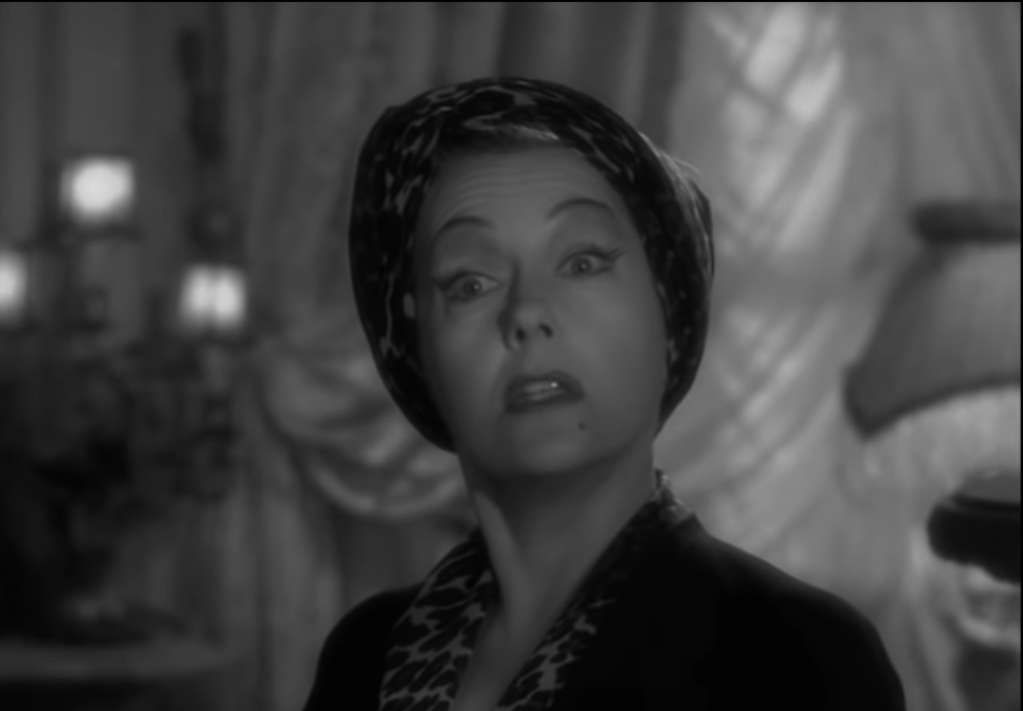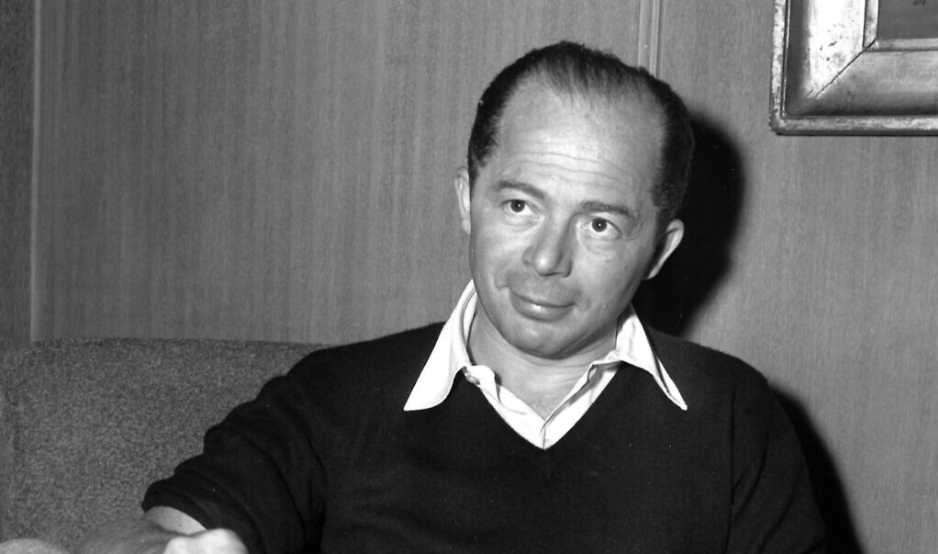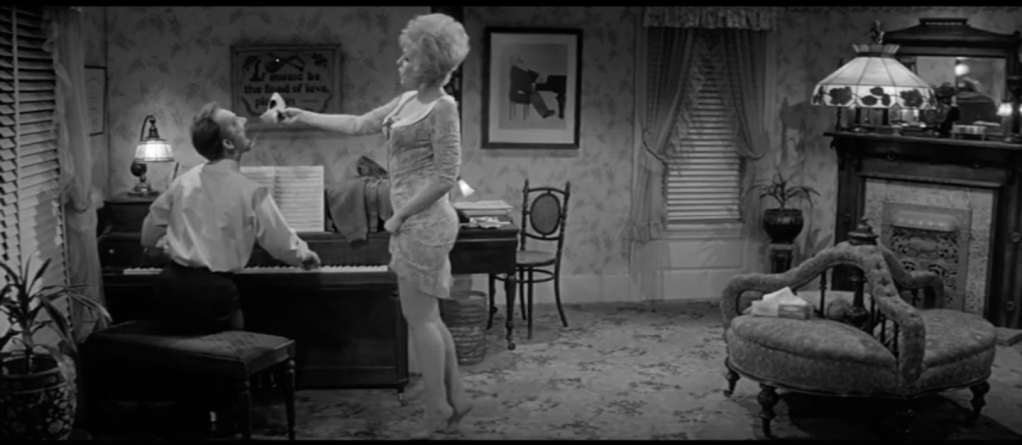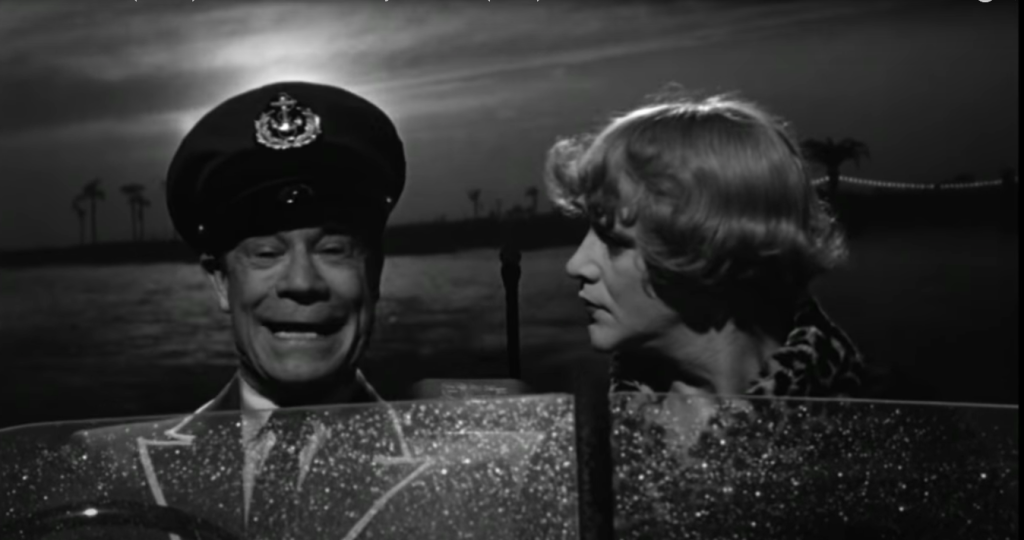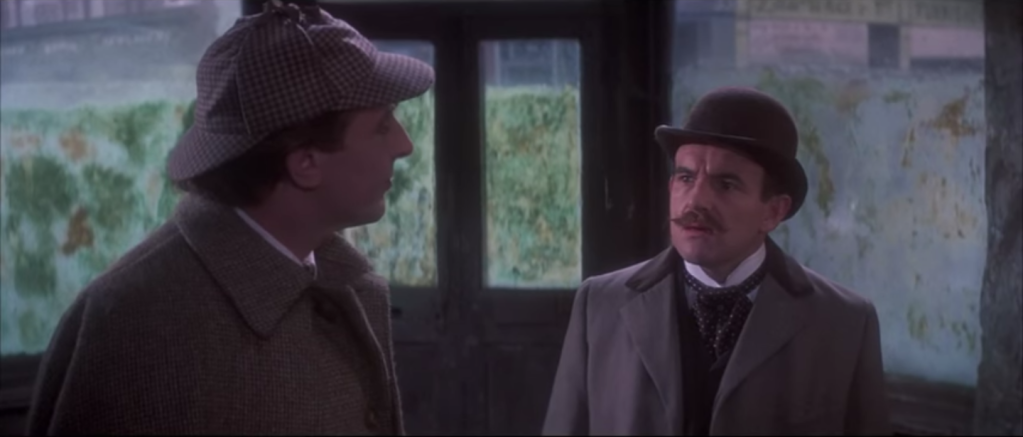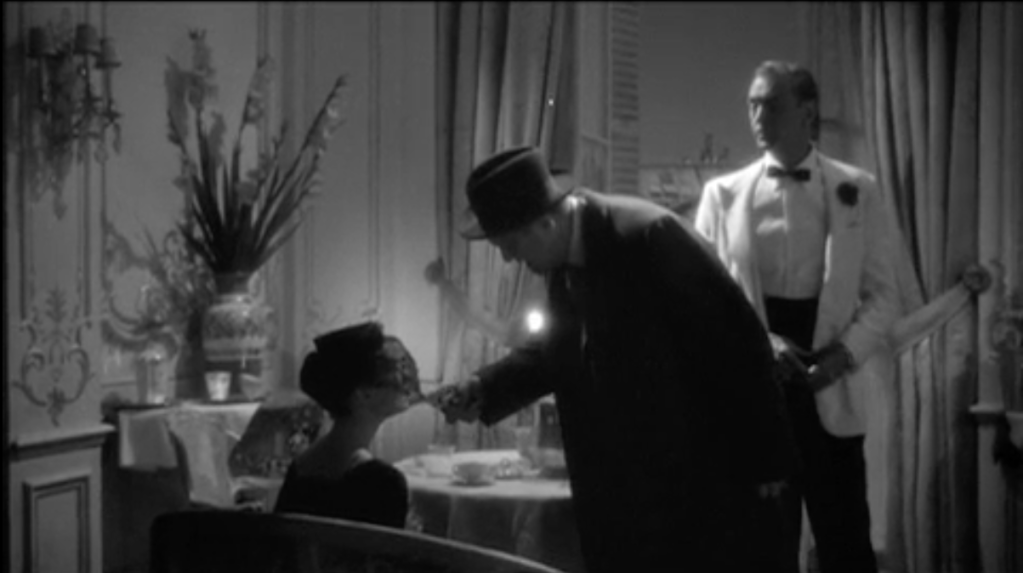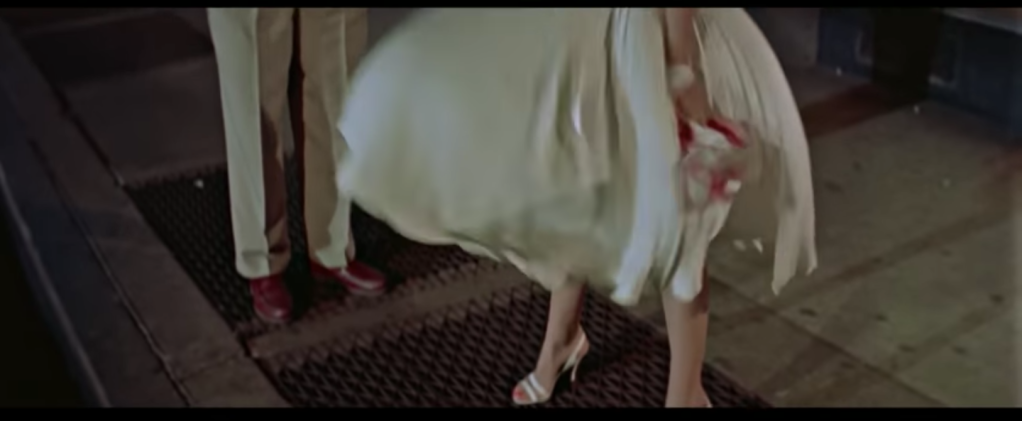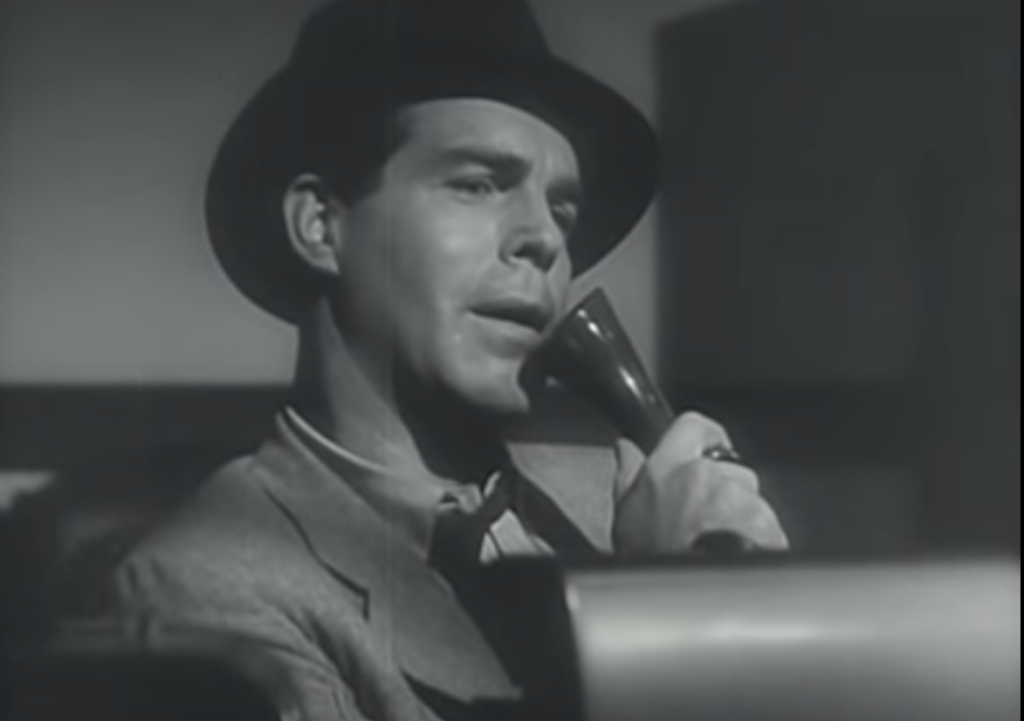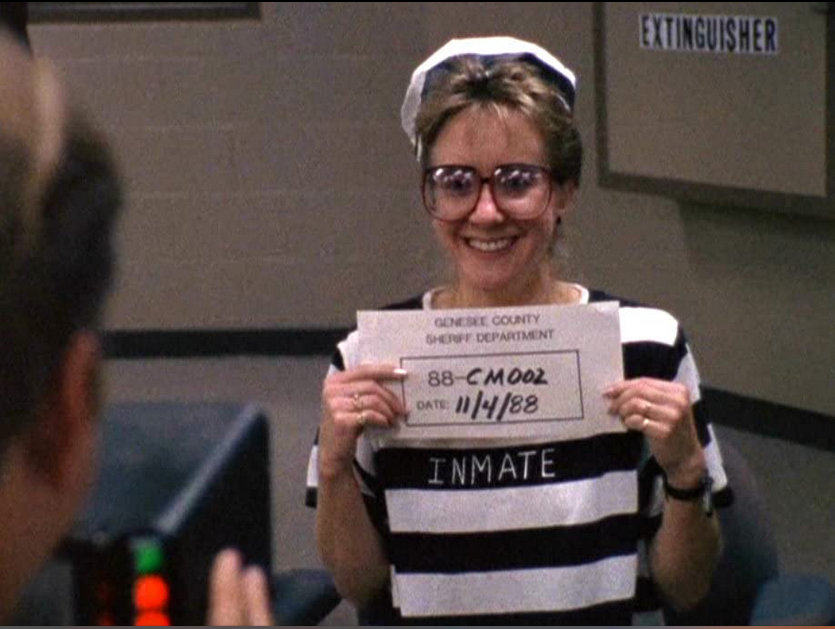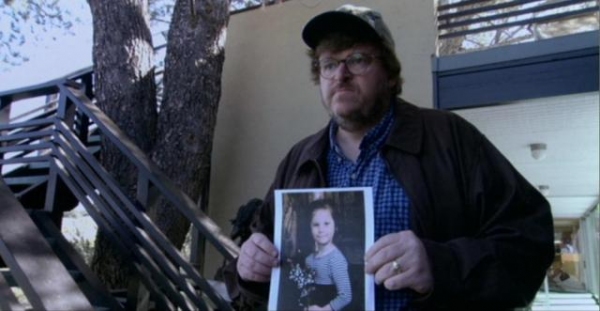Victor writes about STAR WARS (sorta)
Yesterday’s kerfuffle about the director of the latest STAR WARS movie reminded me of this scene from THE MAGNIFICENT AMBERSONS:
This clip ends before we get to the punchline of which I was reminded, when Uncle Jack returns after escorting Eugene out, and says to George:
Well, it’s a new style of courting a pretty girl, I must say, for a young fellow to go deliberately out of his way to try and make an enemy of her father by attacking his business! By Jove! That’s a new way of winning a woman.
I have no stake whatsoever in the STAR WARS INC. products, having seen only the first, second and fourth of the films. But I have some interest in the backlash afoot about the director Disney hired for the next movie in the series. While Sharmeen Obaid-Chinoy’s most recent work includes episodes of MS. MARVEL and an animated series 3 BAHADUR, she won her fame (and two Oscars) as a Pakistan-based journalist making documentaries about the oppression of women and related issues in Muslim countries. A Canadian citizen with degrees from Stanford and Smith, Obaid-Chinoy will be the first woman and the first non-white to direct a STAR WARS film, a fact that naturally was the lead on all the stories and which she herself leaned into.
“We’re in 2024 now, and it’s about time that we had a woman come forward to shape a story in a galaxy far, far away.”
Kathryn Bigelow became the first woman to win the Best Director Oscar by making a war movie and she came up through action and genre films. The best action film I’ve seen in recent years was directed by South Asians (the Tamil blockbuster RRR). John Ford directed two Oscar-winning documentaries. So … there’s plenty of precedent for great action movies coming from biographies, backgrounds and resumes like Obaid-Chinoy’s. Nevertheless, “Pakistani feminist documentarian” doesn’t exactly scream “next STAR WARS movie.” I’ve been accused of hero worship regarding Jean-Pierre and Luc Dardenne, but I’m pretty sure they couldn’t make a STAR WARS movie that the fans would want to see.
The backlash goes beyond mere identity though (if it didn’t, it would be ridiculous and unworthy of other comment). Matt Walsh posted this the other day of Obaid-Chinoy providing a kind of self-manifesto.
I like to make men uncomfortable. I enjoy making men uncomfortable […] It’s only when you’re uncomfortable and have to have difficult conversations that you will, perhaps, look at yourself in the mirror and not like the reflection.
Now this clip is several years old and isn’t specifically talking about STAR WARS or even her work on MS. MARVEL. But personnel is policy and her “about time” words from this week aren’t those of someone who’s backtracked from that way of thinking. And those older words are incredibly shocking to people who didn’t go to Smith or Stanford. And they are, at a minimum, a very bad look for the maker of a commercial film costing hundreds of millions of dollars rather than a crusading journalist (I’m sure her work in that sphere, with which I’m unfamiliar beyond titles and premises, is worthy and important).
I absolutely believe the artists should not pander to the box office. But producers, i.e., the people who hire directors, should worry about the box office. Worrying about the box office is THEIR role. The STAR WARS movies are a commercial product with a huge built-in audience, not an artisanal personal work. Hiring a Pakistani feminist documentarian who says she enjoys making men uncomfortable to direct a film with a pre-existing fan base that is largely male … well, as Uncle Jack would put it, by Jove! That’s a new way of winning an audience!
These sorts of pre-backlashes (and thus arguably baked-in failures, however unjust) happen because people inside the left-culture bubble don’t understand just how they sound to people outside it … which is pretty much what defines a bubble after all. They can’t read an outside room.
Look at that clip again and note how Obaid-Chinoy gets applause for saying she wants to make men feel uncomfortable and goes on in full pedagogic crusader mode, almost like a schoolmarmish Carrie Nation, saying half the human race needs to shut up, agree and obey. And notice how the one male on the stage takes it with meek resignation, like a well-trained housepet. This is a forum where everybody agrees and Obaid-Chinoy says what she does because (ironically) this is NOT a difficult thing to say for her, in this space. (An actually difficult conversation, for most of the people in that room, would spark cancellation calls and intersectionalist anathema sits and accusations of thisism and thatphobia.) But STAR WARS fans are not intersectional feminists. “I like to make men uncomfortable” sounds like sadistic male-hatred to people who have never gone near a women’s studies course. And outside the bubble, the conversation is over and the mind is closed (“you hate men”).
Yet the typical reaction from those who have gone near a women’s studies course and liked it (I’m not linking to the article, which is just hateful snark) is to double down as if disagreement were per se vindication. But if one’s goal is making others uncomfortable, i.e., trolling … I suppose it is.

Japan World War II Apologist, redux
As I’ve already written here, I very much liked the new Godzilla movie, and so did the two people with whom I saw it, both Godzilla junkies. Since then I’ve had four independent conversations with non-critic friends about GODZILLA MINUS ONE, all initiated on the specifics by them, the most recent being Monday, and all of them liked it on more or less exactly the terms I describe in my review. And we know the film is generally popular, managing the amazing feat for a live-action subtitled film of being #1 at the box office the week it opened.
In that review, I noted that I jokingly call myself in my Twitter bio a “Japan WW2 apologist.” It’s an in-joke with a friend who called me that (sarcastically himself), because I could not bring myself to care that Miyazaki’s THE WIND RAISES is about a man who designs a fighter plane as a thing of beauty but leaves out all Japan’s WW2 atrocities (a point of criticism at the time, especially among the wokest Americans).
But in Monday’s GODZILLA MINUS ONE conversation with a co-worker, he told me about a dissent that he had read, in National Review. It’s bizarre, he told me. I said “by Armond White then?” (that meant nothing to him). After having now read it, I don’t know if the more bizarre thing is the review itself or the fact it wasn’t by White (I’m unfamiliar with author Michael Washburn).
Washburn does make one good critical point, that it shares a lot of similarities with JAWS, and he adds that here they get a plethora of bigger boats. But something tells me that his concern is more with something else.
My concern is more with the identity of the good guys in this action-adventure. Godzilla Minus One is set in 1946, and the heroes are Japanese soldiers and sailors who vocally resent their defeat in the war and its lasting consequences for Japan’s empire. …
From the opening, when the kamikaze pilot who could not bring himself to do his duty to the empire in the past watches the tragic deaths of his fellow soldiers at the hands of the monster, through the scenes in which Godzilla ravages the mainland, and defeat has deprived the nation of the means to fight back, to the later scenes when an officer who acts as if the war is still going on gives a rousing speech to members of the demobilized fleet, Godzilla Minus One is in the Japanese military’s corner. You might view the monster as the specter of Japan’s wartime enemies, haunting the psyche of a people, crying out for them to summon their heroic virtues and fight.
There’s not nothing here. I wrote in my GODZILLA review that:
Here is a film that, had it been made in … oh, say, 1954 … would have been taken as an apologia for Japanese rearmament and a social reconciliation with war veterans (as well as the obvious A-bomb trauma theme). It’s made explicit in this film that Japan can’t count on the US to defend it and it now needs war veterans and their military expertise to fight Godzilla. Pacifism isn’t an option socially and the human story is a coward recovering his manhood by fighting (I saw this with my MMA coach and his girlfriend).
But some of Washburn’s claims about the film are dubious. It’s not really the case, either in history or in the film, that the Japanese soldiers and sailors “resent” their defeat. They’re definitely humiliated by it and lament the ruin and death all around them, but they don’t “resent” it in the prideful, revenge-seeking sense the Southerners of 1866 or the Iraqis of 2004 did. IRL, the emperor going along with the surrender and retaining authority quelled a Japanese KKK or Fedayeen. In GODZILLA MINUS ONE, the subject just never comes up. The Americans are mentioned only to note their absence and there’s no blaming them for Godzilla, the latter despite the obvious fact that Godzilla was (and always has been in the movies) the product of the A-bomb attacks.
In Japan’s post-WW2 self-mythology, those attacks are an unthinkable metaphysical evil, the equivalent of the Holocaust to us, not something subject to debate (which they are here, and even opponents of them know this). If GODZILLA MINUS ONE were about vanquishing “Japan’s wartime enemies,” you’d expect at least SOME more anti-Americanism than “they won’t help us against Godzilla because they don’t want to upset the Soviets,” starting with something like “the American A-bombs created this beast.”
Indeed, the way I would put it is that GODZILLA MINUS ONE is about reclaiming the heroic virtues, at a very difficult time, in the name of better fights and of fighting better. On the former, these veterans are plainly using their skills to save Japan, not to rape Nanking. On the latter, there are lines about how careless the Empire had been with their lives, putting them in thinly armored tanks and in planes without ejector seats (all this is historically true), and this becomes a major plot point. And also … sets up the final denouement.
But those claims are just a bit misguided. Washburn’s true bizarrerie is the last 70% of the column. Of the piece’s about 1550 words, the 1100 beginning with “By a strange quirk of fate” are not about GODZILLA MINUS ONE or Godzilla movies at all but an essay about a book on Japan’s World War II atrocities. This is literally 2/3 of the piece:
[The Japanese were awful.]
[Rinse and repeat and repeat and repeat…]If a movie came out presenting recently demobilized Wehrmacht soldiers as heroes — and conveying the message that these Nazis may have taken a licking but still had some fight in them — audiences and critics around the world would rightly revile the film as the morally repulsive garbage it would be. Yet, in the face of all that [Gary J.] Bass documents in painstaking detail, Godzilla Minus One has grown into one of the most popular, lucrative, and, one might even say, beloved movies of the decade.
Something’s wrong here.
Yes, something IS wrong here, and it’s this kind of bedwetting-progressive pseudo-pacifism appearing in an American conservative journal.
Joking Twitter bio aside, I have absolutely no problem with noting that the Japanese fought in World War II like uncivilized barbarians indifferent even to their own survival. Or with cinematic depictions thereof, whether by whites (BRIDGE ON THE RIVER KWAI) or by Asians (DEVILS ON THE DOORSTEP). I haven’t read the Bass book that fascinates Washburn, but whatever might be said of its systematicness and/or any specific new details, it really is no revelation during my lifetime that the Japanese fought like uncivilized barbarians. (I have a very vague memory of an extended family member whose name I can’t even recall now, having been broken by Japanese abuse after he was captured in Hong Kong or Singapore.)
But that doesn’t lead to two further propositions: (1) that the Japanese themselves must view their history as the work of uncivilized barbarians; and (2) that every representation of post-war Japan must center on being / having been uncivilized barbarians.
The first is simply a matter of national survival and national pride, two conservative virtues the rejection of which are central to the current Great Awokening. To put it simply and crudely, self-hatred is not a viable national self-image. It’s 1946 Japan … what are you supposed to do, going forward? And “going forward” means “don’t bomb Pearl Harbor” isn’t an answer. You have hundreds of thousands of blood-soaked soldiers and a whole populace that went along with every manner of atrocity.
Short of replacing the population (though keep in mind that this has been the norm of conquest for much of human history), you have to work with the “material” you have. Your only logical alternatives to national self-hate are to invent self-serving evasions — East Germany claimed it was the repository for all progressive elements in German history; Austria retreated into victimology and a kulturcentrism in which Beethoven was an Austrian and Hitler a German. Or you can start at “Year Zero” like the Khmer Rouge. These courses are not recommended, the last “most” of all.
Every self-respecting country needs a usable national story, even about “last week.” By this, I’m not talking about lying about history, and the verb I chose in point (2) was deliberate — “center.” What is the most-important thing, the alpha and omega? The 1619 Project is not awful because, in one of the anodyne euphemisms often used, it “teaches about slavery,” something to which no sane person objects. It is awful because its aim is “to reframe the country’s history, understanding 1619 as our true founding, and placing the consequences of slavery and the contributions of black Americans at the very center of our national narrative.” But a nation cannot respect itself, and will quickly collapse in self-hatred, if [Something Evil] is at its center. This would be an utterly uncontroversial point if applied to an individual. You can’t, for long, think you’re nothing but a sinner. Washburn is peddling the kind of anti-heroic nonsense once expects in Vox, but not in National Review.
Insisting that Japan’s uncivilized barbarism of 1945 is relevant in the face of an objective threat in 1946 (like say a fire-breathing, radiation-spewing giant dinosaur) is the kind of weird moral purism that masks the moral disarmament and practical delegitimization that one expects from the Wokest of the Woke. They are the ones who insist that some Israeli misbehavior(s) is the cause of Hamas’s October 7 massacre. I even remember way back a discussion board in which a leftist, on the night of September 11, fretted about being worried that he had heard somebody reacting to Bush’s speech that evening by yelling in a bar “get them towelheads” (or “Ayrabs” or somesuch). If only the sinless have a right to fight or use and nurture the martial and heroic virtues, then nobody does. Indeed, maybe this IS the hidden point of the bad-faith pacifist— again, a tactic I’d expect from many venues, but not conservatism’s historic flagship journal.
And to grab Washburn’s analogy by the horns, there’d be nothing in principle wrong with a movie about demobilized Wehrmacht soldiers as heroes and having the fight in them needed to preserve (West) Germany. As long as they’re not goose-stepping or Jew-gassing, what would the objection be? Only the mere fact they had been Nazis a few years ago, a group that’d be mighty hard to avoid in 1946 West Germany (or frankly East Germany or Austria either, but that’s another story). Unless a literal ethnic cleansing and population replacement is the remedy, you can only start from where you are and who you were yesterday. If a monster comes to destroy your capital, the fact you were uncivilized barbarians last year only means you shouldn’t fight the monster to those who are Peak Woke. Or in National Review apparently.
Unseen 80s project 2 — When Harry Met Sally

WHEN HARRY MET SALLY (Rob Reiner, USA, 1989, 5)
It’s the most famous scene in the movie, indeed one of the most famous in any 80s movie … and it exactly exemplifies why WHEN HARRY MET SALLY left me cold. I simply and flatly don’t believe for one second that any woman would fake an orgasm in a crowded deli … or any public place. Especially not for the sake of a debater’s point with a man she only intermittently knows. Noway. Nohow. Not unless she were Emma Stone in POOR THINGS where there are … extenuating circumstances. But a woman tolerably raised in any conceivable society, much less an upper-middle-class late-20th century American woman? Nope.
Nor is this isolated … I never bought anything in WHEN HARRY MET SALLY, which is one long writer’s device masquerading as a movie. Billy Crystal and Meg Ryan are obviously both hugely appealing, but they are playing two of the most written characters I’ve ever seen. They don’t talk like people but like the Chat GPT for Romcom Epigrams (forgive the anachronism … and its cuteness; but if you love this movie, you’d better accept that much). Only their inherent charisma, plus Crystal’s relaxed comic flair (Ryan is trying too hard), keep the movie watchable rather than collapsing from all the preciousness.
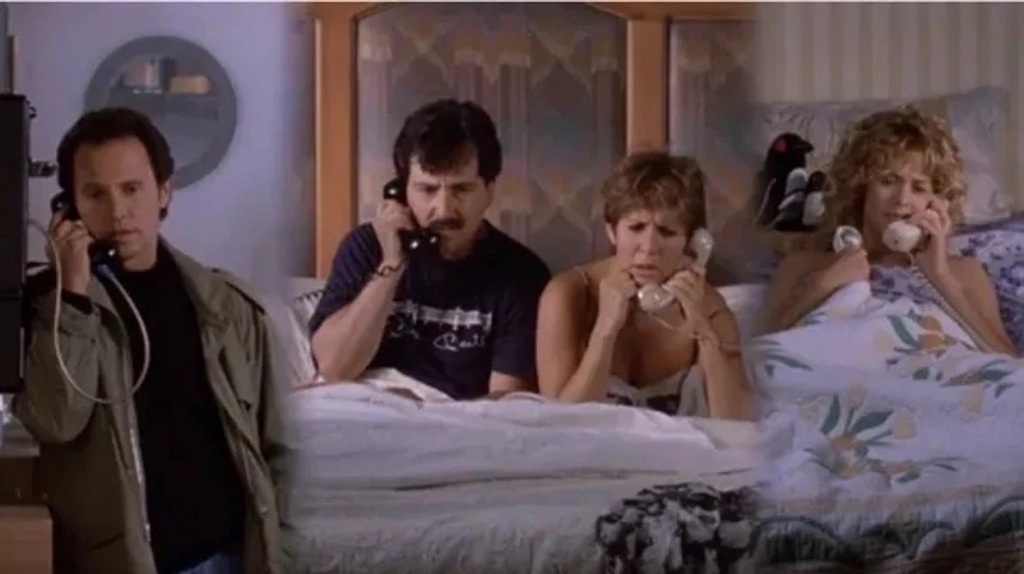
Also let me make two comparisons with films that I love — Woody Allen and Richard Linklater’s BEFORE movies. Indeed between the plain white-on-black credits and the opening use of a pre-rock standard (they continue throughout) WHEN HARRY MET SALLY comes on like an Allen movie, especially once it settles into its Manhattan milieu. Woody’s dialogue is also epigrammatic by any standard, but his plots and characters often manage to surprise us and he varies tones within his films; Reiner is producing a straight formula that hadn’t changed since the 30s plus a fake orgasm. The endings of MANHATTAN and ANNIE HALL (or if you want a less-Olympian standard the “life goes on” in VICKI CHRISTINA BARCELONA) put this happy-end contrivance to shame. Speaking of “shame,” the BEFORE movies actually manage to convincingly portray a couple falling in and out of love amid coincidences and chance over the years, but is so much more minutely crafted and developed in its trajectory that … I wanted to be watching of those movies.
I know that people treasure WHEN HARRY MET SALLY. And it IS very quotable and the characters have a lot of tiks that you could discuss and talk through — Ryan’s Karenesque restaurant ordering; Crystal’s phone messages; and the debates about CASABLANCA and opposite-sex friendship. OK OK … this is a romantic fantasy not a neorealist movie. I get that. And I can hear y’all saying “Victor, you sourpuss. It’s a movie romcom, not a slice of life — but a piece of cake, in Hitchcock’s formulation.”
But like with LOVE ACTUALLY (another treacly holiday confection that makes me sound curmudgeonly) there is a formal device that gives the lie to that excuse. After each break in the contemporary action, Reiner cut to a real-life aging couple giving a documentary style interview about how they met or got together. It’s a Woody-like device and at the end Reiner shows an interview with Crystal and Ryan. Exactly like the “love actually is all around us at Heathrow” montages and collages at the beginning and end of LOVE ACTUALLY, this device tells us that what we just saw IS real life. Er … no. Now TBF to WHEN HARRY MET SALLY, it doesn’t approach the level of toxicity that LOVE ACTUALLY does, if for no better reason than that there is only one inevitable and overdetermined happy ending versus 3627282 inevitable and overdetermined happy endings (number approx). And it is often superficially entertaining; just not a classic.
Films of My Life – 4
The first 3/4 of this was written years ago for a series called “Films of My Life” about the movies that shaped my critical and cinephilic mind, which is not at all the same thing as my all-time favorite films. I had the first five titles mapped out, published two (on THE BREAKFAST CLUB and AMADEUS) and largely written the next two, DR. STRANGELOVE, published last week, and this one on Federico Fellini’s 8 1/2.
8 1/2’s claim to “fame” (in the context of this series anyway) is not only that it was among the three foreign films that I first rented and the only one that I really liked, i.e., the first foreign film I liked. But more than that, it’s been a life lesson at several times over the decades through more than a dozen viewings. It’s officially my fourth-favorite film of all time.
In 1988, I had just gotten the film-viewing bug and begun to camp out at video stores. At the time though, like most Americans at that age I suspect, I had never seen a foreign-language film but I knew that was one of the prerequisites to a proper film education was cosmopolitanism. So at the recommendation Roger Ebert’s Home Movie Guide, I went to an H-E-B Video Superstore and rented three Fellini films — LA DOLCE VITA, AMARCORD and 8 1/2. I watched LA DOLCE VITA first with my father but honestly was quite bored by it (so was my father) because I just wasn’t mature enough, in the sense of my viewing habits, to attune myself to it yet. I remember my dad said something like “it’s about whether Marcello Mastroianni is really happy.” A couple nights later, after having fidgeted my way through AMARCORD alone in my room, he and I watched 8 1/2 together.
At the end, he said “what was that all about?” I replied with a big, stupid grin on my face “I’m not sure, but I loved every minute of it.” I learned later that 8 1/2 can profitably be compared to James Joyce (whom Fellini insisted he’d never read), but on this day I had learned the first key lesson of watching foreign films — that a snooty art movie can still be fun and engaging and witty, even in the absence of the simple three-act structure on which we all cut our teeth as children (and which many never grow out of). And a movie can thrill you in ways you might not be able to explain immediately.
What I loved about 8 1/2 seems obvious to me today — the character of Guido, a director and an obvious Fellini stand-in I could tell even then, as a confused man trying to maintain an appearance to the world; the look of the film and how the black-and-white images of what looked to be actually just black things and white things; the faces and the way they not-really-break the fourth wall by “regarding” the camera rather than addressing us a la Brecht; and the obvious and undeniable virtuosity in every element of the cinematic art — the music, the sound mix, the editing, the way people seem to float rather than walk.
But most of all I dug Fellini’s sense of humor, something that was, to my young eyes on those days, absent from LA DOLCE VITA and AMARCORD (don’t worry buds … I obviously did come around on those two films later). What I think I found most attractive was its self-deprecating quality. When the critic tells Guido that his film is “a series of complete senseless episodes,” and “doesn’t have the advantage of the avant-garde films, although it has all of the drawbacks” I laughed precisely because, on the surface, he’s describing 8 1/2. The episodic and meandering non-plotty quality that (I later decided) made LA DOLCE VITA and AMARCORD hard for me was no longer alien or off-putting to me. Fellini was doing the film equivalent of “why I don’t want to write this essay,” something I actually did as a high-schooler at an open-ended “describe yourself” essay. His sensibility and authorial persona was just attractive to me in a way that to this day I’d only apply more to Alfred Hitchcock. My favorite Roger Ebert excerpt on Fellini came later, from his Great Movies column on AMARCORD:
Fellini was more in love with breasts than Russ Meyer, more wracked with guilt than Ingmar Bergman, more of a flamboyant showman than Busby Berkeley. He danced so instinctively to his inner rhythms that he didn’t even realize he was a stylistic original; did he ever devote a moment’s organized thought to the style that became known as “Felliniesque,” or was he simply following the melody that always played when he was working?
But when I read Ebert on Fellini at the time, the line that stuck with me was from a review of AMARCORD: “Someone once remarked that Fellini’s movies are filled with symbols, but they’re all obvious symbols … [LA DOLCE VITA’s Christ statue] … AMARCORD is obvious in that way with a showman flair for the right effect.” Fellini was a showman, which was the sugar that made it all go down so smoothly. 8 1/2 a movie that slips in and out of reality and fantasy and dreams and flashbacks but (and you’ll just have to trust me on this) I never had any doubt what I was watching. I knew the orgy was a fantasy, that the first view of Saraghina was a flashback, albeit probably a stylized one, that Claudia Cardinale was a real person initially being hallucinated but appearing at the end, and that the critic probably hadn’t been hanged.
You’re perfectly free to take this as a flaw in my sensibility, but 8 1/2 taught me at a very “young” age that complexity needn’t mean obscurity and thus that obscurity is not excused by a desire for complexity. 8 1/2 has nothing in common with MEMENTO except this, but both films tell impossible narratives while being as crystal-clear and well-signposted as a Dick and Jane. I also can’t deny the ego boost of watching a film that might come across as intimidating but being able to follow it, enjoy it and enjoy following it.
I later took an Italian Cinema class in which Professor Millicent Marcus showed two Fellini films (8 1/2 and GINGER AND FRED) and she said Fellini was the only Italian film-maker whom “everybody, even my grandparents in Kansas” know about. For my class paper on 8 1/2, I wrote a rebuttal to Pauline Kael’s negative review of that film, having been shocked that she couldn’t see its greatness. Along with Siskel and Ebert on TV (plus to a lesser extent Ebert as a writer) Kael was the greatest early influence on me as a critic. Her writings were what I aspired to … small-d democratic in tastes, journalistically specific in her descriptions, sure in her judgments, obvious in her sensibility and thus position, funny and personable in her writing. But … “wha’ happen?” I thought (forgive the anachronism). How did she not see what is great here? Here were some of the excerpts from that review that I rebutted.
“can one imagine that Dostoyevsky say or Goya or Berlioz or DW Griffith, or whoever resolved his personal life before producing a work, or that his personal problems of the moment were even necessarily relevant to the work at hand?”
“when a satire on big expensive movies is itself a big expensive movie how can we distinguish it from its target? When a man makes himself the butt of his own joke, we may feel too uncomfortable to laugh?”
“It’s more like the fantasy life of someone who wishes he were a movie director, someone who has soaked up those movie versions of an artist’s life…”
Analogy with too-big houses losing their personality “when the movie becomes a spectacle, we lose close involvement in the story … It has become too big and impressive to relate to lives and feelings.”
I looked for my paper to see if I could quote from it, but, while I know I didn’t throw it away, it must be packed away with the boxes I’ve put in storage. The points I remember making is that the 2 of those 4 artists I knew something about very well DID make work out of their personal problems and wrestling through their demons; that we shouldn’t distinguish a work from its target in a meta-film, otherwise it’d come across as hectoring; that homages from directors like Paul Mazursky and Bob Fosse to Woody Allen and Francois Truffaut seem to indicate it’s not a fantasy idea of a director; and that spectacles are involving too (see … er … D.W. Griffith).
I got an A (I got an A or A- on all 10 of the reaction papers we had to write and Ms. Marcus said before the first that she graded our reaction papers on a curve where only about 10% would be judged as A) and I remember she or the TA wrote “very entertaining and thorough … much of what Kael says is, as you say, inarguable taste, but you do extract out what in her analysis IS arguable.” But the important lesson I got from the paper was … even your idols can be wrong. Or as Kael Herself once wrote:
He is not necessarily a bad critic if he makes errors in judgment. (Infallible taste is inconceivable; what could it be measured against?)
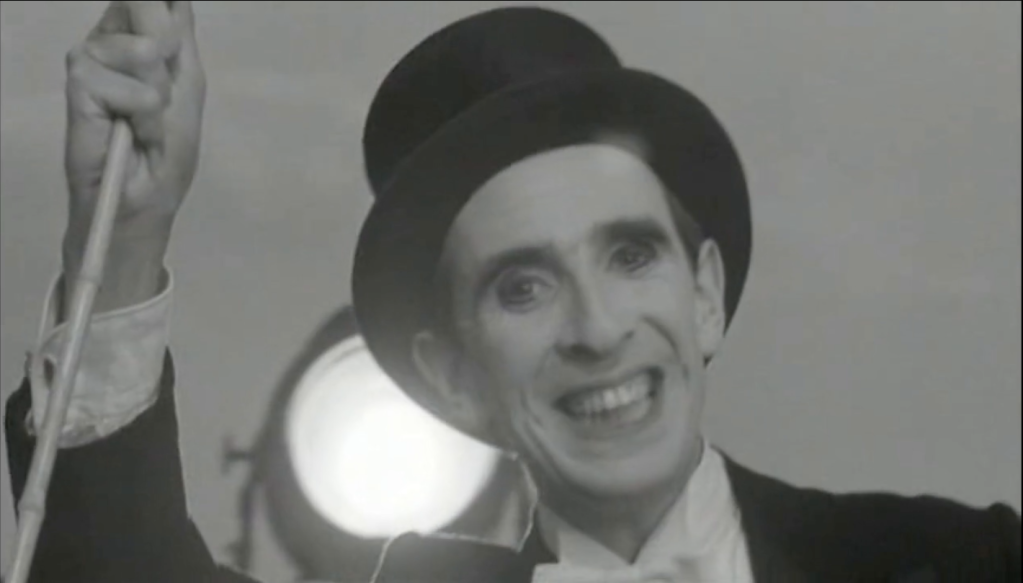
I’d’ve always said about 8 1/2 that “it’s more profound than it seems and not in the ways Guido ‘tries’ to make a ‘profound’ film”… BUT… my most recent view of 8 1/2 came in 2021 one day after a deeply depressing MMA training session in which my coach said (more than once in varying formulations) “this isn’t the time for self-criticism.” But this showing on that day was serendipitous as Fellini’s happy ending became tearfully cathartic and wise, instead of seeming, as it sometimes does, a bit artificial and pat. Or as Kael famously said ”’accept me as I am’ is Guido’s final, and successful, plea to the wife figure (although that is what she has been rejecting for over two hours).”
My greatest roadblock as a fighter is that I’m extremely self-critical and have often thought of “tearing down the set” because of my fight-related failings. That critical quality is what made me an avocational film critic in the first instance, but one friend with whom I’ve shared shirtless physically pleasantries once said to me “don’t review yourself like you’re a movie.” The way the critic puts it in the second-last scene, as Guido’s set is being torn down, is that it is better to destroy than create if you’re not creating those few things that are truly necessary. If I’m not good enough, I should walk away. I can’t accept myself as I am. But no. The clown invites Guido to come out and walk away from the self-criticism. All the characters in the parade look at Guido lovingly. I’ve been told by professional MMA fighters and numerous others that I’m an inspiration to them and I don’t always believe them in their parade, seeing myself, in the critic’s phrase, as the cripple who leaves behind his crooked footprint. But what of this sudden joy that makes me tremble, gives me strength, life?
On that day, Fellini gave me a reason not to tear down the set.
Zac Efron. Wrestling picture. What do you need, a roadmap?
THE IRON CLAW (Sean Durkin, USA, 2023) 5
So the Von Erichs are another thing that Jimmy Carter effed up.
More seriously … the opening subjective shot is amazing. And my gut was personally kicked (and “stiff”) watching this after a training day so shitty I cut it short in despair. The physical plant, looks and in-ring action are great and indeed pro wrestling, because it’s staged, might be the ideal “sport” for the movies to portray. The relationships and rivalries among the brothers sometimes work; but the problems … WHOOOO! That WHOOOO! is actually the only complaint I’d make about the wrestling, other than that there’s not enough of it. The guy who plays Ric Flair isn’t convincing. It’s not just that the voice is wrong, but he just hasn’t got … it. That’d just be caviling if THE IRON CLAW as a whole were great, but as it is …
The basic problem with this movie is that it’s just a lot of events over decades, or “biopic shapelessness.” The title of the post is a Coen Brothers joke, but I wish it weren’t applicable. If you walk in knowing the basics of the Von Erichs’ history (and I did as I was a huge pro wrestling fan — a mark probably — at the time and saw them wrestle on TV many times), you don’t need a roadmap. But all the film gives you is one. Such thematics as there are (besides “bad … <yawn> … dad”) are also just plopped in in a moment. THE WRESTLER told a story; depicting IRL events is not telling a story. The ghost of Chris also haunts the film and I’m just not convinced that his death would have been too much tragedy as Durkin has said. There’s already A LOT of that and the absence of one becomes a greater presence when it’s “only” be a matter of five brothers dying rather than four.
Despite its 132-minute length (the film blessedly doesn’t feel that long), there’s still just too many events to cover. Whole threads get reduced to one scene or asides … Kerry jumping to WWF, Kerry’s painkillers, Kevin wanting to sell WCCW, mother’s religiosity. Mike’s in-ring career is unbelievably (in the bad sense) brief and teleological — we go from him never having entered the ring to in consecutive scenes having one hard day training to his career-ending, near-fatal shoulder injury.
There are also TWO unforgivably sentimental happy endings. The earlier one is exactly the sort of cloying scene that makes atheists think Christians are deluded sugarcoaters, while the latter happens merely because it happens. Kevin is left “standing strong” alone for no reason, except that the death parade ended IRL so the movie now must too. The roadmap is over.
No camp, just fun
GODZILLA MINUS ONE (Takashi Yamazaki, Japan, 2023) 8
Remember how TOP GUN: MAVERICK last year was “what if TOP GUN were good?”? And I joked below about AMERICAN FICTION as “what if BAMBOOZLED were a good and smart movie” Well, here is “what if GODZILLA were good?” It’s a pleasure to see a monster movie like this with first-rate production values, that takes itself seriously, has not a trace of camp or cheese value, and has a compelling human drama as its core (as well as a monster that is pure evil, not some misunderstood whatever).
I jokingly call myself in my Twitter bio as “Japan WW2 apologist.” Here is a film that, had it been made in … oh, say, 1954 … would have been taken as an apologia for Japanese rearmament and a social reconciliation with war veterans (as well as the obvious A-bomb trauma theme). It’s made explicit in this film that Japan can’t count on the US to defend it and it now needs war veterans and their military expertise to fight Godzilla. Pacifism isn’t an option socially and the human story is a coward recovering his manhood by fighting (I saw this with my MMA coach and his girlfriend).
I didn’t realize going in how much of a Godzilla fan Nicholas and Jessica were (I knew he was a genre film and anime fan). But both had seen numerous iterations of Godzilla. FWIW … they both thought it was amazing and he said he had a tear in his eye at the climax. It was Nicholas who told me afterward that this film is a return to the Toho original in portraying Godzilla as pure malevolence, while many of the subsequent films have at least somewhat “humanized” the character. He also told me that this is a return to having Godzilla move like a dinosaur (i.e., short, inflexible front limbs and stiff hips … occasioning a joke about my jujitsu) rather than almost human-like; which in the 1954 film was a result of the budget/technology necessity of being a human in a rubber suit. They were also both amazed when I told him the one thing I knew about the film going in (besides the generally positive buzz) … that it was made for $10 million. “Good gawd, what’s Hollywood doing with all its money” (or something close to that) was his reply.
Gonna see this one again before year-end voting
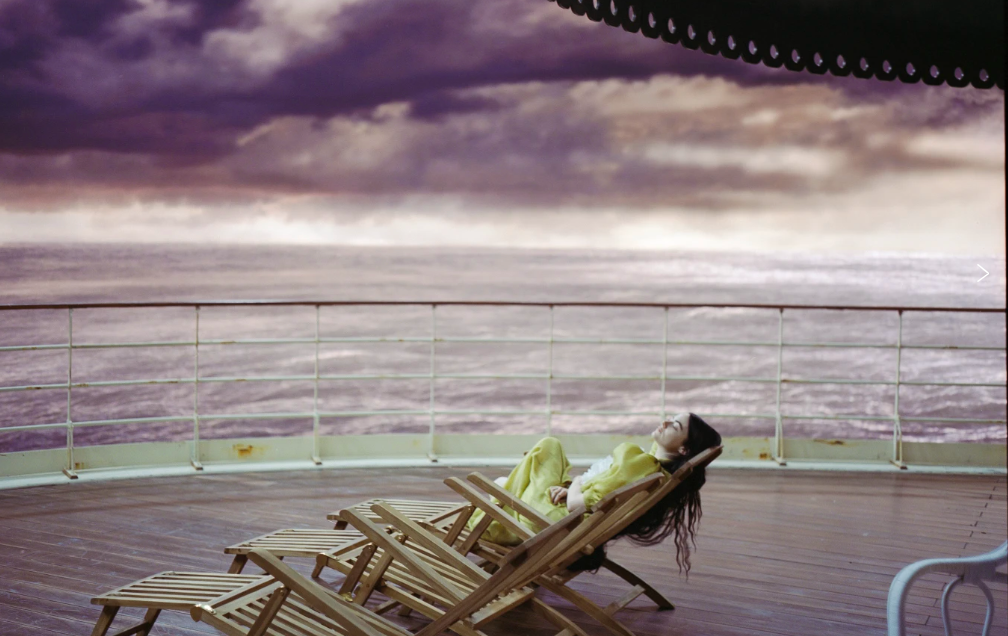
POOR THINGS (Yorgos Lanthimos, Britain, 2023) 8
Lanthimos is nothing like the Dardennes, except in one respect — his sensibility is extremely Victoresque. His demento sense of humor and his ideas of meaningful stylization are so like mine that he probably just needs to be himself and fully realize and finish his film (I haven’t been crazy about some of his non-endings) for me to love it.
There’s apparently some notion afoot here that Mark Ruffalo is giving a bad performance as Emma Stone’s beau in this film adapted from Glaswegian author Alasdair Gray (a formulation upon which fellow cinephile Chris Ward and I insist). He is ideal … even the “inconsistencies” — he’s an invader into the hermetically sealed world created around Stone, so he’s in it but not really.
Most of all, Lanthimos actually finishes this movie and takes its fairly obvious Frankenstein metaphor — the alien/robot/beast who becomes human — to its logical end, realization into humanity at … a cost. To some.
The writing here is just about perfect — the ill-fitting combination of Yoda-esque kid talk of unfiltered id and the baroque “overwritten” lines of 19th century literature, representing the two sides of the film.
And rare for a very “written” movie, which POOR THINGS obviously is, it’s stunning visually, though I wish Lanthimos had stayed with black-and-white interweavings to end of the film. But those overheated hypersaturated colors in Lisbon, on ship etc makes it all look like Fauvist painting. You won’t see a better looking ship or sea shot this year, next year, last year, etc. Like the dialogue, it’s brilliantly stylized in a relevant way. Indeed, I already thinking was thinking after I typed this up that I’d underestimated the movie.
Noticing things anew
RESERVOIR DOGS (Quentin Tarantino, USA, 1992) 9 R V
Technically I saw only 90% of it after channel-scanning. I used to think DOGS was crude in that “first” film way, probably because so much of it is essentially people talking on a “stage.” But post-HATEFUL EIGHT it’s now obvious that this is just QT’s preferred metier.
Three reactions I don’t recall having before in my fourth (I think) viewing:
(1) Tim Roth would have placed highest on my 1992 Skandies-if-they-existed ballot, as he has both the key role (the cop who can’t be the moral center because he’s a fink) and best scene (rehearsing and telling his back story — a visualized flashback that’s explicitly a lie). Presenting a falsehood as if it were real is exactly the sort of what-if exercise QT has since come to be known for — he’s basically made two whole films with that premise, but it’s the kind of thing that used to be considered a no-no — see how much excrement Hitchcock took for a misleading flashback scene in STAGE FRIGHT.
(2) I always thought part of QT genius in PULP FICTION was withholding the obvious tour de force scene, there it was Willis winning the fight he supposed to throw and even killing his opponent. That happens again here in that we don’t see the robbery but I don’t think any of his subsequent films messed with audience expectations in quite that way.
(3) DOGS is actually less confusing than I remember having thought. Or maybe the fact I knew I missed the first 12 minutes or so meant I subconsciously accepted that confusion. But at a minimum, I think every character acts in an intelligible way throughout until everything becomes obvious in the last scene.
Christmas leftovers
These are the films I saw in December on which I had a bit less to say on Twitter.
MONSTER (Hirokazu Kore-eda, Japan, 2023) 4
If there’s anything worse than a gimmicky narrative structure that doesn’t work, except as a trick and subterfuge, it’s a film that tells the same story that your favorite film of last year told straight, if subtly and allusively.
I’m not naming the film to avoid spoilers, which is exactly the problem … it’s not until iteration three of the same basic story events told from three perspectives (the mom, the teacher, the boy) that The Central Topic becomes apparent or even that strongly hinted at. I don’t hate the film like some do because Diversity, but it’s unfair to us regardless.
Though I have to be honest … the film really got off on the wrong foot with me in the scenes with the mom and the school officials, which simply pass the point of believable bureaucratic indifference. They aren’t acting like politely indifferent ass-coverers; they’re barely even acting like zombies.
Of course no thread about a Kore-eda movie will be complete without noting his penchant for MOR classical piano tinkling. Though in fairness, I should add the film’s most notable departure from that musical style and into the horn section may have been its best moment (until that got effed up too).
EILEEN (William Oldroyd, USA, 2023) 6
Know what was a fantasy … a Masshole bar drunk circa 1960 saying “a left hook like Joe Frazier” rather than Rocky Marciano. That was merely annoying as a boxing fan … but the film was near-great until The Twist.
What we had for so long was an overheated seduction movie with Anne Hathaway AnneHathawaying up the joint (Sirk in the midst of drab neorealism), and Thomasin McKenzie just barely registering her words in a muted sound mix.
As for The Twist … I’m fine in principle with it except for where the film goes with it specifically. It’s pure Therapeutic Society hokum about Bad Dads that then forgets Anne. A part of me was thinking the whole movie might be an OWL CREEK-type fantasy (we get lots of foreshadowing false scenes), but we’re clearly meant to see the end as final liberation, which … ick and ugh.
OUR TRIP TO AFRICA (Peter Kubelka, Austria, 1966) 2 s V
Remember in CRIMES AND MISDEMEANORS that documentary that Woody made about Alda? This film is like that film .., only it’s in real world and not in a comedic movie. Maybe if you consider hunting and white tourism to be a priori evil, you’d consider these Kuleshov juxtapositions, both visual and aural, to be somehow profound. I sure as heck wouldn’t know. Kubelka does let us see African boobs and dick though, which is not at all exploitative.
THE TEACHER’S LOUNGE (Ilker Catak, Germany, 2023) 6
If it had an ending, we’d add one or even maybe two to that.
Much of this film is a reductio ad absurdum of small-d democratic education and its melting before actual human behavior, including gossip and procedural authority … or perhaps LE CORBEAU transferred into a school setting. Leonie Benesch is excellent at the center, as the new teacher who tries to advocate for students, but only makes things worse for herself and everyone else. It’s familiar territory — Bildung as disillusionment — but never quite applied to this context.
But LOUNGE doesn’t want to go for the jugular a la APPROACHING THE ELEPHANT. It shows educational authoritarianism all right, at the start even, but it can’t bring itself to say education is authoritarian. So it paints itself into corner it can’t resolve on its own small-d terms. It just gives us a pointed non-ending.
THE BOY AND THE HERON (Hayao Miyazaki, Japan, 2023) 3
Another case where I’d advise the director’s fanboys to ignore me. I’ve never been much of a fan of world-building and even universe-building, and the deeper this one got into it, the less my interest became. Pretty much checked out mentally by the time the parakeets showed up, though there was a good movie in the “real” world about step-parents and some potentially fun comedy with the old servants.
But this film was critically clarifying for me about why world building so often leaves me cold. It requires exposition dumps about a world with which I’m necessarily unfamiliar, which is both boring and necessary to remember. If you’re not already carrying around the mythology in your head, it leads to events that make no sense, either as plot or as theme. You eventually get sunk in the quicksand trying to follow it even if the imagery is sometimes amazing. What the rules of block stacking, for example, have to do with mother loss is … unclear at best.
EMBRYO LARVA BUTTERFLY (Kyros Papavassiliou, Cyprus, 2023) 6
I saw this yet-undistributed film, about a scrambled timeline pregnancy, at the AFI Silver’s EU Film Series, and wrote up my reaction at Letterboxd.
OPPONENT (Milad Alami, Sweden, 2023) 7
I saw this yet-undistributed film, a Payman Maadi wrestling/refugee movie, at the AFI Silver’s EU Film Series, and wrote up my reaction at Letterboxd.
AMERICAN FICTION (Cord Jefferson, USA, 2023) 7
Or what if BAMBOOZLED were a good and smart movie (which is very definitely a fiction)…? Lee was held back by terrible-looking 2000 video, an awfully conceived Damon Wayans performance, and a really stupid and unbelievable premise (white people would watch blackface on anyone but a left-wing politician). This one is just much better calibrated and Jeffrey Wright isn’t a caricature.
The film is held back only by its own manifesto-worthy point that black life is more than the easy mass-commodified images, especially the caricatured ones highlighted here as more “authentic.” Which is undoubtedly true but, as Hitchcock said, drama is life with the dull bits cut out. Much of the domestic drama here is those dull bits and I wasn’t crazy about the early death.
So yeah, I wanted the movie the trailer was selling … all literary-scam material, more social satire about white consumption, “blackness,” fakery. The best scene is the one between Monk and fellow black author Sintara Golden about their two books, which … does not go the way I was expecting when it started.
SILENT NIGHT (John Woo, USA, 2023) 2
Maybe John Woo just isn’t my bag. I saw THE KILLER in 1989 or 90 and had not otherwise ever seen a Woo movie. obviously SILENT NIGHT wasn’t trying for my sweet spots (I largely shrugged at the hyperemotionalized “gun fu” of THE KILLER). But I do like SOME violent action films — ONG-BAK first comes to mind — and this one is just empty.
I like dialogue. It helps movies make sense. I like characterization. It gives movies stakes. I don’t inherently like violence. It hurts. I like some basis in reality. It also helps movies make sense. I like emotional restraint. Its lack is cheap.
I could buy that the lead character (Joel Kinnaman) doesn’t speak as a character feature. But to have nobody speak like a normal human being is just an affectation. The only scene I wasn’t bored by was the one-shot ascent up the stairs. The choreography and camera movement is the work of a virtuoso. All else was just stuff and dough.
A FISH CALLED WANDA (Charles Crichton, Britain, 1988) 10 R V
Seen for just the second time in a decade, but surely the 10th or 12th time overall, and it struck me more than ever how, once the basic situation with the jewels is set up, the film is completely fat-free and goes from memorable comic set piece to memorable comic set piece without the slightest concession to “normal” events.
You also have four great comic performances in completely different registers. Kline and Palin are both playing caricatures, but Kline with far more … zest (in the character anyway) while Palin is perpetually … held back (no, I don’t mind it one bit). The contrast between the two is why the goldfish scene between them is great. Curtis and Cleese are more believable human beings, but with a similar polarity — she’s a schemer and he’s a mark.
SALTBURN (Emerald Fennell, USA, 2023) 3
Imagine KIND HEARTS AND CORONETS, only rewritten by Tennessee Williams’ po-faced Chinese knockoff and directed by Lee Daniels’ non-union Mexican equivalent — though that probably makes this movie sound more awesome than it is.
I have a taste for the lurid but not if devoid of humor (unless you find the story so over the top it’s automatically funny … which … fine, I guess). But my tolerance for someone mourning by fucking the fresh grave dirt and ending with unsimulated nude dances is … limited. And yes, despite recent attempts at reclamation, the oversexed, ultra-stylized “thrillers” from the 80s and 90s WERE dumb as a bag of hammers.
Unseen 80s project 1 – BIG

BIG (Penny Marshall, USA, 1988) 8 V
Last year I began a project to catch up on 80s classics that I had never seen. Like with many things, I kept at it for a while and then just dissipated. But I did see about a half-dozen films, two of which I’d say are great — INDIANA JONES AND THE TEMPLE OF DOOM and VIDEODROME. And prompted by something I don’t wanna say, I decided to pick it up again. I had made a list of about 40 films, some of them “you haven’t seen THAT??” jaw droppers and I took a look last night at BIG, which had been sitting on my DVR since last year.
I of course remember BIG — it was a huge hit and made Tom Hanks a major star. Prior to this, he had starred in a sitcom and had made low-budget, low-prestige movie comedies. And I was “familiar“ with BIG’s most famous scene, simply from pop-culture osmosis — the FAO Schwarz piano scene. But what had osmosified its way into my brain was that Hanks did a solo dance on the piano playing “Chopsticks.” That was a mistake, Victor. I’ve now looked it up. And the other person was important in the film too; a wonderful Robert Loggia playing a crusty old executive without overdoing the crustiness.
The first thing that struck me from the movie proper though, because it’s the first thing we see, is how much technology has changed in 35 years. (I had some of that same reaction to some of the other films I caught up on.) We see the 12-year-old boy who’ll eventually become Tom Hanks play a computer game that might politely be called “early” and not much later he and his best friend are talking on a big pair of plastic walkie-talkies that might politely be called “an early smart phone.” There’s a later scene about another way that the world, or rather Hollywood and the media, has changed in 35 years. Let’s just say you would not see people speaking Spanish used this way in a 2024 remake.

Hanks ends that scene, taking place at a dump hotel that he’s rented because he knew no better, by closing his windows and blinds, wrapping his pillow over his head, and crying himself to sleep. Exactly like a 12-year-old boy. For this premise to work (boy wishes he were grown up, accidentally gets his wish because of some magic Maguffin) the adult actor has to convincingly be a child doing his best to be an adult, and never quite succeeding. (For those not alive at the time, there were about five or six age/body-swap movies released in the decade’s last couple of years and comparisons were inevitable.) There were big moments of Hanks acting like a child — the sundae, the spray can — but he also nailed the smaller details, like the restless way he skipped along a split-level pavement with one leg on the upper level and one on the lower level, and how he vigorously raised his hand at a corporate board meeting when the presenter (teacher) asked if there were any questions. The film also has a lot of fun with language misunderstandings such as whether he pledged in college and inviting a girl to sleep over.
That woman (a coworker played by Elizabeth Perkins) provides the countervailing conflict by falling for Hanks, while he’s sort of falling for her in his very inexperienced way. After initially wanting to go back to being 12, he starts enjoying being an adult especially if you have a job as vice president of product development at a toy company. And getting a princely salary. AND A GIRL?!?! I I was kind of hoping at first that the two would never kiss but then once they did (to Glenn Miller … which is now almost as close to BIG than BIG is to now), it was inevitable that their second sleepover wouldn’t be like their first.
But I found it intriguing, in both good and bad ways, how director Penny Marshall handled it. She showed nothing. Was she trying to avoid the obvious implication of technical sex with a minor by not showing sex with the body of the adult Tom Hanks? That seemed weird, but then what happened next was exactly right. Afterward, Hanks is acting like an adult in his gait, speech and gestures. (Well … as adult as he could, at this stage of his career — very far into the future was his blossoming into an eminent dramatic actor.) It was as if he had … ahem … been made a man. A quite profound reversal then happens … he sees kids acting like kids, and THIS makes him want to go back to being a tween. In the hands of a director and scorer not so insistent on sugaring up everything, it might’ve been gut wrenching — acknowledgment that man is doomed to unhappiness, always enviously wanting what he can’t have because he can’t have it. As it is, it’s just slightly bittersweet.
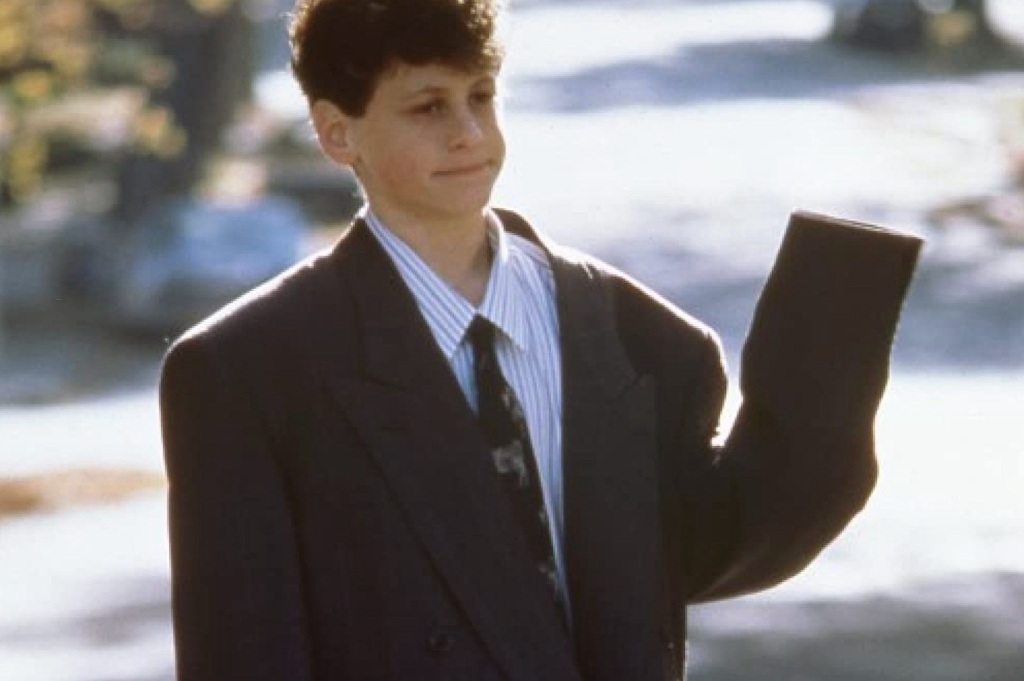
Still, Marshall’s direction of the last scene was lump-inducing in part because of technology. In the 2024 remake (that’s not an exhortation, Mr. Hollywood) we’d see Hanks walking away from the car and his body morphing a frame at a time back into that of David Moscow. Instead, because it was 1988, we get a cut to Perkins and then a cut back to a very ill-fitting pair of pants, another cut back to her, and then Moscow wearing a suit that David Byrne would’ve thought too big.
I do, however, have one major reservation about BIG. The similar-premised films of the time had a father-son or mother-daughter swap. Here, the boy just becomes an adult. That difference helps in some ways regarding dramatic focus but a true swap means that the parent is in on it and the question of parental knowledge never gets raised. In BIG, the writers handle that in the worst way imaginable, by having the parents (principally, the mother played by Mercedes Ruehl) believe their adult-bodied boy has just gone missing. Kidnapped, with police and milk cartons and everything. But the film largely ignores (and kinda must for tonal reasons) an investigation that lasts about two or three months. I could never get out of my head while watching Hanks in New York as a toy executive what was happening on the homefront. Hanks makes a phone call and then writes a letter home, playing along with the kidnap story, but we never see the reaction to the letter. And speaking of “never see” … the very last shot. It all just plays as cruel, especially in the movie that, while terrific overall, is otherwise a featherweight comic fantasy.
Siskel and Ebert sold out
It’s been common for some time to lament how film journalism takes trailers and other clip releases as actual news and/or the basis for critical discussion. It’s all a sop to marketing and the corporatization of the critical enterprise, etc.
Well TIL … Siskel and Ebert actually “reviewed” a trailer. For FULL METAL JACKET in 1987.
I saw that segment as part of an hour-plus video, one of many “Siskel and Ebert review Auteur X” labors of love, by YouTuber Vanilla Skynet. The whole video is worth watching, if a little disjointed. But scroll to the 35:30 mark to get to their segment on the trailer for FULL METAL JACKET, which they played in its entirety.
I had a couple of reactions to this, in addition to the “OMG, they were reviewing a trailer?” shock.
First is that I think some of the root of Ebert’s (to my mind inexplicable and wrongheaded) disappointment with the film can be seen here. Gene and Roger’s fights (plural) about FULL METAL JACKET are among the greatest segments in the show’s history and the main release-week review comes right after the segment on the trailer. But in that segment on the trailer, you see that Roger believes, not wrongly mind you, that Kubrick had made another Strangelovian satire. And the film, though great in my view, is not that. His written review even makes it explicit that Joker’s Ann-Margaret line Is just an isolated gesture, and that he was “waiting for Kubrick to spring a surprise, but he never does.” Roger got trailer-fooled.
Second, it reminded me of my own reaction to FULL METAL JACKET, which was extremely mixed at first. I saw it on cable TV, ca. 1989 and I so hated Lee Ermey’s character and so identified with Pvt. Pyle, the chubby physical fuckup (a sentiment to which I’m not immune today even as a fighter) that I found the movie uncomfortable and even a bit humiliating. If you’d ask me at any time during the first half of the film what I thought of it, I’d’ve said “I hate this” while really meaning “I hate him.” When Ermey gets killed to end part one, I don’t think I’ve ever been made happier by a death — real or fiction (yes, I’m including monsters like Saddam Hussein and Osama bin Laden). However, then the second half inevitably felt like an anti-climax. So for many years, I had a great deal of sympathy for Ebert’s view that the film was too top-heavy and “never recovers” once it leaves Parris Island. I suppose I still hold the view that the first half is better than the second half. But I now see that as testament to what great performances Ermey and D’Onofrio gave and I understand better what the film was going for in its second half — the consummation and ironic realization of the first half in making these men killers.
Films of My Life – 3
This was (mostly) written years ago for a series called “Films of My Life” about the movies that shaped my critical and cinephilic mind, which is not at all the same thing as my all-time favorite films. I had the first five titles mapped out, published two (on THE BREAKFAST CLUB and AMADEUS) and largely written the next two, this piece on DR. STRANGELOVE just needing some smoothing and polishing.
DR. STRANGELOVE is one of only three films in my Official All-Time Top 10, CASABLANCA and A CLOCKWORK ORANGE being the others, that I saw for the first time in my pre-cinephile life. As I’ve said, prior to about 1988-89, I rarely went to movies, and never went by myself. I saw maybe 3-4 films per year in theaters, always while going out with family members or friends. DR. STRANGELOVE was one such excursion – while I was in college and my life revolved around policy debate. Stanley Kubrick’s film (he was so well-known that even I at least recognized that name at the time) was playing at the campus film program and about 4-5 of us on the debate team went.
I can’t speak to now, but at the time, near the end of the Cold War we thought would never end, nuclear weapons and nuclear strategy were subjects that college and even the better high-school debaters knew backwards and forwards — the better to debate huge impact events, as anything in the world could be argued as leading to tyranny, nuclear war, all Four Horsemen of the Apocalypse, etc.
I spent much of high school and a couple of college years immersing myself in material most teens don’t even know exists, much less would go near. I would devour every issue of the Bulletin of the Atomic Scientists, the US Naval Institute Proceedings, Orbis, The Futurist, Foreign Affairs and others, read books by the likes of Herman Kahn, Richard Pipes, Angelo Codevilla, etc. and collect extremist rag sheets that made incredible but powerful-sounding claims (“the only viable alternative to an inevitable nuclear war is for the Russian and other captive peoples to rise up and overthrow the Soviets,” read claims by the ABN Correspondence, written by … ahem … Ukrainian Nazi-symps … ahem … who turned out to be correct). To this day, there are still a few cards I can recite off the top of my head in full “spread” delivery — Masotti, 69, on race riots leading to a fascist US that would start a nuclear war; Beilensohn and Cohen, 82, on US membership in NATO guaranteeing a nuclear war; Dean, 84, on a rebellion in East Germany leading to a panicky Soviet invasion of NATO; Sanguinetti, 84, on the LDCs never being able to repay their debts … ah … good times.
So I went in to DR. STRANGELOVE, at least at first, primarily out of interest in the subject matter and without realizing that it was a comedy. The film’s semi-documentary opening scene giving “the other side” from the US Air Force, and the early procedural scenes at Burpleson AFB and even Gen. Turgidson’s pad, promised something more serious. One thing that never ceases to amaze me upon more than 20 viewings of what has remained an all-time favorite and still my answer to the question, “what is the funniest movie you’ve ever seen” is how DR. STRANGELOVE eases into what eventually becomes wild caricature.
The “purity of essence” speech and the whole name Jack D. Ripper, for example, both come near the film’s midway point not at the start, as both “name” and “motive” should come according to the Sid Fieldses of the world. It’s also the emphasis Kubrick gives the names in the delivery. The Russian ambassador’s name is De Sadesky and the premier’s name is Kissoff (some people attacked the film at the time as being at the level of Mad magazine). But I missed both names the first few times I saw the film because they were tossed off, not delivered as punchlines. DR. STRANGELOVE is funniest when it’s not trying to be funny — if the film had been a uniformly frenetic farce, it would have been unbearable. Reason #5705761236501 Stanley Kubrick is a genius: Cutting out the custard-pie fight that was supposed to end the film.
That touches on the first thing about DR. STRANGELOVE that impressed a college-debate military-journal dork for whom “counterforce” and “countervalue” were as much a part of what he breathed (and argued over) as “less filling” and “tastes great” were for most of his peers. And who would have punished any break from realism most harshly. DR. STRANGELOVE was the first film I’d ever seen, and still pretty much the only one, that goes very deeply and interestingly into military strategy, but which I can’t see through. It provides a gripping story that makes good use of getting accurate every detail of the technology and the use-scenarios. Kahn, believed along with Henry Kissinger and Edward Teller to be one of the principal sources for the Strangelove caricature, discussed a device in the 1950s very much like the Doomsday Machine and concluded, in Dr. Strangelove’s words, “that it was not a credible deterrent for reasons which at the moment should be all too obvious.” But such a device was technically possible, Kahn discussed its pros and cons with a straight face, and he concluded that it would only even be theoretically credible if it were triggered automatically. And, in Kubrick’s movie, Dr. Strangelove explains, in excruciating detail that parallels Kahn’s, that the Doomsday Device has to be triggered automatically for the very reason that no sane man would ever trigger it.
But what I will never forget from that night was the moment when the Soviet ambassador describes the Doomsday Device to the US leaders in the War Room. I whispered to the debater sitting next to me: “why would you build a weapon like that and not do it publicly.” He responds to me “yeah, that doesn’t make sense.” Not 10 seconds later, Dr. Strangelove barks at the ambassador “Of course, the point is lost … IF YOU KEEP IT … A SECRET!! VIE DIDN’T YOU TELL US!!!! “
I knew DR. STRANGELOVE was a masterpiece at that point.
Some years later, I saw DR. STRANGELOVE again at a different campus screening, though this time I went in as a cinephile and someone who knew it was comedy, who knew and loved Stanley Kubrick, and who was certain that this was no peacenik movie (more on that anon). I was able to get, as was and is my general wont, an aisle seat. Sitting in the aisle seat in the row behind me was a girl whom I will never forget — Women’s Studies Major from Central Casting, looking like Cassandra on BEAVIS & BUTT-HEAD. As I was giggling at the climactic scene of Kong struggling to open the bomb hatch, she was giving audible upset gasps. When the bomb landed and the screen went white, the sounds began to resemble sobs (I obviously couldn’t see). I began laughing even harder. And then Kubrick vindicated my reaction with the last scene. We’re back at the Pentagon War Room, making survival plans that are obviously completely and totally unaffected by either personal interest or geopolitical gambits. “Mr. President, we must not allow … a mine-shaft gap!”
Although DR. STRANGELOVE has been read since 1964 as a “distrust warmongers/The Bomb” movie, I knew from then that it’s a lot more than that. And that’s the lesson the film imparted to me that has never left me as a conservative-laming film buff. Never trust political readings of movies as left-leaning. Often they will be correct, the inevitable result of the industry’s leanings and artists’ temperament. But if they’re right-leaning or left-critical, that fact will either (1) go unnoticed / be rationalized away, or (2) become the basis for attack, sometimes on pretextual “aesthetic” bases.
Topical satires of the moment are thin gruel and don’t last 60 years at least, as this film has, when compared to the grander points the film ultimately has on its mind – a Martian’s-eye yarn about the amusingly pathetic people on the planet next door and how they managed to destroy themselves one sunny day.
The coda gives the lie to topicality-mongering and reformism. What the mine shaft scene points out is how man doesn’t, perhaps cannot, learn. After all, what has just happened is the most salutary object lesson imaginable and yet, the men in the War Room STILL act as they did before. Further, STRANGELOVE does not willy-nilly take the view that political hatred blinds us to our common hum … zzzzz. At least one important fear of Turgidson (the immediate cause of the famous “you can’t fight in here; this is the war room!” line, in fact) is shown to be true – the ambassador WAS carrying a camera for spying. Further, the ambassador is quite clearly shown to be equally fascinated with Dr. Strangelove’s ideas for survival. As Stanley Kauffmann put it, the Doomsday Device in this movie is Man.
To satirize a particular action like “the Cold War ‘arms race’ ” requires a sense that things could be otherwise. To criticize “arms races” as such pretty much requires the corollary belief that political conflict is somehow illusory. If, on the film’s terms, a nuclear war and the deaths of billions of people wouldn’t change man, it’s hard to see what could. STRANGELOVE is Swiftian misanthropy, a joke on the human race told from the point of view of Olympus or Mars. From man’s view, the real political conflicts justify arms races; and for gods or aliens, man is a joke not worth worrying about.
The other universe-defining irony of the film is seeing individual sanity both producing and trying to deal with an inconceivably screwed-up situation — the disjunction of individual reason and cosmic reason. In fact, to put it bluntly, it’s only because the generals and presidents and bomber crew are NOT insane that the film is funny. And that was a realization that us debaters all had. In DR. STRANGELOVE, it’s man’s improvised wits and fortitude that both doom the world (the bomber crew) and save it (the coda).
The other track on which DR. STRANGELOVE is not a peacenik movie is that the “warmongering” isn’t (mostly) motivated by warmongering or bloodthirst. And to the extent that it’s motivated by sex — that’s kinda irreformable too. For one specific thing, the Doomsday Device is specifically situated by Ambassador de Sadesky as an alternative to massive military expenditures and a way to provide nylon stockings. This isn’t a joke line – in fact, it’s cognate to the very logic of the entire U.S. nuclear arsenal of the 1950s, which was overwhelmingly superior to that of the Soviets so the U.S. and NATO wouldn’t have to match the massive Red Army. The Doomsday Device is a Soviet mirror image of the same strategy — higher-level checkmate.
For another, Wing Attack Plan R is not a fantasy, but the only response possible to an actual strategic threat — a nuclear decapitation of the country’s leadership. That scenario had became more relevant as technology advanced in the Cold War’s subsequent decades to the point where I began studying nuclear weapons. Given that the principal delivery systems of the early 1960s were subsonic bombers, the lead times in STRANGELOVE were measured in hours with plenty of time for the drama to unfold. But in the 1980s, a depressed-trajectory submarine-launched ballistic missile from international waters off the mid-Atlantic could achieve that in a few minutes. And if something like Wing Attack Plan R didn’t exist somewhere in the Pentagon’s war plans (and the Kremlin’s), I’d’ve been very distressed.
And finally, as caricatured as the persons are, their responses to the film’s events are entirely rational and what I’d’ve expected. Without some nasty twists of fate that cannot be attributed to anything other than blind chance — Premier Kissoff’s love of surprises, the specific way the bomber was damaged, the bomber crew’s improvisations once their plane gets damaged — reason and military technology would have been the solution to its own dangers.
The film shows man and his ingenuity as both contemptible AND inspiring. Laugh at the mine-shaft survival plan generated by Strangelove’s foresight, but what else are they supposed to do now that the Doomsday machine has been triggered but to try to survive? Strangelove’s plans seem reasonable, and though there’s obviously that very dark undercurrent of “man doesn’t learn” from both Turgidson’s and DeSadesky’s behavior and though the satire continues (abandoning monogamy “will be a sacrifice we shall have to make”), is there any real doubt that this is what will happen and some remnant of mankind will survive? And their kids will look like Brendan Fraser.
The foreign-film Oscars
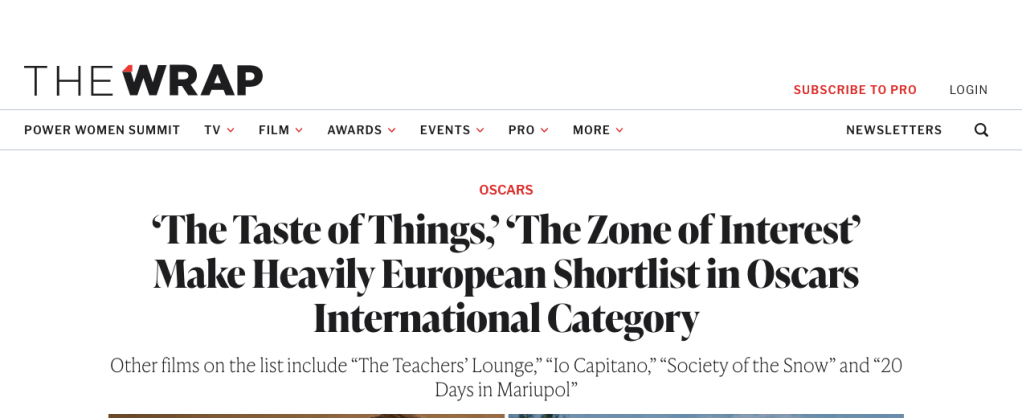
The Academy released today the 15 films short-listed for the best foreign-film Oscar and that picture is how the Wrap headlined its story. Europe bad! The second graf calls the list “very European-centric” though whether this not-quiiiiiite falling into the critical-theory rabbit hole is simply uncertainty about the official jargon (it’s “Eurocentric”) is unclear. But you’d call it “European” if you WEREN’T implying the critical-theory worldview.
But in defense of Eurocentrism …
Setting aside particular issues of worthiness or unworthiness or snubs of this film or that, why should it be surprising that the best films would be made in rich countries with the longest-developed film industries (which would definitely include Japan, India and a few other non-white countries, BTW). Unless we’re simply going to have a continental quota system, like FIFA does with World Cup qualifying, in a typical year, Europe and a few other first-world countries in East Asia and elsewhere will produce more good or great films than other continents. By all means, be open to smaller or poorer countries … but in competition the chips have to fall where they may. (Yes, I oppose “equity” per se.)
Here is the list itself, with the ones I have seen at festivals marked in bold:
Armenia, AMERIKATSI
Bhutan, THE MONK AND THE GUN
Britain, ZONE OF INTEREST
Denmark, THE PROMISED LAND
Finland, FALLEN LEAVES
France, THE TASTE OF THINGS
Germany, THE TEACHERS’ LOUNGE
Iceland, GODLAND
Italy, IO CAPITANO
Japan, PERFECT DAYS
Mexico, TOTEM
Morocco, THE MOTHER OF ALL LIES
Spain, SOCIETY OF THE SNOW
Tunisia, FOUR DAUGHTERS
Ukraine, 20 DAYS IN MARIUPOL
To the extent I can comment, this is a good list, with the lowest-ranked film of the seven I’ve seen (FALLEN LEAVES) still being a 5 and that’s my Kaurismaki tepidness talking. I said on Twitter that the Finn’s fans should ignore me; this is very Aki. Of the other six that I like, there’s two I absolutely love — Tran Anh Hung’s TASTE OF THINGS and Jonathan Glazer’s ZONE OF INTEREST. If handled well and especially if it wins the Oscar, the French film could become a huge hit, albeit for shallow reasons — it can be consumed as “food porn” but the movie is so much more and better than that.
But in defense of nationalism …
I was stunned to see that Britain submitted ZONE OF INTEREST, though not that it was successful once it did/could. The major countries of the Anglosphere have been nominated before in the foreign-film category with films made in languages other than English but indigenous to the country — French for Canada, Welsh for Britain, etc. But ZONE OF INTEREST, about the family life of the commandant of Auschwitz, was set in Poland and spoken entirely (best I can recall) in German. The names on the credits, from my recollection, were mostly Polish. So when I tweeted about ZONE, I identified it as “Germany/Poland.” Other than writer-director Jonathan Glazer, which admittedly is a pretty big deal, and some financial hand in the multinational production, there is nothing British about ZONE. To the extent Britain can claim ZONE merely based on Glazer and money, why couldn’t Germany (also!) have submitted PERFECT DAYS or even THE TASTE OF THINGS been claimed by Vietnam. Language and indigenousness matter. Nobody would watch ZONE OF INTEREST and call it a British film, so I’m not $ure in what $en$e it$ hypothetical victory could be called a Briti$h win.
Jonathan Majors abandoned
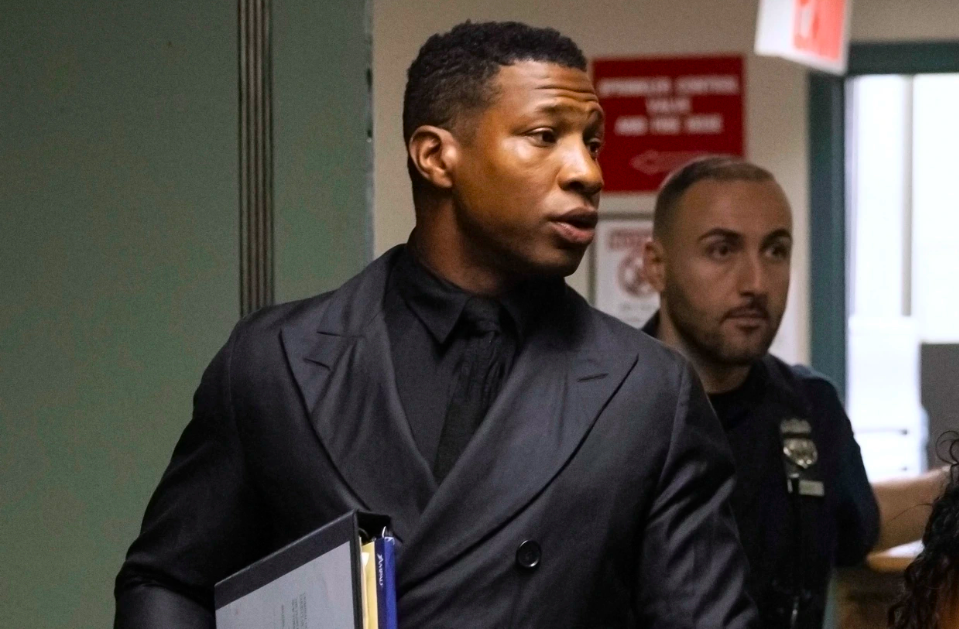
Actor Jonathan Majors of CREED 3 and THE LAST BLACK MAN IN SAN FRANCISCO was convicted today of assault on his girlfriend, though he also was acquitted of the worst of the charges. Sentencing is set for February, at which he could get up to a year in prison, though non-jailing sentences are possible and probably likelier given his lack of a record.
But this is the part that caught my eye for this site:
Marvel Studios and the Walt Disney Co. dropped him hours after the verdict.
…
Marvel and Disney immediately dropped the “Creed III” star from all upcoming projects following the conviction, said a person close to the studio who spoke on condition of anonymity because he wasn’t authorized to speak publicly on the matter.
Before his arrest, Majors had been on track to become a central figure throughout the Marvel Cinematic Universe, playing the antagonist role of Kang. Majors had already appeared in “Ant-Man and the Wasp: Quantumania” and the first two seasons of “Loki.” He was to star in “Avengers: The Kang Dynasty,” dated for release in May 2026.
Now this isn’t “cancel culture” in the morally-relevant and now-prevalent sense. Criminal convictions for assault are a serious thing and if he’s in jail, he obviously can’t be shooting movies.
But it IS a kissing cousin to cancel culture … the eagerness to preemptively cut professional ties with people for things not directly related to their job, as if employment were a moral union or part of a social-credit system, rather than “wage slavery” as old-school Marxists used to call it.
It is presumptive at best, totalitarian at worst, to assume that private employers (or colleges or other social institutions) are in the business of punishing criminal behavior. That’s what police, courts and jails are for. It’s why they’re collectively called “the criminal justice system” and not “movie studios.” What should have happened here is for Disney and Marvel to have waited for the sentencing, see whether that materially affected Majors’ availability, and then make other plans for those films if it did.
One thing liberals used to believe (and still do when it comes to voting [Democrat]) was that criminal convictions shouldn’t affect your employability and that once you paid your debt to society, the matter was over. When Robert Mitchum was sentenced to jail for drug use, he served 50 days (the rest of the 1-year sentence was suspended pending probation and good behavior), and then he walked right back onto the RKO lot, continued to make movies and was as popular as ever.
That’s what should’ve happened here.
Please just disappear

THE DISAPPEARANCE OF SHERE HITE (Nicole Newnham, USA, 2023) 3
I hadn’t given a thought to Shere Hite in probably 30-odd years when I saw the title of this documentary, but I immediately remembered “oh, her!” Based on what I remembered of her public career, I thought THE DISAPPEARANCE OF SHERE HITE had the potential to be interesting if it concentrated on the title or it could be a straight-up feminist hagiography that will have me arguing at the screen for two hours.
THE DISAPPEARANCE OF SHERE HITE is the latter.
My first moment of eye-rolling came when Hite (whose writings are voiced on the soundtrack by Dakota Johnson) says she took modeling jobs when in graduate school because all means of support, including any jobs and marriage per se “are prostitution with the system.” That’s the kind of radical-chic metaphor that collapses in a moment’s thought. Both Hite and HITE also have the annoying habit, endemic in the artistic uniparty, of attributing disagreement to “fear” or to, in the current cant, ideas being “weaponized” by The Bad People. For one thing, this is per se anti-intellectual only one step above “fuck off, asshole.” But for another, “fear” is good. It is the proper response to nutty ideas married to power such as … [looks at notes] “a new kind of physical relationship to go along with a more humane society” or sexuality “without labels, without repression.” Well, who could feat THAT? Both Hite and HITE have the annoying tic of entitled radicals to make the most provocative statements and then find it inexplicable (or worse, pathological) that others react as if they have been provoked.
What put me in rebellion against this film was its gendering of general taboos and mores. Yes, at the time Hite wrote her first report on female sexuality, people didn’t say “vagina” or “clitoris” in public spaces. But this wasn’t about “suppression of women,” as the film claims — you couldn’t say “penis” or “testicles” either. And the film doesn’t reflect on what it means apropos this and its related claim that feminist knowledge is constantly suppressed and forced to be relearned when, in a late scene, we see Hite appear on Stephen Colbert’s show and the language used there. One can say these taboos were stupid or that they repressed sexuality. Not women.
But what I mostly see in such self-satisfied left-wing issue films is the moments when the film forgets what it said or showed five minutes earlier, tripping over itself intellectually or inviting “what about” reactions. Two moments finally tore it for me.

(1) A talking head says the backlash against Hite came because in her third major book, about women and love, she claimed that 70% of married women cheated on their husbands, which caused numerous pollsters to try to replicate the finding and never getting close to that. The talking head said that Hite had had a similar share of married men cheating on their wives in her previous book “and no one was shocked by that.” Er … did she watch the earlier parts of the movie? Hite’s book on men yielded footage of TV stars like Gil Gerrard and David Hasselhoff, of whose discomfort the film makes great sport, and an all-male audience on Oprah roundly denouncing the book, admittedly on many additional bases.
(2) Kate Millett says that when Hite was without an American publisher that she was being “censored” and she specifically used that word, saying Hite wasn’t merely being “criticized” or “censured,” making great sport of the slight pronunciation difference, but “censored.” Now set aside for the moment that I’d’ve loved to hear Millett on cancel culture and its leftwing defenders that being cancelled (as Hite essentially had been) is not censorship. But this comes after footage from Hite’s previous book tour, in which she didn’t show up for some TV shows, attacked a cameraman and a chauffeur, and walked offset on live TV. Publishers don’t get behind loose cannons.
There’s more, and it’s especially galling come from the purported “party of science.” Hite’s methodology … open-ended questions handed out indiscriminately, then all tallied and characterized by her as, among other things, numeric findings … was roundly criticized as unscientific. Which it isn’t. I’m not unsympathetic to Hite’s methodology because I do not worship the altar of scientism. There is a place in scholarship for … what do the kids today call it … lived experience. As long as you take it for what it is, which does not include generalizable claims about the whole population — that 70% of wives cheat or 98% of people mastirbate or anything else. But Hite insisted her work was scientific which makes the defenses of her methodology pathetic (I lol’d at “she got what she could get”; well … yes, that’s kinda the point). When pointed out that she got an abysmally low response rate of (I think) 6%, she replied that food safety testing was done with smaller samples. I wanted to #HeadDesk. We already KNOW that’s random … answering detailed questions about your sex life is not. To put it crudely, such a sample would be disproportionately sexual gossips at best, fantasists and exhibitionists at worst. One apologist said “they criticized her methodology so they could discount her findings,” which … gets the intellectual process exactly backwards. Hite herself also seemed to think, when criticizing random telephone surveys, that your husband standing around you in the kitchen can hear both ends of the conversation and know what you’re saying “yes” or “no” to. The final straw of her straw-grasping was to say that “measure” was a male word.
DISAPPEARANCE is the sort of left-wing film both produced by an artistic uniparty and praised by a critical uniparty (it has a 100% score at Rotten Tomatoes as I type). I can’t say I didn’t smile when I realized that the screening I was at had an audience of one — a man who might politely called a non-feminist.
Toujours l’amour
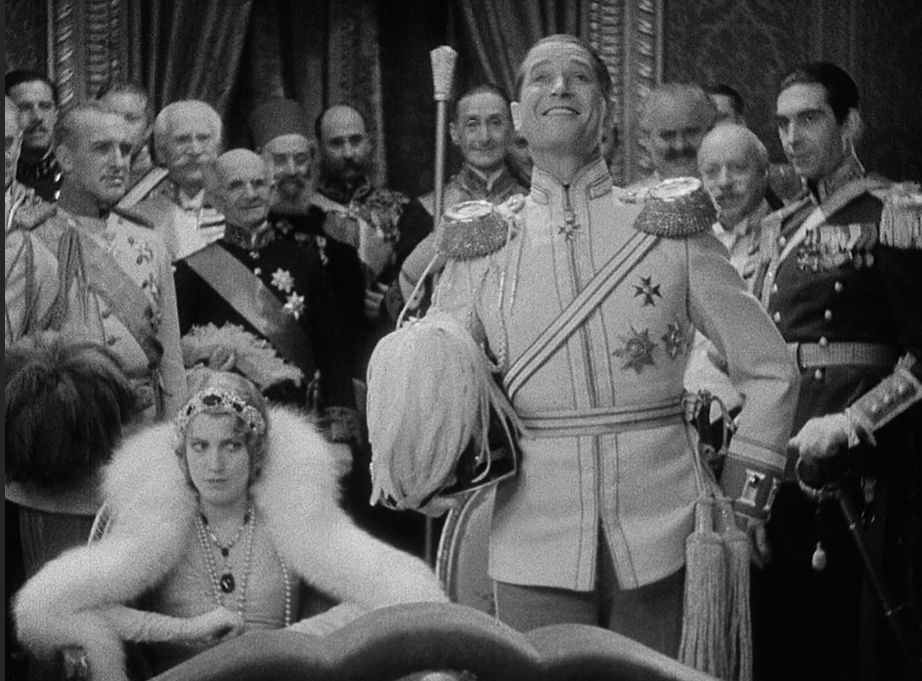
THE LOVE PARADE — Ernst Lubitsch, USA, 1929, 9
There’s few things quite as exhilarating for an obsessive cinephile of 30 years as scrubbing the last parts of a favorite director’s body of work, having seen all (or nearly all) the consensus great ones, and finding that there’s new discoveries, new masterpieces that rank with the auteur’s best. No, Victor — even you haven’t seen it all.
Some years ago, I bought the Ernst Lubitsch Musicals 4-disc set by Criterion’s Eclipse division, a set that was, for me upon receipt, about half-seen and half-unseen material (the ideal mix; you get the guarantee of some awesomeness and the hope of discovering more). One night, I looked at one of the two films I hadn’t seen — THE LOVE PARADE. And it was a lulu.
In a comedy particularly, if the first ten minutes or so work and work confidently and with style, we accept pretty much everything that comes after, as long as the film stays in the same vein. Those early scenes assure us that we’re in good hands, that the film-makers know what they’re doing, and then we just go along for the ride.
Lubitsch already was well-known in the silent era for a distinctive style — “The Lubitsch Touch,” the “Continental Sophisticate” and all that. And just because of its date and its status as Lubitsch’s first Talkie, my ignorance of the movie to this point made it just possible to imagine and vicariously share the thrill THE LOVE PARADE would have given a discerning 1929 audience in that first 10 minutes — an enormous reassurance that Lubitsch had found a way to have his style make the transition from silents to talkies, and that he could (and would) go from strength to strength. And that, despite being born nearly 20 years after Lubitsch’s death, Victor hadn’t seen it all yet. Oh yeah … and Lubitsch would basically invent a whole new genre of movie in the next two hours.
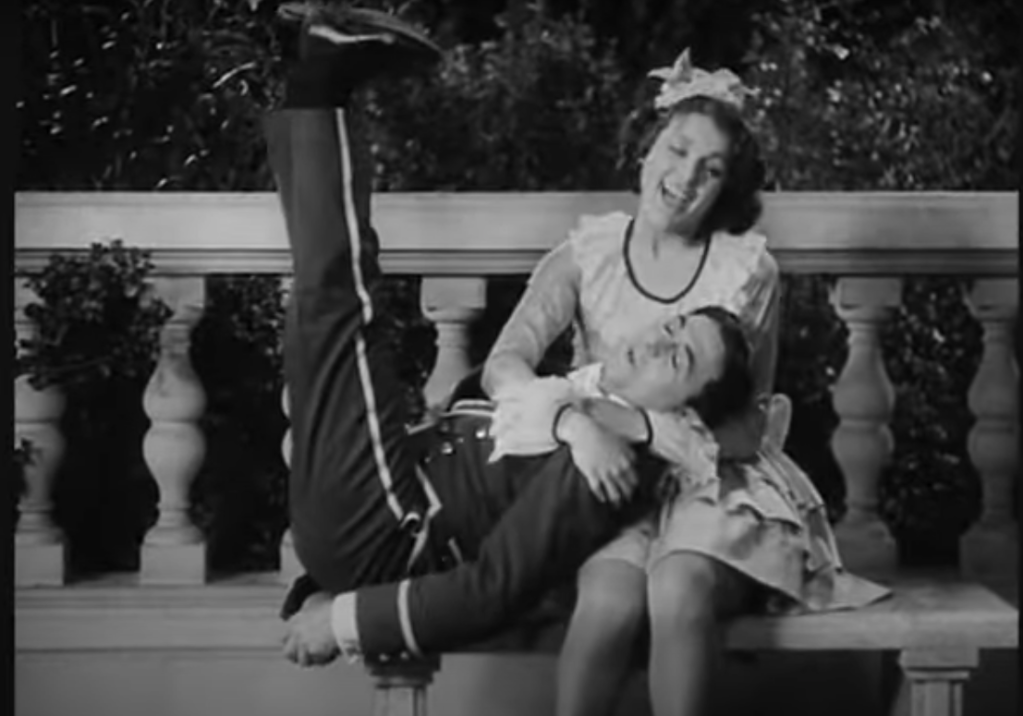
In THE LOVE PARADE, that first scene is of man-servant Jacques (Lupino Lane) singing a little ditty to himself as he works, a charming set of rhyming half-lines while he sets the table with his punch lines … and then … he finishes setting the table with a perfect (and completely unexpected) last gesture, done as lightly and offhandedly as putting the salad fork to the left of the dinner fork, but with a higher degree of difficulty. It’s Lane’s breezy insouciance at his gesture that makes it the perfect Lubitsch punch line.
The next scene is a love-triangle confrontation that begins with a behind-bedroom-doors quarrel between Maurice Chevalier, playing a Continental roué, and his latest conquest. The stakes rise when her husband bursts into the luxe Paris apartment, one worthy of Sylvania’s military attache to France. Mostly silent, but with all the dialogue in French and all of it unsubtitled (Chevalier looks to the camera to tell us the meaning of two lines that were frankly already perfectly clear). There’s a moment worthy of Bugs Bunny and Yosemite Sam, where one character who’s been fired on at point blank range, feels himself for the wounds or blood he’s not seeing, figures out he hasn’t been hit and then lets his natural curiosity go over to join the equally-surprised gunman in figuring out why not.
Keep in mind that this is 1929, the beginning of talkies-as-normal (THE JAZZ SINGER, e.g., was mostly a silent). Lubitsch seems to be telling the audience, which has not yet overcome the sheer novelty of hearing voices, that “you know, you can still do nonverbal comedy in a talkie.” It’s the sort of denial gesture or deliberate ellipsis that makes the joke while letting the audience have the fun of figuring it out, typical of the understated self-aware drollery, the subtle wit and sense of fun that Lubitsch shares with his audiences, like a raconteur at a party.
In the first “plot scene,” Sylvania’s ambassador says this was the last scandal Chevalier will cause (“my wife has told me everything about you” he says unawares, to a grinning Chevalier) and he must go back to Sylvania to face the judgment of the queen (Jeannette MacDonald) and so we figure romantic intrigue will ensue for the rest of the film — there’s no other reason to make the ruler a queen, rather than a king or duke, and we’re totally unsurprised that she will be unmarried and have the country and her circle of advisers worried over that. Mick LaSalle explains Chevalier’s persona, unthinkable in the post-Code 1934-on Talkies:
With Chevalier onscreen, it was always understood that he has gone to bed with hundreds if not thousands of women and has been faithful to none of them, but no one minds because, hey, he’s French. He is impish, and his behavior borders on ridiculous, but there’s a wise current underneath, an Old World understanding that the pleasures of life are the essence of life. Descriptions can go only so far. Imagine explaining Mae West to someone who has never seen her. You need to see this guy.
Then the movie’s first real musical number — three verses about how sad it is to leave Paris, one sung by Chevalier, one by his lower-class manservant and one by a dog (actually in good rhythm, tempo and lipsynching; not so much with the tune and harmony), with frequent cutaway to backing choruses of the women and the bitches they’re leaving behind. It’s a showstopper, but the song’s content is organic to the movie, unlike many musicals, and the direction involves something more than putting a performer in front of the camera and letting him do his stuff.
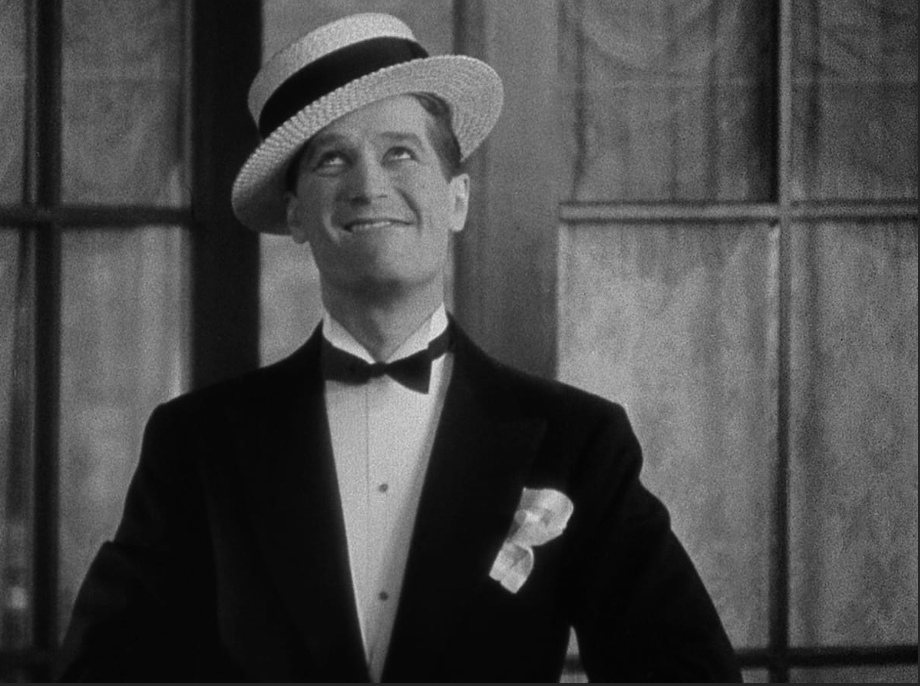
Oh … and did I say that in THE LOVE PARADE, Lubitsch more or less created the movie musical as a narrative form, distinct from the backstage tale or the vaudeville revue. Yes, I did. He obviously borrowed heavily from the existing conventions of operetta — love duets, double takes, numbers to carry the story along, e.g. — but he did things via movie-cutting (plus the intimacy of the facial closeup, which lets us see what a great ham-and-mugger is Chevalier, making his Hollywood debut) that couldn’t be done onstage. In one scene, the first dinner between MacDonald and Chevalier happens entirely offstage, as Lubitsch cuts between three groups of eavesdropping choruses — the Cabinet, the ladies-in-waiting, the “Downstairs” foils — and their reactions to what we never see.* Even in a scene that consists of nothing but a song, “The Queen Is Always Right” is a duet with chorus that gives Lane (partnered with Lillian Roth — another underused-by-Hollywoof talent) one of several chances he gets in PARADE to show off his plasticman athletic moves.
The class element in Lubitsch is way more sophisticated than he sometimes gets credit for. A 1948 obituary, which was translated and published in Cahiers du Cinema in 1967 and quoted by Andrew Sarris called Lubitsch “a great middle-class liberal, in fact, a self-made man — stout, nervous, jovial, although perhaps less stout than anything else. Born into the lower middle-class, he despises neither peasant, nor workingman, nor the petty clerk that he had himself once been. He understood only that everyone should dress in his Sunday best to come to see his films before going off to dance at a family party or, as fortune decreed, in pairs.” In other words, the mores of the privileged should still be aspirational and followed to the extent possible. In this film, Lane and Roth are servants and refer to themselves as common people, but not proletarians, much less lumpenproletarians. In this amusing and witty number, “Let’s Be Common” (watch all the way to the end — the punchline is great) they clearly identify with upper-class mores, until they don’t. And even their rejection is suffused with upper-class aspiration. They’re like class tourists, if one can use that term neutrally, and in that sense thoroughly Lubitschian in their Sunday best throughout.
The “Lubitsch Touch” is not the aristocratic continental environment (that’s a costumer and set-decorator’s touch), but the way his style creates a whole universe and a whole worldview that if I had to put into one word, it would be: gaiety. (The adjective form of that word would work just fine if it hadn’t come to mean something completely different.) But there’s more: Ruefulness. Sang-froid. Dry wit. Brazen cheekiness. A sardonically loving nature. Careful naughtiness.** Half-believed double-talk. Epigrams. Fourth-wall breaking and other forms of self-referentiality. Lubitsch creates a world where, in Sarris’s words, “grace transcends purpose” and appearances matter for their own sake (have I mentioned at all that I hate Authenticity as a virtue). Lubitsch is one of the great conservatives of cinema not because he made ideological films (he certainly did not) but because of his soulcraft and world view. “What are manners after all,” Sarris asked, “but the limits to man’s presumption, a recognition that we all eventually lose the game of life but that we should still play the game according to the rules.”
It was a world that had died out in the name of Progress by the time Lubitsch got around to creating it; so there’s always an undercurrent of loss (the prince at the end of STUDENT PRINCE IN OLD HEIDELBERG, say). He creates a world where love and sex and life are too important not to laugh about and too funny to shroud in moralism; where joking is the ultimate proof that something matters, and moralism is the ultimate proof that one is unsure of that. Lubitsch is “Erich von Stroheim + comedy,” or, like his soulmates Max Ophuls and Yasujiro Ozu, even in tragedy, there is no great gnashing of teeth.
——————————————
* One of my favorite Lubitsch lines (and his disciple Billy Wilder’s) is “if you give the audience two and two, they don’t have to be told it’s four. Give the audience the pleasure of finding the joke.” That elliptical philosophy is essential to “wit” — the ability to share a sense of subtle fun with an audience as if only the two of you are in on the joke.
** Another of my favorite Lubitsch jokes was not written by him, but it perfectly illustrates his sense of humor. According to Billy Wilder, the two were going over preview-reaction cards, from NINOTCHKA if my memory serves, and Lubitsch came across one that had him so convulsed with laughter that he couldn’t even move to pass the card around. It read: “this film made me laugh so hard I nearly peed in my girlfriend’s hand.”
From the archives 3: Harry Langdon
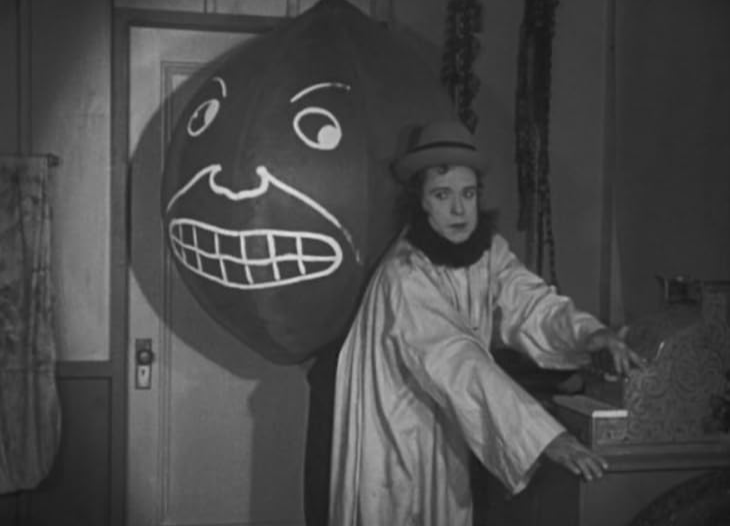
I was looking through my Drafts folder the other day as I’ve decided to try to blog daily and realized … I wrote a lot of stuff I never published. I’m gonna start with unpublished posts from the 2005 edition of Slapsticon, a silent and early-sound comedy festival that was an annual fixture on my calendar throughout the 00s. The third is about watching Harry Langdon there over the years.
THE BIG KICK (Warren Doane/Harry Langdon, USA, 1930) 9 s
THE KING (James Horne/Harry Langdon, USA, 1930) 9 s
THE HEAD GUY (Fred Guiol/Harry Langdon, USA, 1930) 8 s
DOUBLE TROUBLE (William West/Harry Langdon, USA, 1941) 4
One of the great pleasures of Slapsticon for me was the baby-face clown Harry Langdon, whose sound work is really ripe for rediscovery. Yes, I said his sound films. His hyper-modern style would fit snugly into an era that has assimilated Andy Kaufman and conceptual humor.
Even in the silent era, Langdon’s comedy was extremely self-conscious. He was a true infant, a man-child playing stupid – like watching a two-year-old think and contemplate and think and think some more and then do something truly bizarre. But Langdon had brilliant timing for what he was doing – which was messing with the comic arc and milking the gag to the point that we laugh in anticipation of what we know is about to happen (and then sometimes doesn’t). He’s the Tsai Ming-liang of silent comedians.
Three of his early talking shorts – THE BIG KICK, THE KING and THE HEAD GUY, all from 1930 and seen respectively at Slapsticons 1, 2 and 3 – are all brilliant examples of “awfulness” being made funny. When THE BIG KICK was made, silent stars in talkies were still a novelty and what makes it so funny is that Langdon plays a mechanic at a garage (a gang of robbers and a moll provide what drama there is), and he avoids speaking for the first 15 minutes of a 20-minute short. Half the gags are just messing with the audience there for Harry Speaks! – and providing excuses for Langdon either not to speak or not to be heard. He used score and sound effects like Jacques Tati, to cover up dialogue, and the crude recording technology of the time actually foregrounds the sound effects as pure gesture and makes them funnier. I was actually disappointed when we finally did hear Harry, but I was already too sore laughing to care.
In THE KING, Langdon talks as the titular character throughout, but the humor is in the total incongruity between Langdon’s unpolished, squeaky, baby-like voice and childish mannerisms on the one hand and the “regal” bearings of his sceptre and robe on the other, plus the hyper-literary quality of the script — putting lines in Langdon’s mouth from the “remember O wife, thy foolishness” school of fake regal talk. Again, the very amateurishness of the writing actually aids the conceptual humor — none of the film is remotely plausible and it’s completely weird and that’s what funny about it.
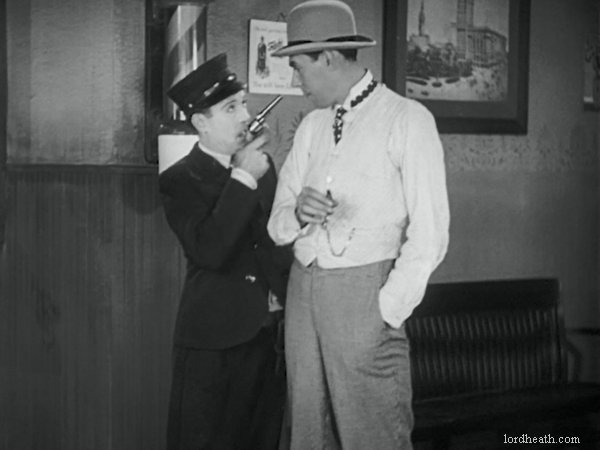
With THE HEAD GUY, we return to the surrealism of Harry in a wildly implausible work situation. Edgar Kennedy leaves him in charge of the train station and rattles off lengthy instructions on what to do in Situation X, and what to do in Situation Y, and what not to do in Situation Z unless he calls Kennedy at a series of numbers on a day ending in Y … And Harry struggles to keep up past the first sentence. He gets obliviously involved with some ducks while a bevy of leggy dancers show up at the station. The dialog like “now this oughtta convince you not to believe a word of what you saw” is a masterpiece of bad writing. A lengthy sequence tries to give Harry a “To Be or Not to Be” speech, but (a Beavis and Butt-head comparison) it’s as if Harry’s not bright enough to deliver a speech (or effectual enough to take a gun out of its holster). His mind wanders around and around until it collapses into a crying fit and a mouthful of Mama Cass sandwich. It’s anti-humor raised to the level of a dadaist gesture.
I don’t think I’m merely rationalizing — I do think this was all deliberate, on the part of somebody, if not Langdon specifically (Frank Capra painted him as a big-headed twit). Before THE HEAD GUY, we saw a trailer announcing that Langdon was joining Hal Roach studios, and its simplicity was excessive even for a low-budget trailer from a studio that couldn’t do its own distribution. The combination of simple innocence and aggravating weirdness is immediately there.
Langdon stands at a door to inquire about Mr. Quimby, only Thelma Todd doesn’t invite him in. So Harry stands and sweetly and apologetically asks about … whatever his mind alights on until it moves (or crawls) over to another thought which it elaborates (though that’s not really right) about Mr. Quimby, who he wants to see, but Mr. Quimby’s not in, which is too bad. He wanted to see Mr. Quimby and needed to get his … vroom-vroom, but not just any vroom, and he’s with Mr. Deitz and doesn’t want to raise a rumpus, but he sees they’ve raised one little rump. Harry’s mind struggles around metaphors on and on and around and around, until … I thought about a Three’s Company joke involving Jack and Mr. Roper putting up a shelf.
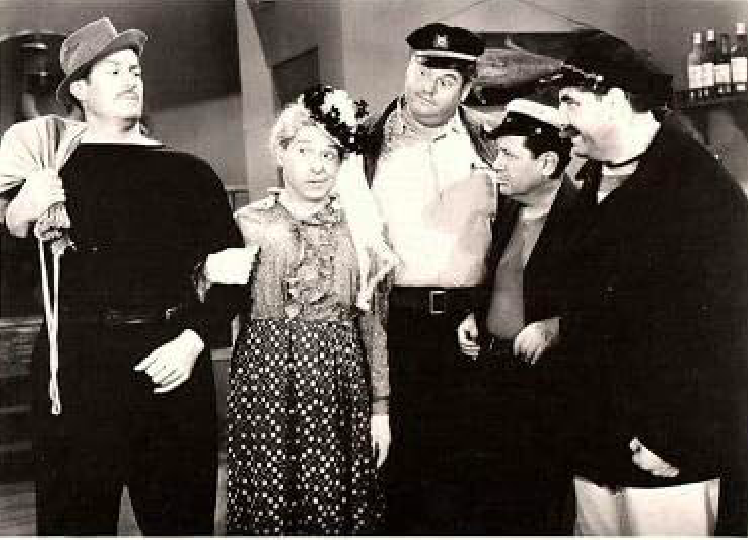
In a strange way, by the end of the 30s, Langdon had become too conventional (even growing a moustache at one point). At the 2005 Slapsticon, I saw 1941’s DOUBLE TROUBLE, a feature that teamed Langdon and Charley Rogers in a mistaken-identity plot about two (very grown-up) war babies, a bean company going bankrupt, renting a diamond bracelet and then losing it in a can of beans. Richard Roberts did a yeoman’s job of selling the film beforehand, basically saying, close as I can recall in 2023, “ignore the rest of the film; it’s bad. Just watch Langdon.”
DOUBLE TROUBLE is not awful, it’s just an mildly mediocre and conventional B-picture. It has little of the surrealism that marks Langdon’s good sound work, so in a strange way, it’s too polished, while being low-rent in every other way. The Langdon-Rogers teaming also doesn’t really work because because the two are too alike in personality and acting style, meaning there’s no real tension between them, like the greatest pairs from Laurel and Hardy to Lucy and Ethel to Beavis and Butt-head all had.
But there is one joke that brought down the house, a very Langdonesque gag involving, metaphorically speaking, the infant contemplating the food he has just thrown onto the floor. I don’t want to spoil it but, throughout, you’re laughing at yourself and thinking “how did they get THIS past the Hays code” and then watching Langdon’s glacial “mind” at “work” contemplating what he’s done and realize the same thought and … get what it means, and react. It’s one masterful moment in an ocean of “meeehhh.”
And if you wanna see the Langdon talkie that first knocked my socks off, here is a link to THE BIG KICK, which I don’t seem to be able to embed.
From the archives 2: Laurel and Hardy
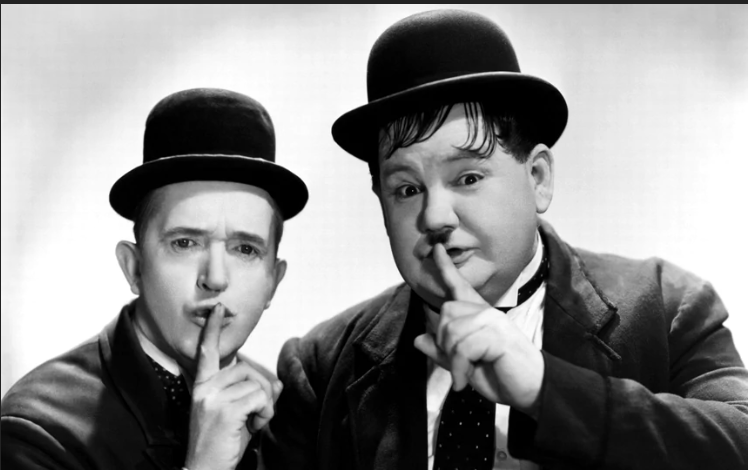
I was looking through my Drafts folder the other day as I’ve decided to try to blog daily and realized … I wrote a lot of stuff I never published. I’m gonna start with unpublished posts from the 2005 edition of Slapsticon, a silent and early-sound comedy festival that was an annual fixture on my calendar throughout the 00s. The second is about a series Stan Laurel and Oliver Hardy films — apart.
THE DADDY OF THEM ALL (Arthur Hotaling, USA, 1914) 3 s
BEARS AND BADMEN (Larry Semon, USA, 1918) 5 s
THE HERO (Arvid Gillstrom/Billy West, USA, 1917) 3 s
THE FALL GUY (Norman Taurog/Larry Semon, USA, 1921) 6 s
UNDER TWO JAGS (George Jeske/Stan Laurel, USA, 1923) 7 s
SHORT ORDERS (Percy Pembroke/Stan Laurel, USA, 1923) 4 s
DR. PYCKLE AND MR. PRYDE (Percy Pembroke/Stan Laurel, USA, 1925) 9 s
ALONG CAME AUNTIE (Fred Guiol/Oliver Hardy, USA, 1926) 7 s
EVE’S LOVE LETTERS (Leo McCarey/Stan Laurel, USA, 1927) 8 s
THE EGG (Gilbert Anderson/Stan Laurel, USA, 1923) 8 s
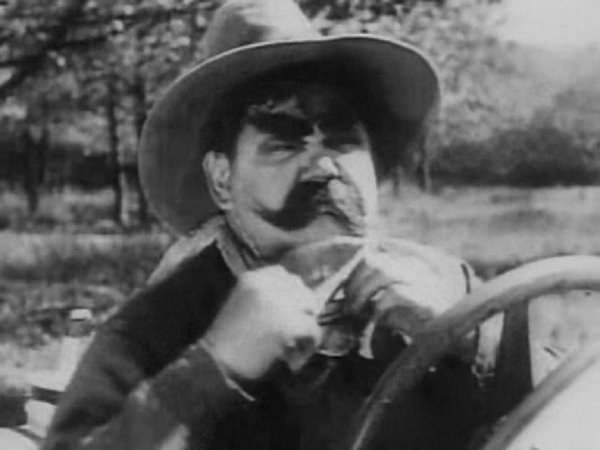
One of the scholars attending Slapsticon was Rob Stone, who wrote a book called “Laurel or Hardy: The Solo Films of Stan Laurel and Oliver ‘Babe’ Hardy,” and he introduced a program of Stan shorts and Ollie shorts. The films basically went in chronological order from one of Hardy’s earliest 1914 works (THE DADDY OF THEM ALL, a pretty weak one-joke one-reeler about the town welfare society offering a prize to the largest family) to their work together but separate at the Hal Roach studio late in the silent era (which is pretty incontrovertibly superior to their earlier stuff).
Unless Stone’s program was shockingly unrepresentative, Laurel clearly had the more interesting solo career. Hardy seemed to be more a conventional “heavy,” a second banana. And as with most silent slapstick shorts, those films rise or fall with how funny or appealing we find the lead character. I could not get into THE HERO because Billy West was such a distractingly one-dimensional ripoff of Charlie Chaplin. Not an act influenced by Chaplin (all the silent clowns were that, obviously) — but a ripoff. The hat, the mustache, the cane, the walk, even down to such details as West cleaning his nails with his walking stick. It was total mimicry, like watching one of those Elvis imitators — but why do that when you can see buy Elvis’ records (i.e., see Chaplin’s films) just as easily as the imitator’s.
The films BEARS & BADMEN and THE FALL GUY were watchable and fun, primarily because I like Larry Semon much more than West — a pure white-faced clown, infantile but smarter than Harry Langdon, and performing brilliantly-timed physical feats like being shot out of cannons, crashing cars into poles and jumping off hurtling cabins in the nick of time to avoid its going over the cliff (in long shot and real time — no editing tricks).
The former film’s highlight was an early version of Gentle Ben as a threatening grizzly who it turns out only wants to lick Larry’s face. The latter had a truly surreal and brilliant sequence in which Larry’s car becomes a stalker, with the headlights and grille design personified into a face, with the headlamp eyes moving from one side to the other as the editing patterns emphasized — 1921 was about the time comedians figured out how to do gags specifically for the camera frame rather than the proscenium arch of vaudeville.
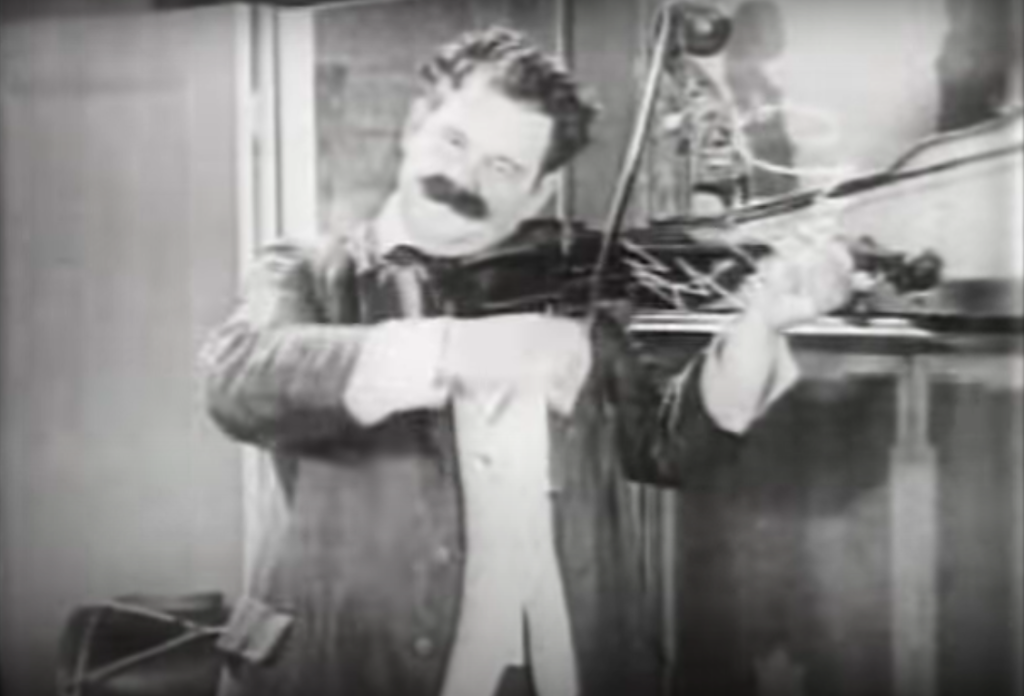
But as for Hardy in those films, his work was neither especially distinguished nor really gave much of a hint of what was to come. Any number of big fat guys with fake mustaches, big greasepaint eyebrows and decent vaudeville experience could have done about as well. The one really good Hardy film was ALONG CAME AUNTIE, which came from late in the silent era and was made at the Hal Roach studios, both relevant factors, I think. Hardy was in an ensemble cast with such Roach staples as Glenn Tryon and the excellent Vivien Oakland in one of several really strong late-silent Roach films I saw at Slapsticon.
Here in AUNTIE, Hardy plays someone closer to “Ollie” and in something closer to the Laurel and Hardy formula (Stan was even one of the credited writers). These Roach “All-Star” films were departures from the Sennett/Chaplin style of slapstick — heavier on character and plot, strongly influenced by the bedroom-farce genre, more subtle in the playing, and centered around familiar situations that escalate into farcical misunderstandings. They were basically the precursor to the sitcom — even being structured around “series” involving star performers.
In AUNTIE, the situation starts with Oakland’s desire to keep her inheritance from a visiting aunt who disapproves of second marriages. Hardy plays Husband #1, who hates Husband #2 (Tryon) but gets involved in the three-way conspiracy to fool Auntie during a surprise visit. By the end, Tryon is in drag, in bed with Hardy and fighting with him too. It’s like a less-rueful Lubitsch at a slightly faster speed. And as has happened three Salpsticons in a row, I’ve been amazed at some of the subject matter the silent clowns could get away with — there’s a ribald joke involving a drumstick in ALONG CAME AUNTIE (and another about urination in BEARS & BADMEN).
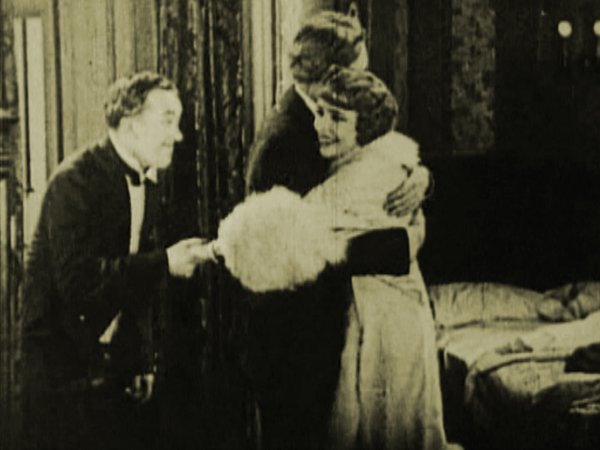
But I think it was pretty obvious that Stan fared better than Ollie as a solo performer. SHORT ORDERS was quite routine: “Stan in the kitchen,” the program book described it as, and that’s pretty much all there is to it. I groaned at the last joke, steak as shoe leather. But the four other Laurel shorts I saw were first-rate.
EVE’S LOVE LETTERS resembles AUNTIE in several ways — basically a romantic farce of deception and gamesmanship, only here it’s a husband and wife (Forrest Stanley and Agnes Ayres), each of whom gets convinced or convinces himself the other is cheating and/or needs to be made jealous and/or taught a lesson about jealousy. And each signs up Laurel, their butler, to aid them and so things spin out of control pretty quickly. There’s an extended brilliantly-timed gag sequence involving Laurel in drag and every permutation possible on “mistaken sexual identity” (have I mentioned the greater depravity of silent-era subject matter to Hays Code talkies). Laurel is a dimbulb servant in a bowler-featured costume that strongly resembles “Stan’s.” Since LETTERS is from 1927, the year Roach paired the two, and there is a note signed “Oliver Hardy,” we’re getting something very close to “Stan.” It’s a better film than Hardy’s AUNTIE I’d say, because while that film just ends without really resolving its premise, LETTERS actually finishes with an ending Lubitsch himself would have proud of — a smilingly cynical take on “no emperor is a hero to his servants.”
With THE EGG (actually shown Saturday at the National Gallery and not as part of the Friday Rob Stone program), Laurel is playing a character rather like Charlie Chaplin’s tramp but without specifically mimicking him — a struggling Everyman, battling the mean foreman at the lumber yard, but finding his way into the board room and foiling a dishonest scheme. The film has class consciousness dripping off the fingers — when leftist critics say the early movies were working-class and immigrant escapism, THE EGG could almost be a time capsule of what they’re talking about.
The opening scenes precisely parallel and rhyme Stan’s morning activities with the rich boss’s. You also get tomatoes thrown at silk top hats, Stan being thrust into the role of fiery union organizer, foremen physically beating up employees for being late, and even explicit attacks on Prohibition (in a 1922 commercial comedy!!) The chases and pratfalls are all excellently done — my favorite being Stan’s efforts to get into work late without the foreman seeing him. But there’s some cinematic imagination too — Stan eavesdrops on a conversation, but instead of title cards, a series of animation-produced words flow into his ear.
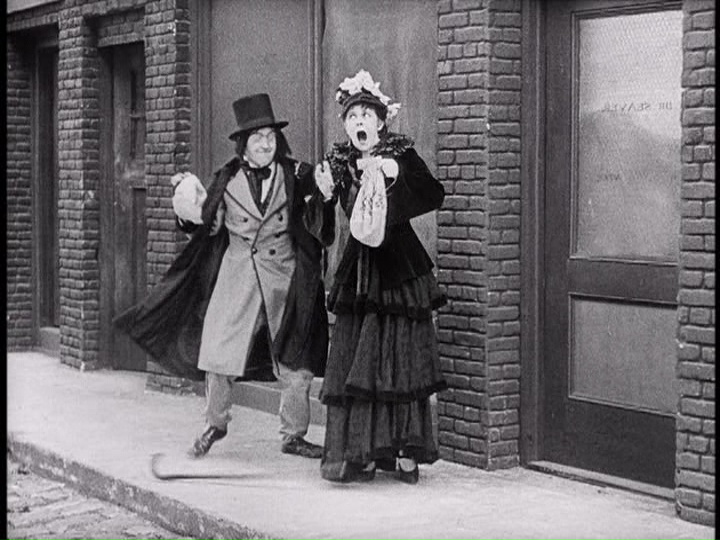
The other two very good Laurel shorts I saw were both what were then called “travesties,” which meant “spoofs” or “parodies” rather than what it now means. UNDER TWO JAGS lampooned the French Foreign Legion/Beau Geste genre (the IMDb lists five silent films with the title UNDER TWO FLAGS, and a sixth film, a talkie with Victor McLaglen), while DR. PYCKLE AND MR. PRYDE — well, if you can’t figure out what Robert Louis Stevenson novella and John Barrymore silent classic it’s parodying, you are forbidden henceforth from reading this sight.
Part of what I loved about both of them was that they showed how strongly Laurel influenced subsequent comics, well into my lifetime. In FLAGS, the gags had a very familiar ring — Stan marching in place slightly out of time (but only just slightly — what makes it funny) while everyone else is in perfect lockstep order, the collapse into the grave pit then immediately standing up and giving an extra salute in compensation (done in the British open-hand style), turning in the wrong direction in mid-march. Plus the slightly stupid, but perpetually eager-to-please look.
I’d seen this all before — Benny Hill, especially when he plays Fred Scuttle, was basically doing Stan Laurel. “The Benny Hill Show” obviously included such silent-film staples as speeded-up motion, mugging to the camera and segments with only musical accompaniment (again especially when Hill was Fred Scuttle). Another Slapsticon attendee, Tommie Hicks, told me that Hill was a silent film devotee and that when Hill died, his estate included a lot of Chaplin and Laurel & Hardy films and memorabilia. With PYCKLE/PRYDE, both my friend Shawn and I immediately noticed the similarities between Laurel and Marty Feldman — the shock of hair, the wide, leering eyes, the mugging acting, the stalking walk and an oddly hilarious mixture of threat and infantilism. I should note that some of these similarities with Feldman and Hill were obviously mutual influence from the British musical-hall tradition, a style and even a venue Laurel never totally left behind.
But PYCKLE/PRYDE and FLAGS are not just homework for film school — the former was the best film I saw at Slapsticon (Rob Stone introduced it as the greatest Stan Laurel solo film ever — get no argument from me and it seemed to go over well generally.) The films are not just funny, they’re fun. Laurel is a wonderful and infectious ham, and clearly having a great time without breaking character and plausibility, cleaning his face with a wipe shot and a smirk. There’s even a funny gag involving the Our Gang dog. But it’s Laurel’s performance that absolutely makes PYCKLE/PRYDE — it flays Barrymore’s grandiosity as Jekyll and turns the horror chases as Hyde into sniggering gestures. And then there’s his wicked crimes as Hyde — unspeakable acts of the vilest depravity, so funny because they’re … absolutely unmentionable on a family blog like this one.
For those who’ve read all the way to the end (yes, this all sat in my Drafts Folder for more than 15 years) and might be curious, here are the best Laurel or Hardy films I describe in this piece. First, ALONG CAME AUNTIE with Ollie:
and then, DR. PYCKLE AND MR. PRYDE with Stan:
From the archives 1: WC Fields
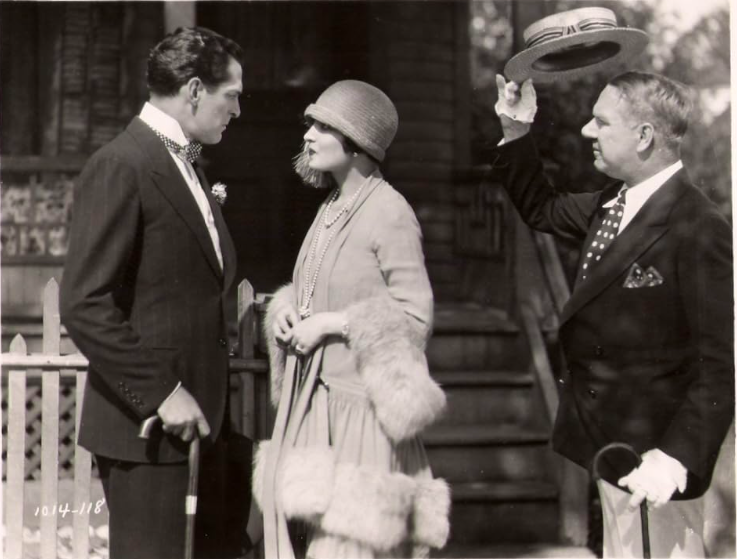
I was looking through my Drafts folder yesterday as I’ve decided to try to blog daily and realized … I wrote a lot of stuff I never published. I’m gonna start with unpublished posts from the 2005 edition of Slapsticon, a silent and early-sound comedy festival that was an annual fixture on my calendar throughout the 00s. The first is about a pair of W.C. Fields films
SO’S YOUR OLD MAN (Gregory LaCava/WC Fields, USA, 1926) 7
POOL SHARKS (Edwin Middleton/WC Fields, USA, 1915) 6 s
You wouldn’t think WC Fields could ever be a good silent-film actor, because so much of the humor in his best known work (shorts like THE GOLF SPECIALIST and THE FATAL GLASS OF BEER and features like THE BANK DICK and IT’S A GIFT) was verbal and also based on his specific delivery. To cite just two details: (1) the swallowing at the end — “I was only fooling and pretending” is so funny because he trails off the last few syllables; and (2) the overblown pomposity — “It ain’t a fit night out for man or beast” is delivered in a voicy Ciceronic declamation and is emphasized by the pause after “out,” the absurd stretching out of “maaan,” and then the slight twitch as the film fades out and he gets ready for the 8th faceful of snow.
But I saw a short (POOL SHARKS) and a feature (SO’S YOUR OLD MAN, which he remade as the sound film YOU’RE TELLING ME), and they showed that he also had real physical-comedy gifts and could even be directed. In a typical Fields child-hating gag in POOL SHARKS, he tipped a chair back to remove a child from it and then sat down, all in a single smooth motion without stopping to think. He later held open a guy’s eyelids with one hand while poking him in the eye with the other. Perhaps by the time of his best-known 30s talkies, his health was starting to get in the way of using his body with the grace and ease required for sight gags.
A sequence in SO’S YOUR OLD MAN is basically Fields doing the even-then-old vaudeville routine of his that later became THE GOLF SPECIALIST, one of the shorts that always shows up on the omnibus collections of his sound-era shorts. While the perpetually-stuck paper isn’t big-scale physical humor, the addition of sound added nothing but a distractingly tinny and amateurish soundtrack (the midget caddy with an attitude also fits in without being so distracting).
In OLD MAN, Fields also allows director Gregory LaCava, a former cartoonist, to use him as an actor. The sequence where he contemplates suicide has at least two perfectly-timed gags, one involving a razor and another involving the window, neither of which require much from him beyond being raw material for LaCava’s mordant montage.
The ironic thing about Fields’ lack of a voice here is that his voice from the 30s and 40s so resonated with me that when the title cards came up, I could hear Fields deliver the lines — “Sadie was the best girl in the cabaret. Until she lost her voice”; “Princess, meet the wife.”
And as a bonus, here is a copy of POOL SHARKS.
Expect a lot from the end of this film

DO NOT EXPECT TOO MUCH FROM THE END OF THE WORLD (Radu Jude, Romania, 2023, 8)
So apparently Jude appeals to me in the same way Godard does to those people who don’t think him an empty-headed, bloviating wanker — as the maker of heady, eclectic free-wheeling essays (though Jude makes other types of films, too).
For almost an hour at the start I was kinda mystified about EXPECT’s three very different threads — 16 mm black-and-white following the harried day of film production assistant Angela’s work on a multinational firm’s industrial-safety film; TikTok videos by a wannabe Andrew Tate in all their stupidity and vulgarity; and scenes from an early-80s Romanian movie ANGELA MOVES ON about a cab driver.
Jude’s film started to come together once we see how the three were connected and it kept getting better and funnier and darker, albeit always in a scattershot vein that keeps this film from ranking with Jude’s absolute best — this being a strictly relative statement though. This film has Nina Hoss playing an Austrian boss in an intellectually fascinating conversation with Angela (Ilinca Manolache) on the drive from Bucharest airport. It also has Angela converse with Uwe Boll playing himself, as perhaps the most appealing person in the movie (really). There’s even the small details … I cracked up at that lead image. In other words, a lot of stuff has been thrown at the wall. It mostly sticks.
I guess I just think that Jude is more socially sophisticated than Godard, that his narrative sense is more disciplined and that his formal provocations make more sense to me. I can’t exclude the possibility that the first and the last, though, are a function of Jude being closer to my age (or the same thing, my seeing his films in their present context).
The last shot is an amazing tour de force. Jude abandons the formal styles he had been using, instead looking like contemporary footage, as if in a synthesis. But it lasts more than a half-hour at degree zero, without a cut or a camera move as people shoot the corporate-safety film that Angela had been building towards. The first Jude film I ever saw was THE HAPPIEST GIRL IN THE WORLD, which built toward the shooting of auto commercial. This shoot goes about as well.
RIP Ryan O’Neal
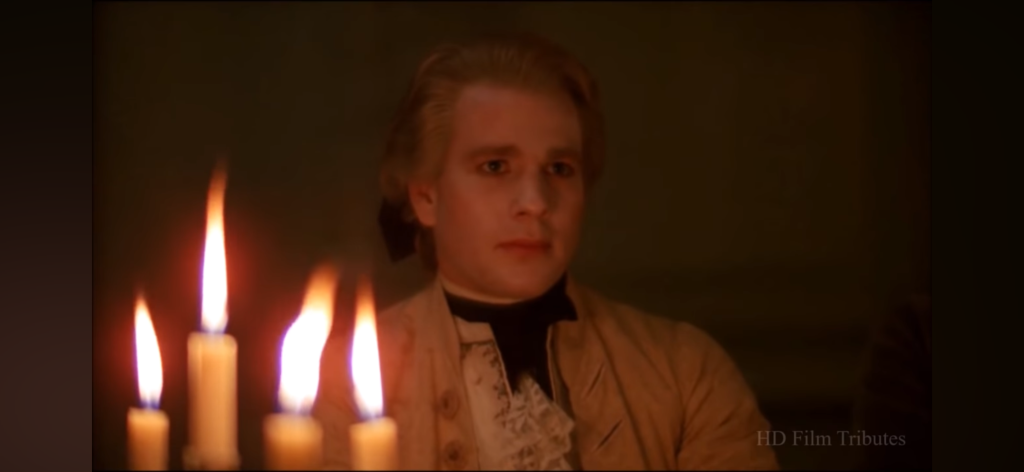
By no defensible critical standard is THE MAIN EVENT a good movie, but I have watched it many times because I love Barbra Streisand and boxing movies both. And it has a scene that I constantly quote around my gym mates. Ryan O’Neal is in the midst of a hard fight and Streisand is in the corner between rounds.
Several times I’ve told buddies in their fight prep “this is very important … try to hit him more than he hits you.” It’s usually funny enough and only with some have I been able to muster the courage to tell them that I am quoting a Barbra Streisand movie.
By any defensible critical standard, BARRY LYNDON is a great movie and Ryan O’Neal was the ideal actor to embody him — handsome, rough-hewn, roguish and ambitious with a puppy dog look in his eyes. When he walks after a freshly broke Marisa Berenson to Schubert, the desire is palpable, even through the chalky makeup and the gavotte of proper courting.
November 2023 roundup
These are most of the films I saw in November, largely based on the tweets I wrote at the time, with 280-character compromises smoothed out, some additions and elaborations, etc.
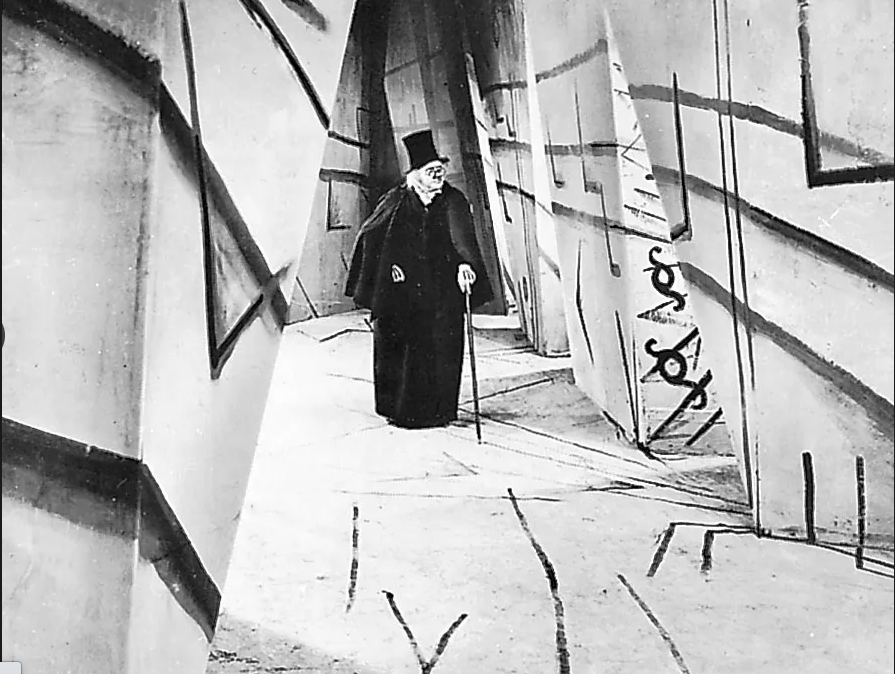
THE CABINET OF DR. CALIGARI (Robert Wiene, Germany, 1920) 7 R
Put my finger on why this is a film I admire and respect more than love … it LOOKS LIKE painted sets, not a madman’s distorted sense of reality, so its emotions remain entirely conceptual rather than felt. You’re telling yourself, “those painted sets are symbolic.” The concepts and symbols DO work, but at an intellectual level. Werner Krauss and Conrad Veidt are great at highly eccentric expressionism, as is the Anvil Orchestra. However its creepy score (unfortunately) reminded me a little too much of its score for A PAGE OF MADNESS … about a madman’s distorted sense of reality.
NEXT GOAL WINS (Taika Watiti, USA, 2023) 3
Barely a comedy, more like a would-be heartwarming light “entertainment” with an Intersectional Lesson (admittedly based IRL). But the script was so undercooked it was still moving and so feel-good as to cause saccharin-related cancer. I know it’s bad form to review an audience, but by way of pointing out that this isn’t Victor being Snobby Curmudgeon — I actually laughed more than anyone in the audience (3, 4 times): at a gag involving a bus and at a couple of Oscar Kightley’s lines. Everyone else was silent. Oh … and the level of the scriptwriters’ knowledge of / interest in soccer can be measured by two details: a title card, referring to “2001 World Cup qualifiers” and a player saying “30 seconds to go and then the referee added on five minutes??”
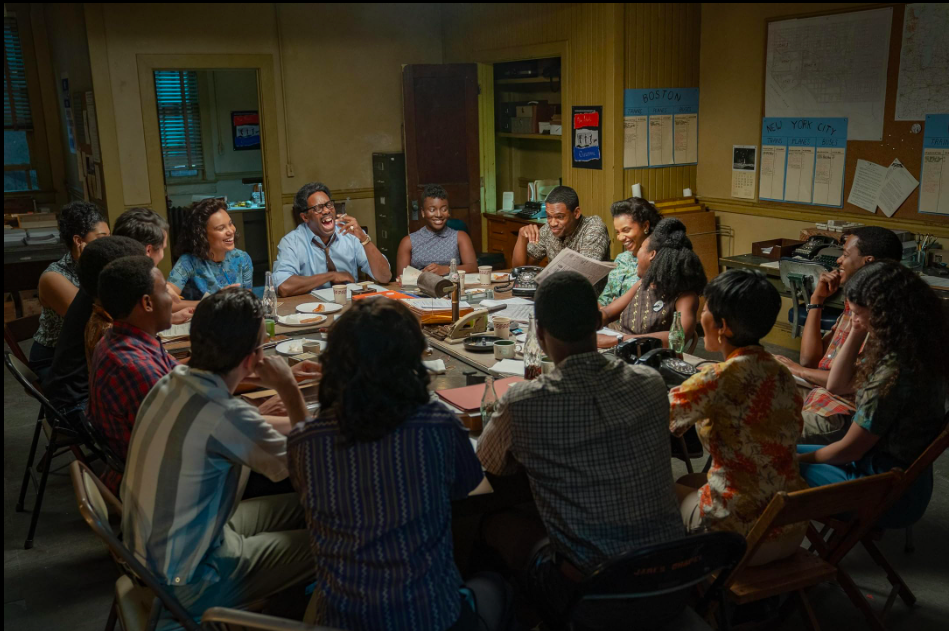
RUSTIN (Gregory Wolfe, USA, 2023) 6
Not quite as theatrical as MA RAINEY’S BLACK BOTTOM in its staging, but in some ways even more theatrical in its performances and writing (and unfortunately August Wilson is not the writer).
Though it follows the good-for-biopics rule of staying compressed to one period in Rustin’s life (and most of that in 1963 and organizing the March on Washington), it still ticks off both the standard biopic beats it still ticks off both the standard biopic beats, “thanks” to subjective flashbacks and speeches about Ma Rustin. All the 2023 intersectional issues (no female speakers!) still make a cameo … “ticks off” is not a compliment, BTW.
However, any Bayard Rustin pic though HAS to be intersectional on one front — his open homosexuality. And that material, both his liaisons and their impact, and its … ahem … intersection with the era’s civil-rights leadership is where the film lives and breathes. Well, that and Colman Domingo, who is (no other words for it) flamboyant and theatrical without becoming a caricature, and while knowing when to dial it up and dial it down. And who knows when to show other sides to his persona. It’s a terrific performance that deserved better support than it gets. It’s not Chris Rock’s fault that he can only play Chris Rock; it’s the director/moneymen’s fault for casting him as Roy Wilkins.
One moment I chuckled … a very contrived scene about what a great organizer he is has a series of underlings rattle off stats to the movement’s leaders. One of them sarcastically thanks “Bayard and the Rustinettes for putting on their revue.” It was EXACTLY what I was thinking.
ALL DIRT ROADS TASTE OF SALT (Raven Jackson, USA, 2023) 1
If you like movies that suck profoundly, go ahead and ignore me. I reject the premises of Le Cinema du Obscurantisme … it just isn’t my job (as viewer OR critic) to make sense of or untangle what the artist doesn’t care to make at least intelligible.
There are no characters in this painful experience, there are no discernible stakes or plot, I think it jumps around in time but certainly to no pattern. It’s all woozy Malicky rural lyricism about gorgeous nature (yawn…) and characters photographed from behind (lest we recognize or identify with them. Only Jackson lacks Malick’s narrative panache and crystal clarity (I’m not kidding in the slightest).
PRISCILLA (Sofia Coppola, USA, 2023) 7
It’s Sofia in a holding pattern — but what a pattern she has. It doesn’t become great like MARIE ANTOINETTE or THE BEGUILED because I’m not sure it has too much to say about something beyond the ennui of the rich. But she is the Yank Antonioni.
Hat-tip to whoever dubbed her “Queen of the Needle Drop.” The last one — Dolly Parton — was utterly perfect, though apparently some folk think it so obvious as to be pathetic. In my view, it’s not only emotionally perfect as in the moment characterization, but it’s also emblematic of the movie. The scene / song is clearly ending the movie even before it does but it still leaves us wondering “is that all there is?”
PRISCILLA also is a case of extratextual knowledge enriching the film — in this case (1) that the IRL Priscilla Presley being executive producer / writer of the source autobiography; and (2) that Coppola did not get rights to use any Elvis songs
Priscilla’s role means this is the “authorized version” of her life; which makes material that could come across as cradle robbing not seem that way. The film portrays Elvis as a perfect gentleman and Priscilla’s parents as appropriately concerned but being pushed by her, as if the world’s most famous man was just the boy next door and as if the age gap weren’t 10 years but two. Textually there is no question that PRISCILLA does not portray a power-abusive or manipulative courtship of a minor — the marriage obviously falls apart but on adult grounds. It might come across differently if this were (say) Un Film de Roman Polanski and/or made after Priscilla’s death or otherwise unauthorized.
As for the absence of Elvis music … it’s not only contributes to the dreamlike unreality of a woman defined as not-Elvis, but encourages the Queen of the Needle Drop to be at her most royal. And the film is at its best when it combines these two things. My favorite example: when early 20s Soldier Elvis, having clearly recruited help from a soldier to recruit Priscilla like a groupie for a green room (BUT NOT!), wants to woo Priscilla (14) by playing on the piano, he doesn’t play an Elvis song, but “Whole Lotta Shaking Going On.” By Jerry Lee Lewis. I repeat “by Jerry Lee Lewis.” How can you not laugh and gasp at the sheer genius, the chutzpah and yes, a genuine portrayal of A Love That Dare Not Speak Its Name. This Priscilla Presley is not a victim (at least not yet).
Maybe I’m talking myself into higher grade in re the “something else” I’m not sure Coppola achieved here. Because just as MARIE ANTOINETTE was seen as a defense of Paris Hilton, and SOMEWHERE a tender portrayal of quasi-incestuous feelings (real taboos), maybe this really is a film about a perfectly gentlemanly cradle rob.
WITHIN THE LAW (Frank Lloyd, USA, 1923) 3
Norma Talmadge is sent to jail for employee theft and then, upon release, vows vengeance against men and the rich by playing the “compromised honor” lawfare game. Talmadge has an interesting face and ideal for the role of a vengeful woman, but otherwise this is a painful experience. The first half is as overdetermined as Marx, as didactic as Griffith and as stacked as Mae West (it gets cheers from textually explicit moralism). The second half, which I suspect closely follows the source play, becomes an equally nonsensical (Opacity Division) series of scams and capers, with varying victim-perp alignments. But in never builds satisfactorily — Talmadge and her fwightened accomplice, for example, go from poor to rich in one cut.
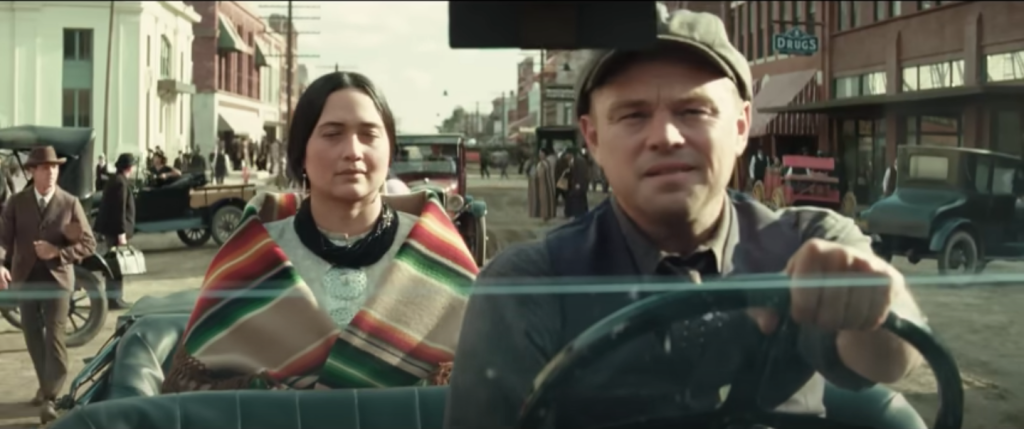
KILLERS OF THE FLOWER MOON (Martin Scorsese, USA, 2023) 8
I actually saw this twice back-to-back at the same theater, for unintended and unimportant reasons, but that gave me an unusual and, I think helpful, experience.
It’s basically GOODFELLAS without excitement or glamor … which sounds like a terrible idea. It’s not exactly NOT that. It’s not a fun view and it definitely plays much better on second viewing than on first (it went from 6 to 8). And KILLERS both opens and closes with huge bangs (maybe the film’s two best scenes) and some of the weird performances (esp. Leo) fit well with what Scorsese is doing, once you realize that’s what he’s doing.
KILLERS has the feel of a slow-paced auteurist masterpiece that’ll get reclaimed in later years … cf contemporaneous reactions to BARRY LYNDON, which is now as firmly canonized as any Kubrick. The thematics and parallelisms and subtexts are all there once you acclimate to a seemingly un-Marty film. Or maybe look at Roger Ebert’s initial review and reaction to KING OF COMEDY, another Scorsese movie that he saw as lacking his usual forward thrust and lively brio. Which … it kinda does, but, as he came to see, it’s great for other reasons.
Lily Gladstone is MVP and while the film loses forward momentum when she is reduced for about an hour to playing Camille on her deathbed, it kicks into overdrive when she gets off it and the last drama, though not the very last scene) is hers. There’s no getting around the fact that she is the moral center of the movie.
I get presentist complaints that the other Osage are underdeveloped victims. But … they ARE innocent victims. Speaking generally, crime victims are less interesting than criminals unless they are somehow complicit in their victimization. Scorsese doesn’t depict them as complicit, but they are a bit unwise — those scams on disbursement day are kinda pathetic in their simplicity. But then the criminals are simpletons too. You can say DiCaprio’s performance is over-the-top (I disagree but that’s mileage varying) but it’s clearly both intentional and appropriate.
THE LADY BIRD DIARIES (Dawn Porter, USA, 2023) 7
It tells you almost nothing about history you don’t (or shouldn’t) already know, but a lot about Lady Bird Johnson herself and some things about first ladies and how they wield(ed) power (I did like Barack’s cameo at the end). And there are some historical events I had forgotten or didn’t know — the Walter Jenkins homosexual scandal and how she-vs-he wanted to handle it; the heckling at her whistle-stop tour; LBJ’s reluctance even to run in 64. And it’s good to have her perspective on Eartha Kitt, RFK Sr., Jackie Kennedy et al
The film-making is similarly strong in an understated non-overt manor — primarily in the field of finding the right visual images and archival footage to accompany what is the occasion for the movie — Lady Bird’s own spoken-into-tape recordings of her time in the White House. Suffers a little from the fact that the most dramatic day — her recounting of JFK’s assassination — necessarily occurs right at the beginning (it’s even the start of her decision to tape herself), so in a sense the film really had nowhere to go, but down.
There is a real character trajectory to Lady Bird — she becomes both more protective of her husband and more skeptical of the forces he helped unleash as the film wears on. As I said at the start, this isn’t something not obvious from history but, it’s good to hear it from the horse’s mouth. Above all, Lady Bird was a woman of another era — attentive to appearances and details of public theater; and thus able both to wield power while carefully and fastidiously never seeming to. As I’ve sometimes said in re Iranian movies — women in traditionalist societies were not patsies.
So you inevitably ask yourself … how would a Jill Biden documentary play in 2070? I doubt it would be as interesting as this film (despite its limits) is.
Alexander Payne, prophet
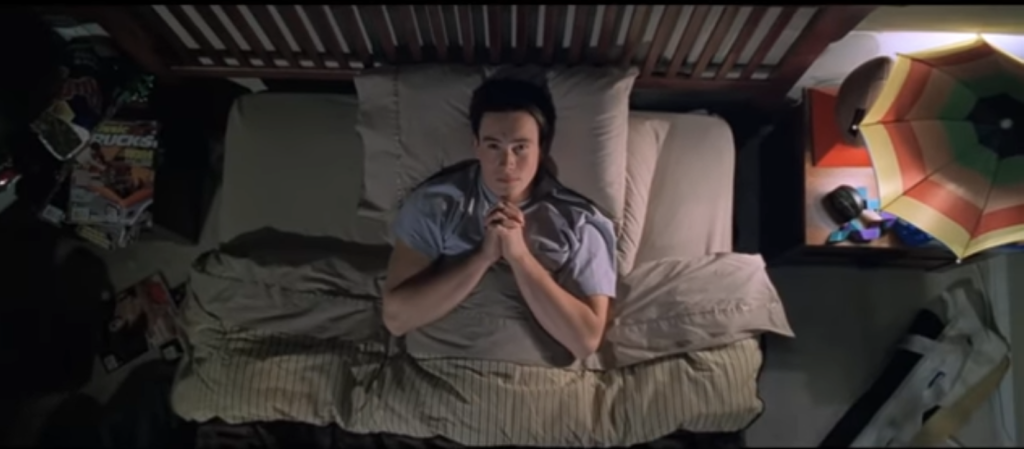
Remember how in ELECTION, Paul Metzler lost by one vote. And how in the scene on election day, when he actually goes to cast his vote, he decided it didn’t feel right to vote for himself. So he instead voted for Tracy Flick. (In one of the approximately 7365197326 details that make ELECTION a masterpiece, Tammy Metzler actually got the most votes, but the Powers That Be decided she was ineligible because … I think she led an insurrection or something like that.)
Anyway, that actually happened in real life.
Damion Green, 40, of Rainier, ran for the city council but did not want to vote for himself on Election Day in November, The Olympian reported.
”I didn’t feel comfortable. I thought it was kind of narcissistic, so I didn’t,” he told KING 5.
The result of the election, for city council in Rainier was Ryan Roth, who voted for himself just like Tracy Flick, who voted for himself, 247 votes; Damion Green, who didn’t, 246 votes.
Green even echoed Paul’s prayer, the only remotely sincre one of the three. “The Lord didn’t want me there, so I didn’t get it,” he told The Olympian.
Shooting at the legs, with bodyache … this is WARRIOR
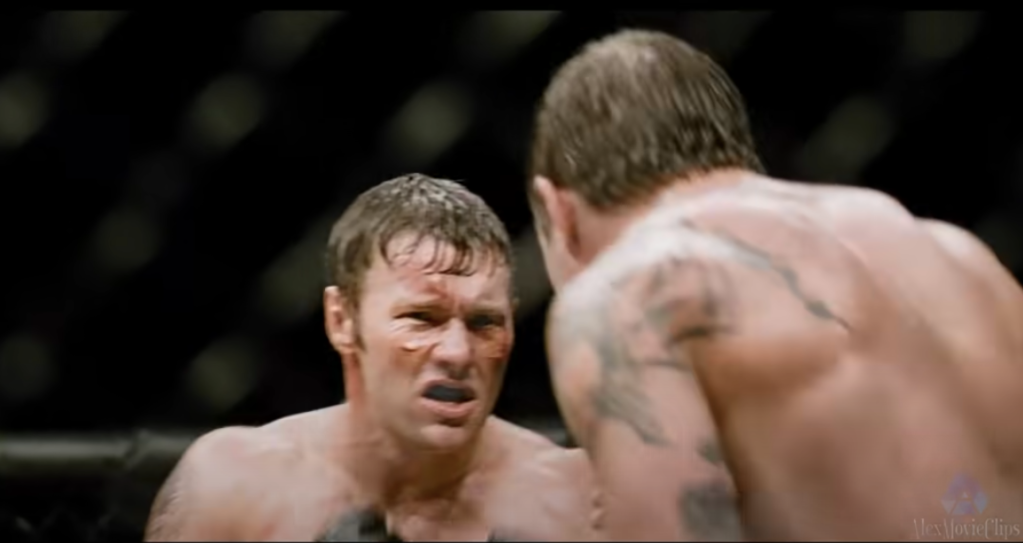
I came across WARRIOR while channel surfing last night and caught the climactic MMA fight between Joel Edgerton and Tom Hardy (I would say “spoiler” but it’d only be a spoiler to somebody who’d never seen a fight movie). I hadn’t seeen a significant part of the film since its 2011 release, when, though I was a fight fan, I had never trained.
To speak only of the fight, I can’t say I was crazy for it. The two actors are both credible and it looks like it’s actually them fighting. And the fight has a credible trajectory — the bigger Hardy overpowers his brother with bullying standup and strength moves but some slick submission moves turn the tide.
But overall … meh. It simply wasn’t realistic enough for me in the era of the awesome breakthroughs of CREED and CINDERELLA MAN in the field of combat-sport realism. I didn’t like the sound mix at all, which took away from the tough reality of two men trying to kill each other, often featuring an insipid song as the sounds of violence and even the crowd noise fade in and out. It felt more like a highlight reel than a fight. Visually, the shallow focus isolates supporting characters in the crowd but also looks to be covering the lack of a crowd to shoot.
And I hate HATE the eternal movie cliche that the ref never stops a fight. Hardy is allowed to keep fighting for more than a whole round as his left arm is practically hanging off his shoulder, broken by an omoplata and a refusal to tap.
Though I will say that the one thing I now know to be credible that I didn’t then is the reconciliation between the estranged brothers. Exceptions duly noted, fighters come to love our opponents once it’s over.
I’m Your Man
I’M YOUR MAN (Maria Schrader, Germany, 2021) 6
The last couple of scenes are so brilliantly done, so wise (this is not HER) and so understated, and the first scene so slyly suggestive as the date goes off the rails that I really don’t trust my “meh” reaction to the intervening 95 minutes.
Had the film ended with Dan Stevens’ departure, I’d’ve been debating between 4 and 5, partially because so much of I’M YOUR MAN wasn’t terribly funny to me. It was fitfully amusing, always genial, and had nothing cringeworthy, sure. I probably went in with the wrong expectations, expecting the film to be more of a farce than it is because the premise — human-like robots tailored to be the perfect mate — is so absurd. I kept thinking of MORK AND MINDY but with Dan Stevens rather than Robin Williams. That’s not a good thing.
How much is a specific byproduct of his speaking German (I admit I did love the excuse for a British accent so pronounced even I could hear it) is something I can’t say, but Stevens’ performance is definitely somewhat awkward and that’s exactly right for a robot (hard not to think of STARMAN also). Sandra Huller is equally awkward, albeit in that chipper human-resources manager way, and that becomes brilliant. Maren Eggert has the hardest role, playing a skeptic of the whole premise of the product and a normal effed-up person with contradictory desires in a post-modern hall of mirrors. She even pulls off a speech about being in a play in which she’s both performer and audience.
I know it’s unfair to compare a “German comedy” to a “German comedy” from five years ago (they all look alike) even if they both feature Sandra Huller. But there was just nothing here as uproariously memorable as “The Greatest Love of All” or petit-fours. “I’m Your Man” plays more in the dramedy vein, with much of the humor wry (first line I wrote down was “I detect a reaction to my correct use of the subjunctive”) and minor-key, like the unexpected reunion with the chubby old man from the first scene. And those last two scenes, one a lengthy narrated monolog, the other a trip to Denmark, work so well because … talking vaguely … they’re really about how the film’s absurd premise relates to something not-absurd romantic longing and the existence of the custom-designed perfect mate.
Small Engine Repair
SMALL ENGINE REPAIR (John Pollono, USA, 2021) 7
Well that took a turn to the fuckin dark…
It’d be cruel and unfair to compare SMALL ENGINE REPAIR to Takashi Miike’s AUDITION, which is just one of this century’s best movies and has the greatest tone shift in movie history. But Pollono is definitely trying to pull off something similar, gliding from amiable-ish genre piece (here, a bro-hangout film) into the outer realms of ultra-violence. However while Miike also shifted character, POV and possible reality as well as tone, Pollono doesn’t. As a result the Japanese film glides past and makes us swallow the absurdities and contrivances of torture porn while the American one doesn’t.
Still until those narrative contrivances kick in, REPAIR is a very enjoyable bro-hangout film, New England working-class division. It precisely nails the dynamic of three best drinking buddies — Frankie the recovering alcoholic, Packy the dim bulb, and Swaino the instigator. “Fuck you” is a term of endearment among them but the circle is starting to age past the sell-by date and it now looks kinda pathetic or more. REPAIR has some of the underlying mix of danger and fascination thereof as Joe Pesci’s scenes in GOODFELLAS, since it opens with Frankie being released from jail and the first act ends with a near-fatal fight. Cut to Recovery Frankie drinking and smoking.
The second act is a reunion night at Frankie’s garage, which is capped off with a visit from a drug dealer, which kicks in the third act and the excrement making contact with the rotating blades. The long flashback in which the older men tell the college-student dealer about watching the 1986 World Series with their fathers would make a great short-subject and it encapsulates the film in miniature — “toxic masculinity” consumed and narrativized as nostalgia.
I lol’d at lines like “that’s homophobic” and “my people have been marginalized and oppressed by white people” being used in these contexts — it’s 2021 nominally but the year’s High Wokeness has trickled down imperfectly. Even in 2021, I can believe that some folks still are ignorant of Dis Instagram Shit (“like a fucking Asian teenager”) and this tech disconnect also sets up one of the film’s best lines, “I have 2,854 followers” as a plea for one’s life.
But while I appreciated the head fake of the perfect murder, which had my eyes rolling as it happening since these three are varying types of fuck-up, I cannot believe that a major law firm would drop a partner over Instagram posts of the type described here. Nor do I believe the parallel threat that wraps up the plot would be as effective as it is. Nor do I believe the line “whore daughter” in that situation. Nor can I discern why on earth Frankie turns himself in to the cops, and that this would have no effect on the other conspirators. Too bad really.
Cry Macho
CRY MACHO (Clint Eastwood, USA, 2021, 2)
Risible from beginning to end unfortunately. Watching a 90-year-old man play a rodeo-star turned cowboy bounty-hunter is as painful an experience as watching a 55-year-old man fight mixed martial arts.
The script is one tortured contrivance after another — the very fact that Dwight Yoakam hires a 90-year-old man to go into Mexico and kidnap his estranged son; how quickly Eastwood finds both a family home and a 13-year-old boy based on only a 6-year-old’s picture; his finding which particular cockfight in Mexico City, a city of 20 million people, the boy is at; that a Texas rodeo star would speak sign language but not Spanish; the equally script-convenient variable competences of the Mexican police and Clint’s Spanish. And let’s just say CRY MACHO has the most ridiculous film climax involving a chicken since KILLER JOE.
The two lead performances are both very bad. Eduardo Minett plays the tween quarry and he can barely exist on camera but he does carefully recite every line correctly. As for Eastwood, I get that he’s deliberately playing a shadow of his formal self. But he’s just too physically limited even to do that, at least in the manner he does here. Howard Hawks gradually debilitated Robert Mitchum and John Wayne during the course of EL DORADO. Instead, Eastwood directs himself taming a wild horse. Only, in the film’s low point, most of the scene is in long shot, intercut with close-in shots of Eastwood moving up and down without a horse in the frame. That’s the stuff of Ed Wood.
The Eyes of Tammy Faye
THE EYES OF TAMMY FAYE (Michael Showalter, USA, 2021, 8)
What if conmen believe their con? It’s not exactly that we come to sympathize with them, but they definitely become harder to hate and the other things about them come to the forefront, including “how did they come to believe their con?”
THE EYES OF TAMMY FAYE manages the remarkable feat of portraying someone known as a caricature without engaging in it itself. Partially it is physical — the makeup changes over time and Jessica Chastain isn’t that great a resemblance (especially facially) so you see a performance not an imitation. But mostly it’s because Tammy Faye was many things, but not a phony like many of us assumed at the time when we heard about (first detail to immediately come to mind) the air-conditioned doghouses. She and husband Jim were pentecostalists filled with enthousiasmos, not fundamentalists filled with the scriptures. “All is grace” ends Bresson’s “Diary of a Country Priest” and this film (accurately from all accounts) portrays one way to take that — the prosperity gospel (heresy).
From the very beginning of their courtship and ministry, the Bakkers saw God’s giving hand in everything with a naive good-heartedness, and an effervescence. The film portrays a famous interview with Ted Koppel on “Nightline” in which they frankly admit they had no idea how much money they made and never really thought to ask. It sounded ridiculous (and the film leaves out Koppel’s sick rebuttal), but … this film makes it believable.
Tammy Faye in particular didn’t have the cynicism, guile or calculation that conmen need. She was so trusting and so gifting a person that it never occurred to her to ask whether it was a good use of money to give her mother a fur; it kept the woman warm. This naivete in Tammy Faye, whose POV the film takes, also means that some of the biopic shapelessness and the murkiness of the fraud charges / court procedurals in the story — criticisms one could justifiably make — actually play exactly right. There is only the “and then” experience.
The ending clinched it for me on these grounds. The film opens with Tammy Faye she needed to wear her makeup because that’s her role — seemingly the opposite of what I just said about not being a phony. But the last scene is her singing on a concert stage, starting her comeback (“I hate that word, it’s ‘return’!”) to being the celebrity she has made herself into. Or at least thinks she has. As an icon of a most American of religions, singing the most of American of songs, as the flag unfurls. Life, which can be strangely merciful, had taken pity on Tammy Faye Bakker. The dream she had clung to so desperately had enfolded her.
This secular film is also enjoyable, for some of us anyway, in its portrayal of how she and Jim were so different from the fundamentalist Jerry Falwell (a pet hobby-horse of mine is how ignorant much press coverage is of the subtleties and details of what I might as well call “conservative” religion). And, helped by history here, the fact that Falwell is both unsympathetic and the one who punishes the Bakkers’ fraud.
However, I have to say that a great film would have has a less-caricatured Falwell (I flat out didn’t buy the late line from the mother) and maybe more about how Tammy Faye became a gay icon post-fall (it’s a bit of a cheat to put topic-H into two scenes pre-fall, even if those conversations actually took place as portrayed). And does it need to be said that a great biopic film would have no IRL footage of its subject(s) over the credits.
Billy Wilder, 1906-2002
This was written back in 2002 for a friends’ webzine, which is now defunct. It also is one of the pieces of film criticism of which I’m proudest, a career appreciation of one of my very favorite directors.
You’re Norma Desmond. You used to be in silent pictures. You used to be big.”
“I am big. It’s the pictures that got small.”
That line from SUNSET BOULEVARD would easily be the most famous line ever penned by its scriptwriter if the scriptwriter were practically anyone besides Billy Wilder. In fact never mind Wilder’s whole ouevre — it may not even be the most famous line in the movie, which also features “All right Mr. DeMille, I’m ready for my closeup” and “We didn’t need dialogue; we had faces.” And yet ironically, the genius of SUNSET BOULEVARD contradicts that last line and its legend as an hommage to silent pictures-it’s a very “talky” picture, as if Wilder were playing a joke on his own creation by creating such a memorable line decrying dialogue.
But then, Wilder was double-edged like that. When he died this spring, the obituaries on the daily news wires knew what films were the acknowledged masterpieces to cite immediately – SOME LIKE IT HOT, THE APARTMENT, SUNSET BOULEVARD, DOUBLE INDEMNITY and usually two or three others early on, as likely as not reflecting the writer’s personal tastes. And the writers immediately picked up on Wilder’s misanthropic persona. In its first paragraph, the Associated Press obit called him an “Austrian-born cynic.” Both the AP and Reuters obits cited William Holden’s crack that Wilder had “a mind full of razor blades.” And Francophobes everywhere still treasure his assessment of France as “a country where you can’t tear the toilet paper but the currency crumbles in your hands.”
Wilder died with his reputation at its peak. He won the Academy’s Irving Thalberg Award for lifetime achievement and a similar award from the American Film Institute. When in 1998 AFI picked the 100 best American movies, four Wilder films were on the list; when it surveyed the 100 funniest American movies two years later, SOME LIKE IT HOT was No. 1. In Roger Ebert’s book The Great Movies, Wilder and Alfred Hitchcock are the only directors to have three films in it. Oscar-winning writer-director Cameron Crowe published a book-length interview with him. According to Crowe, at a 1997 Directors Guild of America symposium, the guild’s four present nominees for that year each named his greatest influences: “All agreed on only one name — Wilder.” Yet that image of Wilder as a cheap cynic, easy as it was to derive from his films and his public interviews, has clung to him, although, as Crowe’s book points out at length, it’s far too simple an image. He made some films in other veins completely, only to see them founder at the box office. Even his cynical films were never as cynical as their reputations.
Wilder’s signature narrative centers on a disguise or a con. For a Wilder character, the movie’s events involved the most important roles he ever played, as a character in WITNESS FOR THE PROSECUTION put it. Practically all of Wilder’s movies have at least a sequence (if not the whole film’s premise) involving a heretofore-decent person engaging in disguise, role-deception of some sort, or passing for somebody he isn’t in service of some scam. Of course, events always produce snowballing consequences that the scam artists don’t quite figure on — and that’s usually where the comedy and/or pathos come.
The director denied there was any autobiography in his obsession with role-playing in his movies. “That did not occur to me,” he said in his interview with Crowe. “I was not playing roles. That did not happen in my life. I was playing all the cards open.” He then, oddly, expressed a kind of gratified amazement that Crowe was asking him the question. Yet there were other too-obviously autobiographical touches repeated in his movies too often to be coincidence. For example, about half his directorial credits featured either Americans in a European setting or at least a sequence involving Germans or the use of the German language in an Anglo-American setting. Therefore, it’s hard to take seriously a total protestation against seeing Wilder’s films autobiographically and so coming to the conclusion, with Andrew Sarris, that this obsession of Wilder — an Austrian Jew who lost most of family in the Holocaust — reflects “the director’s own feelings of perpetual insecurity.”
The schemes themselves range from sweetly motivated (Lord X in IRMA LA DOUCE) and necessary (fleeing gangsters in SOME LIKE IT HOT) to petty vice (a desire to pay half-fare in THE MAJOR AND THE MINOR) and outright life and death (ACE IN THE HOLE and THE PRIVATE LIFE OF SHERLOCK HOLMES) But like in any good conman story, the films often invite a sneaking admiration for the conman’s audacity, particularly for examples as outrageous as the convoluted scams in THE FORTUNE COOKIE or KISS ME, STUPID, which involve regular Joes trying to get a piece of the pie (and a deee-luxe apart-ment … in the sky-yyy). The cons in these two films are elaborate, but they’re coming at the expense of, respectively, the NFL and its army of lawyers, and a greasy Lothario. As with the mobsters in SOME LIKE IT HOT or the newspaper-reading public as presented in ACE IN THE HOLE, there’s just no question of identifying with those whom the scam is intended to fool.
It’s hard to believe that Wilder was once considered coarse and vulgar. In his interview with Crowe, Wilder noted the furor over THE APARTMENT, in which a low-level functionary, C.C. Baxter as played by Jack Lemmon, rents out his apartment to his bosses for trysts with their lovers. It’s “a movie about the guy who climbs into the warm bed left by two lovers,” Wilder said, noting that it was called a “dirty fairy tale.” Just four years later, in 1964, the Catholic Legion of Decency went further, handing KISS ME, STUPID the scarlet C-for-condemned rating — something it had not done since 1956.
Viewed today, the movie is almost tame — the central plot involves a pathologically jealous husband who, for the sake of trying to sell a song to a womanizing Vegas lounge lizard played by Dean Martin, has to have the singer in his home. Figuring that Dino would seduce his wife, the husband hires a prostitute to play that role. One shot features a tailor’s dummy — female, correctly-shaped of course — while Dino talks frankly about his habitual conquesting; there’s a reference to Playboy when the husband feigns amorousness; and several other jokes and situations come in at that level of risqueness. The film’s third-act twist implies (though never shows) a couple of adulterous situations. Those two films would probably get a PG and a PG-13 today.
It’d be easy just to say “well that’s how far we’ve fallen,” and that wouldn’t entirely be wrong, but it would miss something important that may explain why Wilder may very well be the favorite studio-era director for my generation of cinephiles, film critics and filmmakers. I think the reason for that is that Wilder was the director who best straddled the Production Code era and its collapse. He had the craft and professionalism of the studio era without its oft-absurd comstockery of not showing toilets or having to have Lucy say she’s “expecting.” Here, in Wilder, is the director who handles bawdy subject matter and jokes about other movies (in two separate movies, he makes jokes about James Cagney’s grapefruit-smashing scene in PUBLIC ENEMY) without collapsing into AMERICAN PIE territory or pomo decadence, who shows that double entendres are most fun when they were kinda naughty — neither unspeakable nor all-too-speakable.
It was partially the times, but also Wilder’s own sensibility — he understood that understatement, implication and withholding are more essential, not less, when telling jokes about sex or other bodily functions. For example, a typical joke from 1966’s THE FORTUNE COOKIE had shyster lawyer Walter Matthau holding a metal hospital bedpan from earlier in the scene while telling the would-be-injured Lemmon “I’m handing you a quarter million dollars on a silver platter.” Nothing is said explicitly. Wilder assumes from Matthau twitching the bedpan-holding arm for emphasis that we’ll get both the immediate joke and also the implication about all the crap that the quarter-million will bring into Lemmon’s life.
As was often the case, Wilder cited his mentor Ernst Lubitsch as his model. “He realized that if you say two and two, the audience doesn’t have to be told it’s four. The audience will find it themselves; let the audience find the joke. There was always an innuendo in setting up situations, and you were rewarded by the laugh of the people who added it up,” Wilder said. (Nor was the importance of implication and discretion limited to Wilder’s direction of comic gags — witness the murder in DOUBLE INDEMNITY where all we see is a close up of Barbara Stanwyck’s face.)
Wilder’s kind of humor (however coarse in content or implication) therefore relies on a certain moralistic norm, at having social or religious restraint to play off. And that is no less true for the humor’s moral implications. For example, you could fill Norma Desmond’s swimming pool with the ink that has been expended on how SOME LIKE IT HOT supposedly deconstructs gender roles, mocked the sexual anxieties of the 50s and all that. Of course, this ignores that the film is a farce, a laugh-generating machine that relies heavily on incongruity and embarrassment for its humor. In one scene, after Lemmon’s female alter ego “Daphne” gets a marriage proposal from the millionaire Osgood, Tony Curtis asks Lemmon incredulously “why would a man want to marry a man?” Lemmon answers “security” and continues playing the maracas. I have no idea how that joke, premised on Lemmon’s missing the point of Curtis’ question, could ever work if the gay marriage folks get their way and a man can marry a man as easily as a woman. And forget about the whole last scene, where Daphne tries to weasel out of marrying Osgood, building up to a line that Ebert has called “the greatest closing line in Hollywood history.” The punch line has no punch in a world of polymorphous perversity.
Wilder’s steamroller pacing and irony-drenched plotting anticipates the cinema of the then-future (another reason his films are still as watchable as ever). But the Viennese wiseguy Wilder also had another side, and that was his love for the Lubitsch era – the fin-de-siecle world of the Victorians and continental Europe with its graceful courtliness and good-natured manners, the importance of appearance, the sexual restraint, and strong emphases on honor and dignity. Its also a world tinged with the sad regret of an era about to end and replaced with the coarsely authentic, mechanized, rational-economistic 20th century.
In interviews, Wilder constantly expressed his admiration for director-producer Lubitsch, the only influence he explicitly cited in Crowe’s interview book. Lubitsch directed Wilder’s scripts for NINOTCHKA and BLUEBEARD’S EIGHTH WIFE, and as a producer at Paramount, helped Wilder break into American films. Wilder always kept a sign in office asking “How Would Lubitsch Do It?”
But Wilder showed his romantic side and that love for the Lubitsch era and its mores in only a few films – most particularly LOVE IN THE AFTERNOON and THE PRIVATE LIFE OF SHERLOCK HOLMES. In both the former film, a rueful May-December romance from 1957, and the latter film, a melancholy detective romance released in 1970, Wilder moves the stories at a decelerated, almost glacial, rate compared to rat-a-tat-tat pacing of the comedy films he made in the intervening period. As the narrator in THE MAGNIFICENT AMBERSONS put it, “in those days, they had time for everything.”
Because it’s so unWilderesque on the surface, THE PRIVATE LIFE OF SHERLOCK HOLMES can be a baffling experience on first viewing – and it was a commercial and critical disaster in 1970. The first time I saw the movie, I was rather indifferent to it. Then an essay on the film by critic Richard Corliss in his book “Talking Pictures” made the whole film come alive in ways totally unexpected to someone expecting from the title to get a suspenseful whodunnit spiked with some juicy sexy soap opera. The film’s richly decadent romantic style and Robert Stephens’ slow, archly-fruity line readings made Wilder’s Sherlock not the first man of the 20th century but the last man of the 19th, an artist learning he is on the edge of anachronism in a world of such dishonorable cowardly methods of surreptitious warfare as spies and submarines – and this takes place a century before such advances in this field as civilian suicide bombers. Subsequent viewings have brought me more-or-less around to Corliss’ opinion that THE PRIVATE LIFE OF SHERLOCK HOLMES is Wilder’s great “late” work.
The episodic plot centers around Holmes’ gallant attempt to help a woman with no memory, Gabrielle Valladon, find her missing husband. But things are (of course) not as they seem and the parting greetings when the case is disposed of are perfectly written in the Lubitschian mode (and delivered thus by Stephens and Genevieve Page). The words are precise in their formality and are pregnant with implication about an ethereal love that can never be expressed. Nothing is said and everything is understood.
Its oblique dialogue and its “Ernstian civility and restraint [are] all the more civilized and restrained for its being made in the late 60s,” Corliss wrote. In fact, one of the most jarring lines Wilder ever wrote was Holmes’ response to Dr. Watson saying there was no need to worry about talk that the two are homosexual lovers. “I hope I’m not being presumptuous, but there have been women in your life?” Watson asks. “The answer is yes,” Holmes responds, giving Watson a second of relief before saying: “You are being presumptuous.” That exchange is impossible to imagine in today’s sincere, authentic world of openness.
In the epilogue, Holmes learns of Gabrielle’s fate and retires to his room with his cocaine. Corliss dismisses (too quickly, I think) autobiographical speculation about Wilder having come to know that he must turn away from a world that no longer wants him. But the film was a project as plainly uncommercial-for-1970 as imaginable, and Wilder never again had a major commercial and critical success.
In the Paris-set LOVE IN THE AFTERNOON, the girlish Audrey Hepburn has an name-free affair with a jaded America Lothario (Gary Cooper) who in another era would have been having his last tango. Told through layers of ironic comedy and melancholy, Hepburn saves Cooper bodily in the first half, tricking a homicidally-jealous husband, and is convinced that her innocence will rescue his heart in the second half. Her private-detective father, played by Maurice Chevalier, knows better and protects her by warding Cooper off, not via the typical Wilder comic ruse, but by a Lubitsch-like appeal to dignity and propriety. Chevalier’s persona, with its impossibly Gallic voice and his resonances from such Lubitsch films as THE LOVE PARADE, THE MERRY WIDOW and ONE HOUR WITH YOU, introduces a stoically-borne shame into Cooper that is completely Ernstian. At the end, love triumphs, but only because it has been put in its place. The narrating Chevalier, with the typical twinkle in his voice, says the couple are together and “serving a life sentence.”
Ironically, this type of happy ending prompted the other principal critical rap on Wilder for a long period – that his contemptuous misanthropy was just a pose that inevitably yielded to a hypersentimental wuss-out in the last reel. But this is to take cynical surfaces as though they defined a man to the depth of his being. Sarris was more correct than he (then) realized in his (now-recanted) charge that Wilder is “too cynical to believe his own cynicism.” Except possibly in a couple of films (A FOREIGN AFFAIR and ACE IN THE HOLE) Wilder never succumbs to his crusty exterior. His films are ultimately about opportunists who are forced by their own cynicism to find their redemption – they reach the point where they say “no more.” There are deadly consequences for those few protagonists who retain their illusions to the bitter end – Norma Desmond in SUNSET BOULEVARD and newspaperman Charles Tatum from ACE IN THE HOLE.
In THE FORTUNE COOKIE, it’s a racial slur that’s puts too much crap on the silver platter for Lemmon’s character. In THE APARTMENT, C.C. Baxter finally is forced to draw the line with his bosses when he falls in love with Fran Kubelik. THE APARTMENT is about “a nebbish who becomes a pimp who becomes a man,” Crowe said. Even in as acidic a film as KISS ME, STUPID, the nebbish husband cannot abide seeing a prostitute being treated as a prostitute and so turns on Dino and takes her in as his wife for the night. And even as frothy a film as SOME LIKE IT HOT shows a con man outgrowing his con.
From the very beginning of SOME LIKE IT HOT, Curtis’s Joe has been an effortless seducer, prompting a disbelieving to-the-camera aside from Lemmon’s Jerry as he coaxes a woman out of her car keys. Disguised as the Cary Grant-like Shell Jr. millionaire, he wins over Marilyn Monroe’s Sugar but then shortly afterward, he has to dump her. Near the end, in the garb of his female alter ego Josephine, he hears Sugar perform “I’m Through With Love.” For audiences today, knowing what we know about the Monroe legend and how it would play out shortly thereafter, the heartbreak in Monroe’s guileless and too-authentic-for-safety performance is palpable. Then Wilder redeems all his misanthropic cracks about suicide attempts and his brutalization of actresses. Curtis comes up to Monroe and kisses her passionately and says in Joe’s voice: “None of that, Sugar. No man is worth it.” The kind of critic who insists on noticing that Curtis is still dressed as Josephine and so sees covert lesbianism needs to have her critical lenses readjusted.
Besides her transcendent performance as Sugar in SOME LIKE IT HOT, Wilder also created Monroe’s signature shot – the skirt flying up from the grate in THE SEVEN-YEAR ITCH. Wilder could use Monroe to great effect for his signature sexual situation – a (usually) nerdy asexual schnook who tries to save a (usually) impossibly sexual woman.
It’s a measure of the difference in sexual personae that an ineffectual Curtis being wooed by Monroe on a boat in SOME LIKE IT HOT is one of the most famous scenes in sex-comedy history, while a near-identical scene between Lemmon’s Lord X and Shirley MacLaine in IRMA LA DOUCE is just this side of forgotten. Wilder knew that he could only get what he wanted onscreen from Monroe, despite the legendary difficulties she created during the shoot. “I’ve got an aunt who would show up every day on time, do the lines, be no trouble at all. But you know what – nobody would pay a nickel to see my aunt in this movie,” he famously said.
Wilder was probably the director most congenial to Monroe’s talents, precisely because his cynical veneer enabled him to tap into her too-innocent sexual persona – “it’s only a comedy,” people would say. Yet one of Wilder’s greatest gifts, unrelated to the scripts he wrote, was his knack for casting, for working with actors and for creating the images of some of Hollywood’s biggest stars. Wilder also shaped the screen persona of the pixie-like MacLaine with her roles in THE APARTMENT and IRMA LA DOUCE. Whenever a classy ingenue comes along today, she is following in the footsteps of Wilder’s roles for Audrey Hepburn, the adorable aristocrat (no matter her material circumstances), in SABRINA and LOVE IN THE AFTERNOON.
The most-fruitful actor-collaborator Wilder ever had was Lemmon – who made seven films with Wilder, three of them also with Matthau (including THE FORTUNE COOKIE, the pair’s first teaming). We already can see traces of Lemmon’s screen persona – the do-gooding boyish everyman with a bit of a whiny, fussy stuffed-shirt – in MISTER ROBERTS, before any of his roles for Wilder. But, like with Monroe, Wilder did better by Lemmon than any other director ever did by using him as counterpoint – putting him in a series of plots as bait for devouring by the venal schemers who populated Wilder’s films. Lemmon beautifully played off his good-natured annoyance against the sneaky Matthau’s cyclonic determination as Whiplash Willie in THE FORTUNE COOKIE and as Walter Burns in THE FRONT PAGE. Or consider the contrast in SOME LIKE IT HOT between the regular-guy Lemmon and the self-absorption of Joe E. Brown’s millionaire Osgood and the greasiness of Curtis’s womanizer.
Casting against type was another Wilder gift that seemingly came like inspiration from nowhere. He had to fight to get Ginger Rogers to portray a 12-year-old in THE MAJOR AND THE MINOR and to persuade the generally comically-genial Ray Milland to play a gritty alcoholic in THE LOST WEEKEND. The roles in both cases, again, were considered to have moral-image problems – Nabokov was still a decade away from writing LOLITA when Wilder was scripting THE MAJOR AND THE MINOR and until then alcoholic characters were generally portrayed as lovable comic types, like W.C. Fields. The results were salutary in both cases. THE MAJOR AND THE MINOR was a huge commercial success, securing Wilder’s career prospects and the latter won for Milland the first of three Oscars for Wilder thespians — the others being Holden for STALAG 17 and Matthau for THE FORTUNE COOKIE.
But Wilder’s greatest achievement in the genre of countercasting was Fred MacMurray, to whom Wilder gave his two most-memorable film roles – as the murdering lover Walter Neff in DOUBLE INDEMNITY and the lecherous boss Sheldrake in THE APARTMENT. Despite the fact these two movies were 16 years apart, at both times MacMurray had to be persuaded to abandon a solid, likable Henry Fonda-ish persona – in the early 40s based on some light screwball comedies and in the late 50s based on his deals with Disney for films like THE SHAGGY DOG and THE ABSENT-MINDED PROFESSOR and the TV show MY THREE SONS. Yet, MacMurray’s likableness is the key to the characterizations’ working. In DOUBLE INDEMNITY, it makes his corruption by Stanwyck more darkly threatening and makes his partner Edward G. Robinson’s puzzlement more explicable (as in THE PRIVATE LIFE OF SHERLOCK HOLMES, a criminal can hide most easily by being someone the detective loves). In THE APARTMENT, it makes it all the easier to believe a decent man like C.C. Baxter would rent out his room – to another decent man who just wants to be his friend and help him at work. As “your affectionate uncle Screwtape” advises Wormwood, the devil can only succeed if he appears in an attractive guise.
Wilder even had a knack for getting “good” performances from bad actors. He was able to use Dean Martin in KISS ME STUPID, basically by having him play a Vegas singer who made jokes about his drinking and womanizing during his songs and was headed out to L.A. to make a movie with Sinatra, Sammy and Joey Bishop. His character was named “Dino” in case anyone missed the point. After the end of her collaboration with director Josef Von Sternberg, Marlene Dietrich’s legend had become too great for her to credibly play a character – most of her late roles drowned in all her Marlene-ness and its self-conscious artifice. Yet Wilder was able to put Dietrich’s mannered Germanic hauteur to good use twice – in A FOREIGN AFFAIR and WITNESS FOR THE PROSECUTION. In the latter film, a better naturalistic actress than Dietrich could not have conveyed the fact that Christine Vole was in practically every scene in the movie … acting. Sizing up Charles Laughton in his office (as he is sizing up her), baiting the trap with her testimony, the cockney barmaid, her anger at her exposure and then revealing all to Laughton at the end with all the puffed-out pride in performance of Hercule Poirot fingering the killer to a roomful of suspects in the last scene. “I never played a more important role,” Christine says.
Playing roles – it always comes back to that with Wilder. It’s hard to tell whether Wilder ever really had an on-screen persona in his films. The sardonic story-telling character of Moustache in IRMA LA DOUCE may have been as close as it got. Most of his other narrators were telling their own stories, while Moustache is more like a ringmaster choreographing the fates of others. Wilder wanted to get Laughton, the actor he most admired, to play the role, but Laughton’s death prevented that dream casting. Moustache also was an emigre (from Eastern Europe to France admittedly) who tried not-wholly-successfully to blend in, but always had one more story to tell. To near the end of his days, Wilder insisted he could have made more films had he been able to win financial backing. But now, with his death, that’s another story.
Wilder is big, only now the pictures have gotten a little smaller.
Michael Moore becomes a jerk
… or how I learned to start worrying and loathe the bombast.
(Like my previous post on DOGVILLE, this was written back in 2003-04 for the webzine of two friends, Zach and Gabe, the now defunct 24 FPS. It began in response to demands on a film-discussion board that, given his skepticism of BOWLING FOR COLUMBINE, this reactionary “better explain” why he had ROGER & ME as his #1 film of 1989.)
One of the first film reviews I wrote in college called ROGER & ME (premature blurb-whoring) “the funniest and best film of the year.” Along with JFK, DO THE RIGHT THING, and THE TRAVELING PLAYERS, it’s one of the standard litany of “lefty but I love them” movies that I can cite as a politically conservative film buff. But I hadn’t seen ROGER & ME for a decade, and director Michael Moore’s subsequent work on TV NATION, THE BIG ONE and his latest, BOWLING FOR COLUMBINE, was pretty uneven. The later works had their moments, but as a whole I didn’t much care for them – though I didn’t outright hate them nearly as much as my more-liberal film-buff pals thought (quite reasonably I hasten to add).
So, a couple of nights ago, I re-watched ROGER & ME just to see if it held up or whether was I on crack in 1989. There was no way the film could make me laugh as hard as it did when I saw it at the time. It made such a strong impression on me that I still remembered all the jokes, and part of the fun I had at ROGER & ME was that I had never then seen anything quite like it – a comic, satirical documentary. I’ve seen a lot of movies like that since (a couple of non-Moore films even modeled on ROGER & ME). So the film didn’t have the same impact, I guess, but it didn’t decline in my esteem. And even if I were to have seen it for the first time yesterday, it would not have annoyed me like Moore’s recent work does for some formal and content reasons that add up to “Moore isn’t the overbearing jerk he is in his recent films.”
For example, his outsized “gonzo-wacky telling-truth-to-power” persona doesn’t yet exist in ROGER & ME, he’s more of a regular guy. During the film’s “find Roger” segments, where he’s trying to get an interview with General Motors chairman Roger Smith, there is nothing as obviously scripted and rehearsed as, e.g. the photo-op checks to pay Mexican workers and the “Downsizer of the Year” awards he gives in THE BIG ONE. As a result, there’s none of the “bully” factor that makes so grating some of Moore’s hits on corporate flacks. These “find Roger” segments in ROGER & ME are also just about the only scenes in the film where Moore is actually onscreen and the center of attention, but he doesn’t hog it. He’s playing a befuddled everyjournalist just trying to get an interview. My favorite moment was when he went into an elevator at GM headquarters and tries to hit the button for the top floor where Roger’s headquarters are – like he’s too naive to know better. Never in the earlier film does Moore play to the camera, like when he hugs those book-store employees in THE BIG ONE or the sobbing teacher in BOWLING FOR COLUMBINE.
Moore is also more tactful in the other two types of scenes in ROGER & ME – in the segments about how Flint is coping with the layoffs, he is rarely on-camera and always at its edge when he is; in the direct interview segments, he is never on-camera and sometimes even eschews being an offscreen voice. In fact, the best sequences in BOWLING FOR COLUMBINE are the interviews with Marilyn Manson and Matt Stone, who are given the opportunity to say something without Moore getting in the way. Stone in particular has some interesting points to make about the falsely deterministic “this will decide the rest of your life” pressure in high schools. In ROGER & ME, even though Moore makes brutal fun of the chipper Chamber of Commerce flack extolling Flint as a tourism mecca, it’s funny because the guy is making himself ridiculous, saying more than he intends to. With Moore onscreen, it would have come across that Moore was making a schmuck out of him (although I now realize that several of those scenes were probably pre-existing footage).
ROGER & ME does have copious voiceover, which makes his views on the material crystal-clear, but it seems less intrusive than Moore actually appearing on camera. And he sometimes even eschews voiceover and lets the subject material speak for itself, even for comic-goofy effect. He just asks, for example, the ladies at the golf club what people should do about the layoffs, and they come across as boorish snobs without a word from him. And he says nothing while all the upper-class people cavort around the city’s new jail at the pre-opening-night party. He sets up the situation and watches it. Again, contrast that to BOWLING FOR COLUMBINE where he makes an open, caustic attack on welfare-work requirements as “making fudge for rich people.” This level of bitter explicitness invites others (well, at least me) to wonder whether the mother of a 6-year-old who committed a Flint school shooting (the occasion for Moore’s rant) would have been less unavailable if the state required her to be “making fudge for poor people” or even “making gruel for poor people” or even if she had an 8-hour-a-day private-sector job doing whatever. Never is there a line in ROGER & ME after the jail’s opening night like “the next night, the inmates were there and things were rather less light.” Latter-day Moore would not have resisted that.
In a similar vein, there are lengthy segments in both ROGER & ME and BOWLING FOR COLUMBINE set to ironic counterpoint music and they also illustrate the major difference in content between the two films – the earlier film is about one thing that Moore understands (the devastation of his hometown by GM layoffs); the latter is about anything and everything, and on much of which Moore simply doesn’t know what he’s talking about. In ROGER & ME, there’s a lengthy drive through Flint’s slums set to the Beach Boys “Wouldn’t It Be Nice.” It could have come across as cheap, but it follows a scene where an auto worker, whom Moore had put on the cover of Mother Jones, describes his last day at work, when he had a mental breakdown on the job and then he turned on his car radio and that song was playing. In other words, the juxtaposition isn’t simply Moore grabbing for an easy effect. And its link to a guy who’s in a mental home puts us in his mind and makes it kinda poignant (as well as sarcastic and angry). In BOWLING FOR COLUMBINE, the comparable scene is a scroll of U.S. foreign-policy actions set to Louis Armstrong’s “What a Wonderful World.” It comes across as annoyingly self-righteous, not simply because of the tendentious and sometimes laughable descriptions of U.S. foreign policy (I could quarrel with the majority of them in one or another way), but also because of the too-cheap irony of the song is coming from nowhere.
And even apart from that, Moore is positing an argument that simply doesn’t make a lick of sense or stand up to a second’s scrutiny. He’s trying to make some point to the effect that the Columbine shooters were inspired by the Lockheed missile factory in the town. But where then are the defense-contractors in such school-shooting venues as West Paducah, Ky., Jonesboro, Ark., or Pearl, Miss.? I went to a high school whose district lines jutted an Air Force base and was in a metro area with two additional Air Force bases and one Army base. There hasn’t been a single school shooting in the San Antonio area to my knowledge. In contrast, with ROGER & ME the link between job layoffs and local economic depressions and their subsequent effects (the rats outnumber the people because garbage pickups get cut back) is rather clear. In the “Wouldn’t It Be Nice” scene, all Moore does is show the effects of a local depression and that’s enough.
Not that BOWLING for COLUMBINE is worthless or doesn’t have some sharp things to say. It doesn’t take the easy route and claim, as gun controllers are wont, that gun deaths in the United States are a simple function of gun numbers or availability. Instead, Moore comes down harder on the “if it bleeds, it leads” mentality of news coverage, particularly of local news, TV news and reality TV. This diet of bloody images has caused people to think that violence and mayhem are much more routine than they in fact are. This resulting mentality stifles community and poisons ordinary interaction and so puts the country on a “gotta have a gun/shoot first” hair-trigger and creates a self-fulfilling prophecy. But even when his film is making that interesting point, Moore pushes it too hard in a desire to bash capitalism. He blames the coverage on a desire for ratings and profits, but this merely raises a further question that Moore doesn’t answer – why does gore and mayhem produce the ratings and profits in the first place? Again, as throughout his later, more ambitious, but more-scattershot and far less-satisfying films, Moore trips over his press clippings while his reach is exceeding his grasp.

